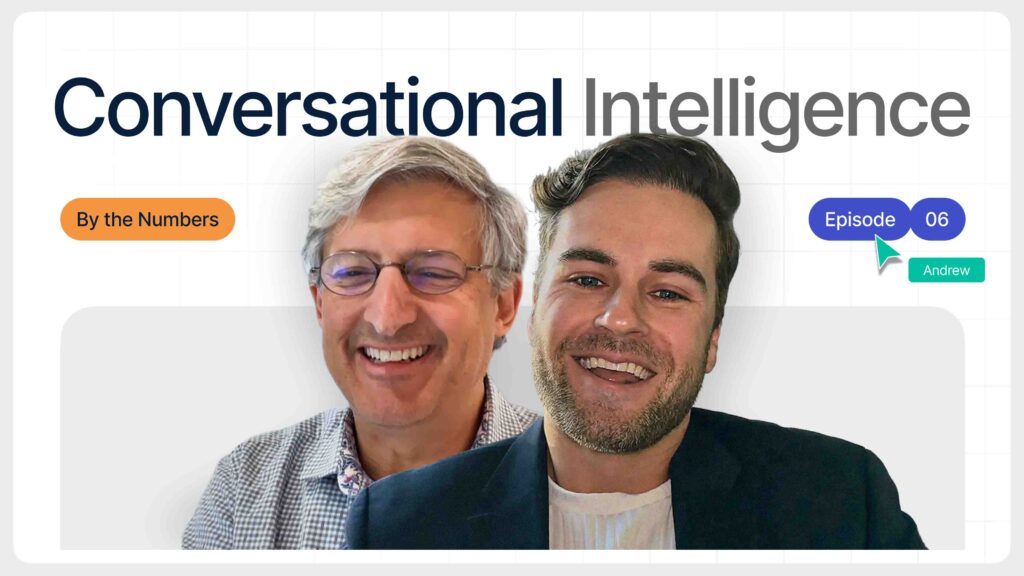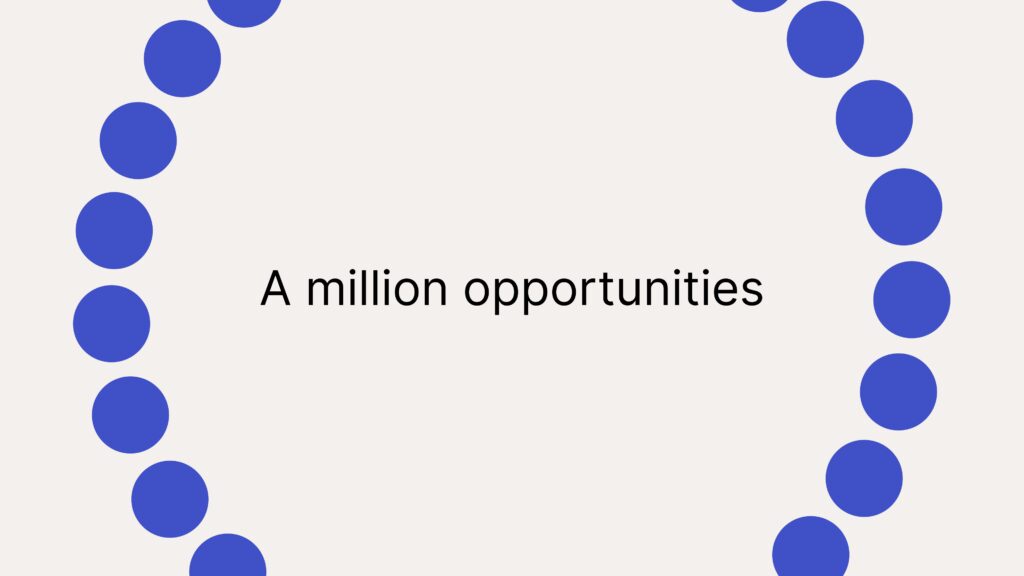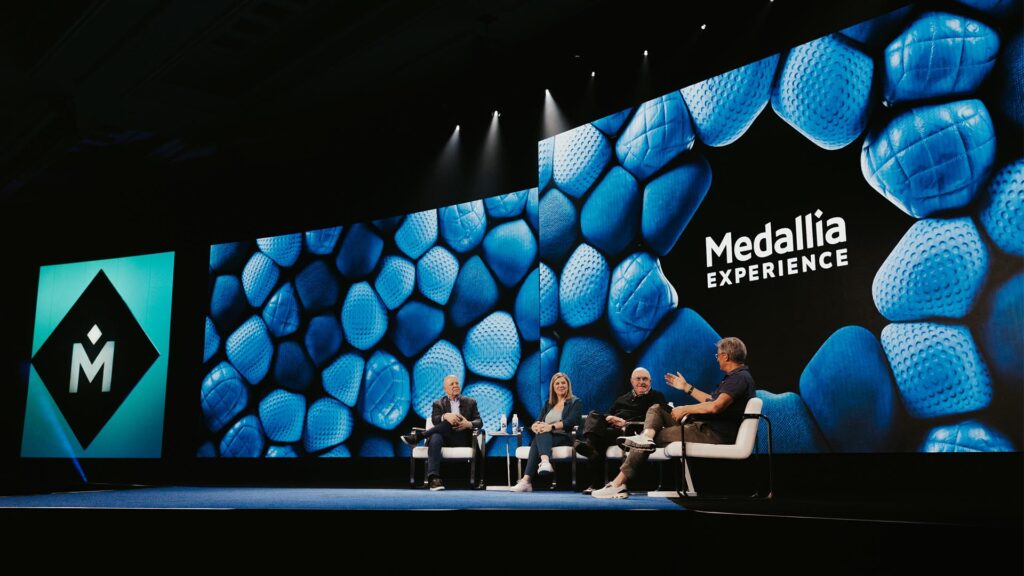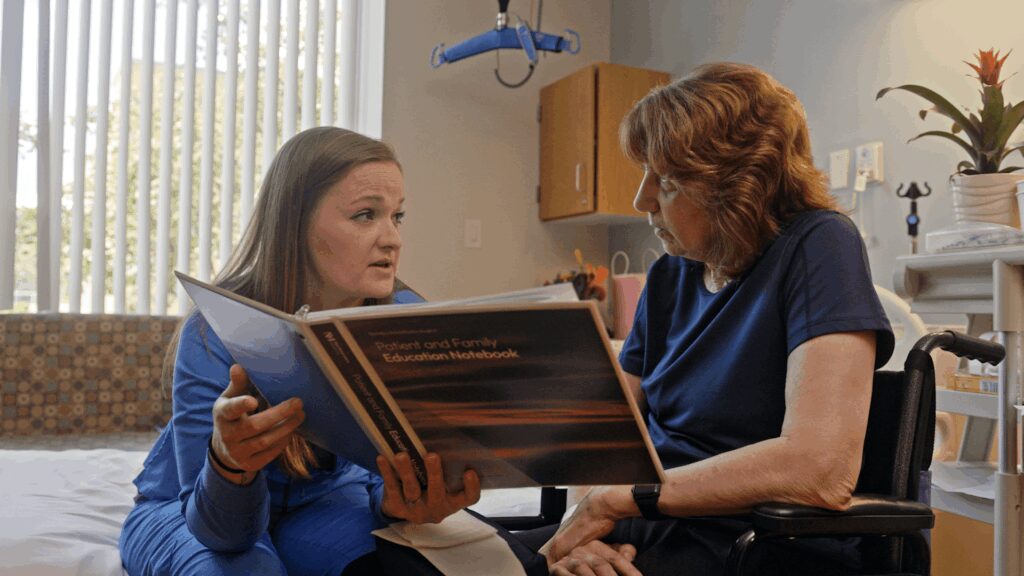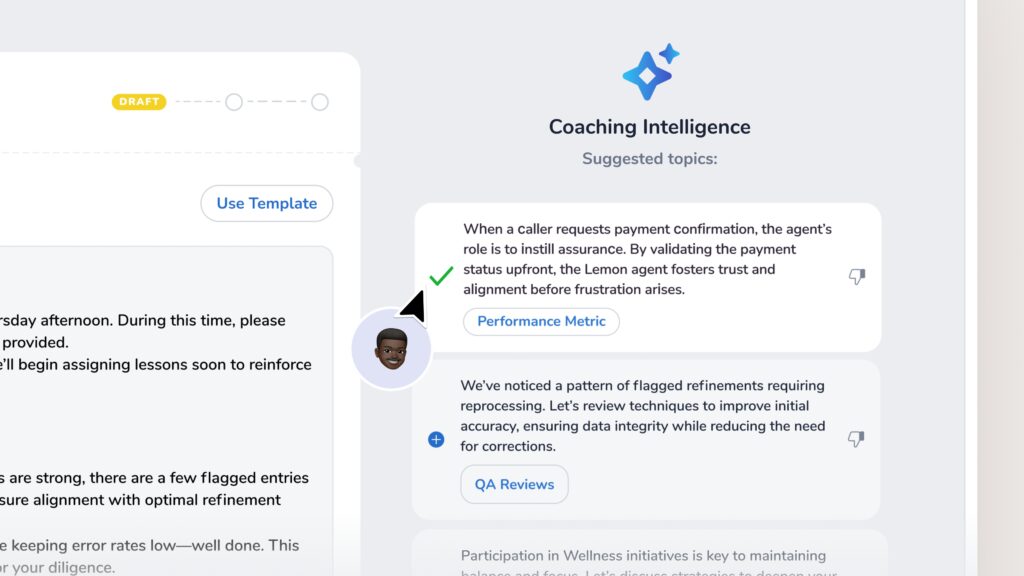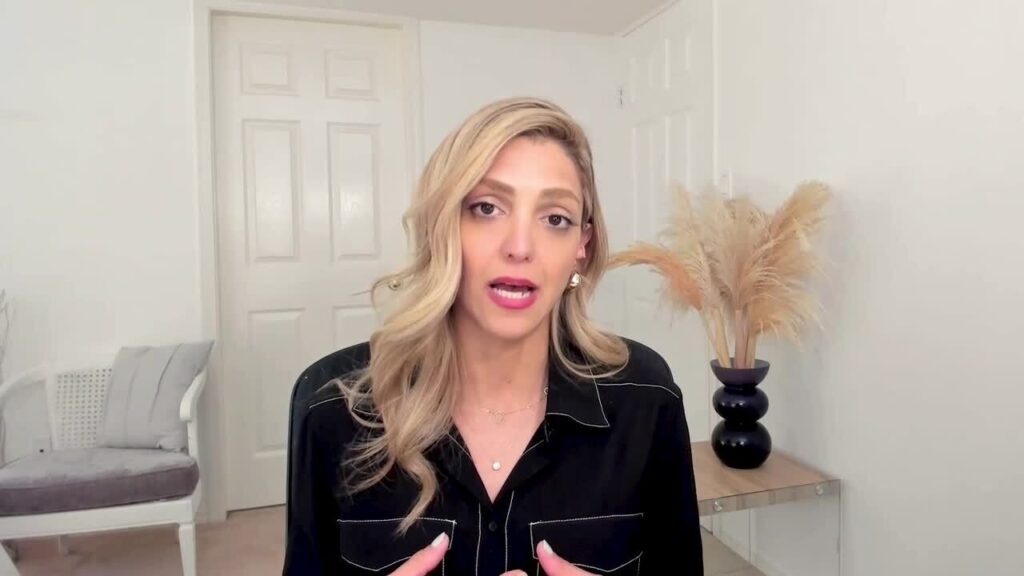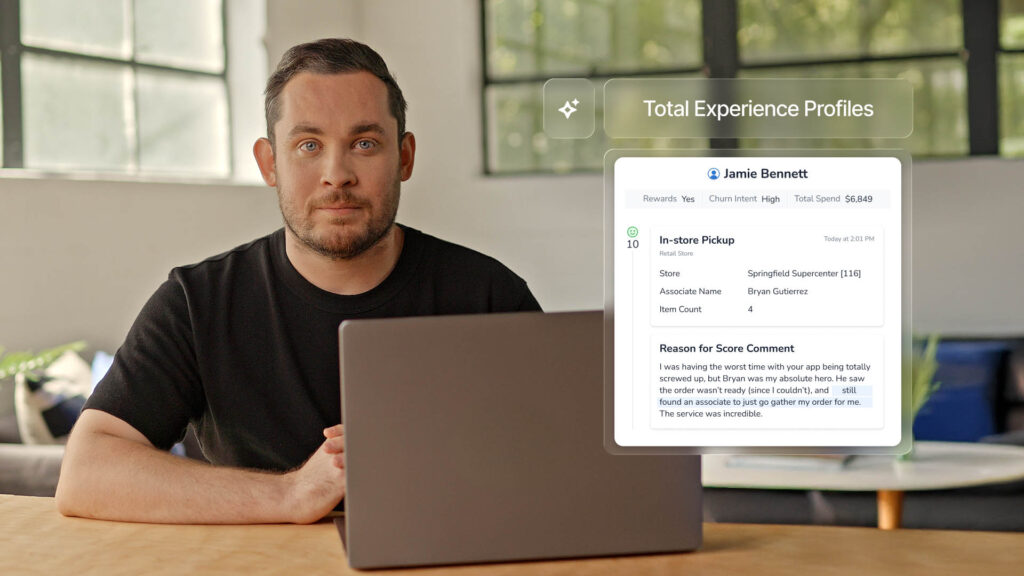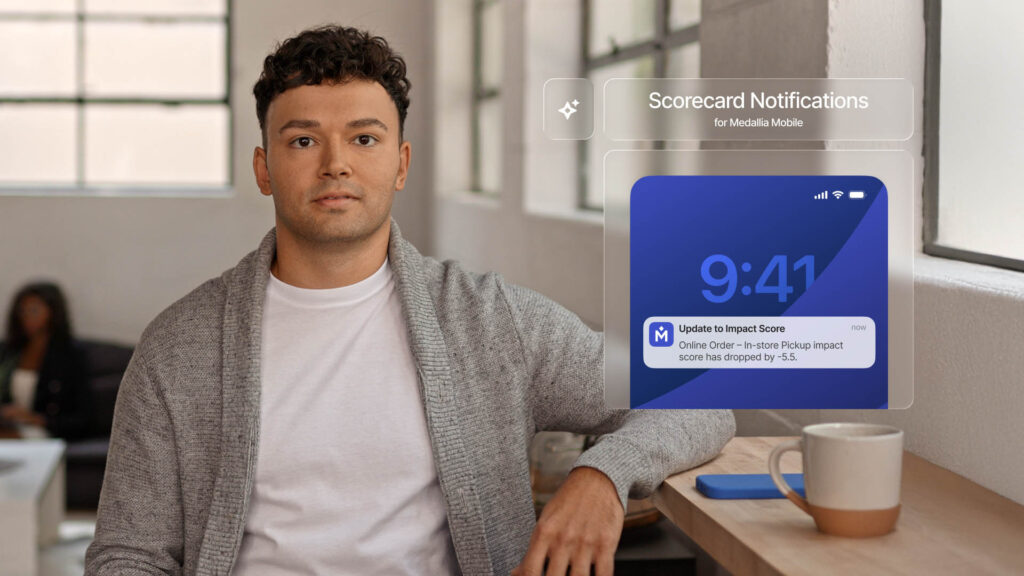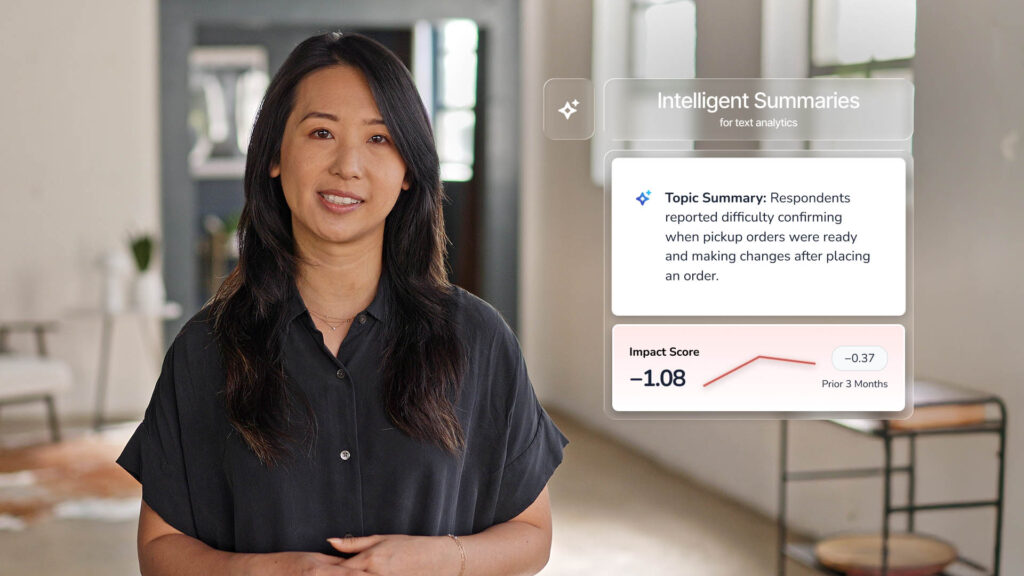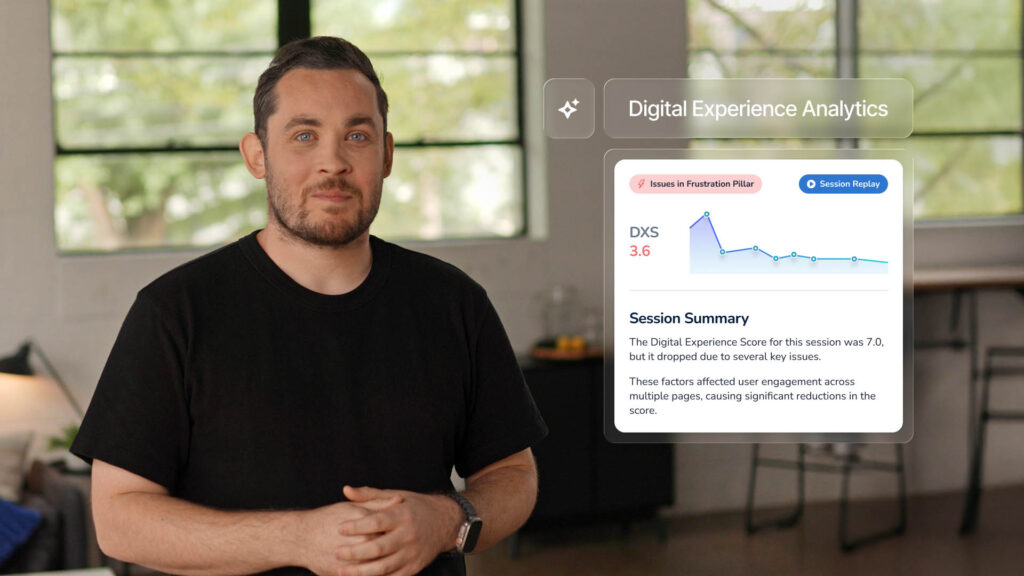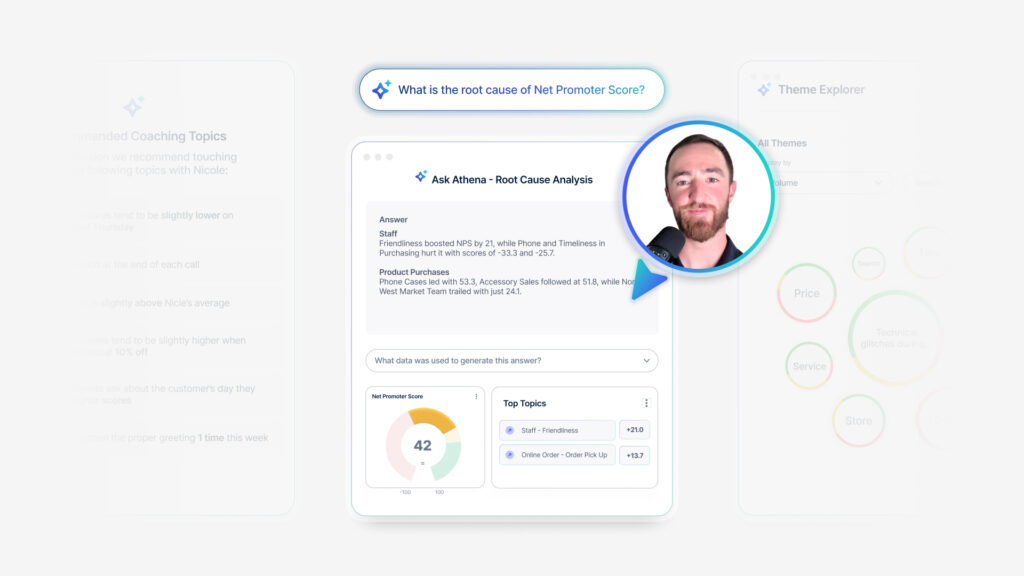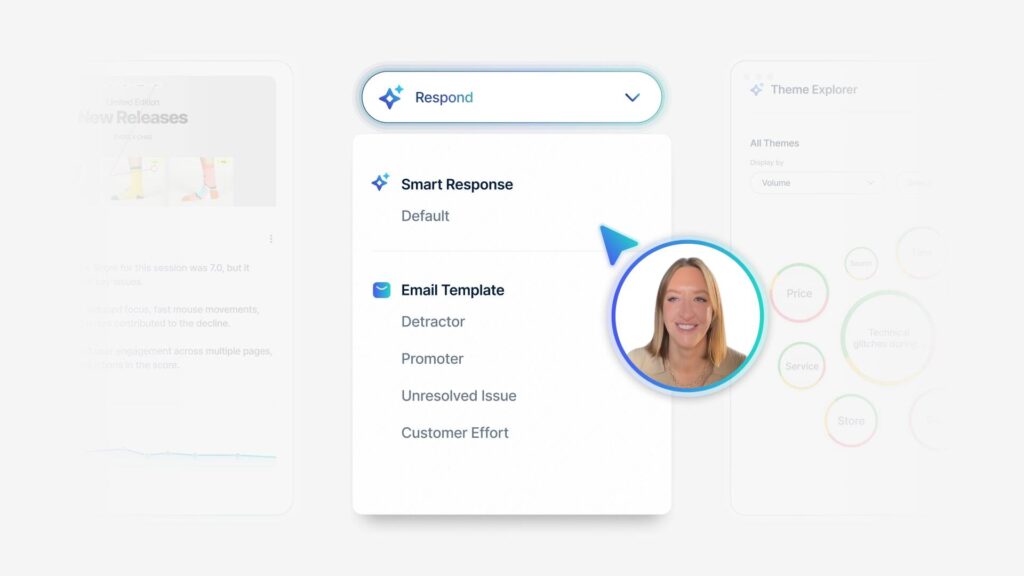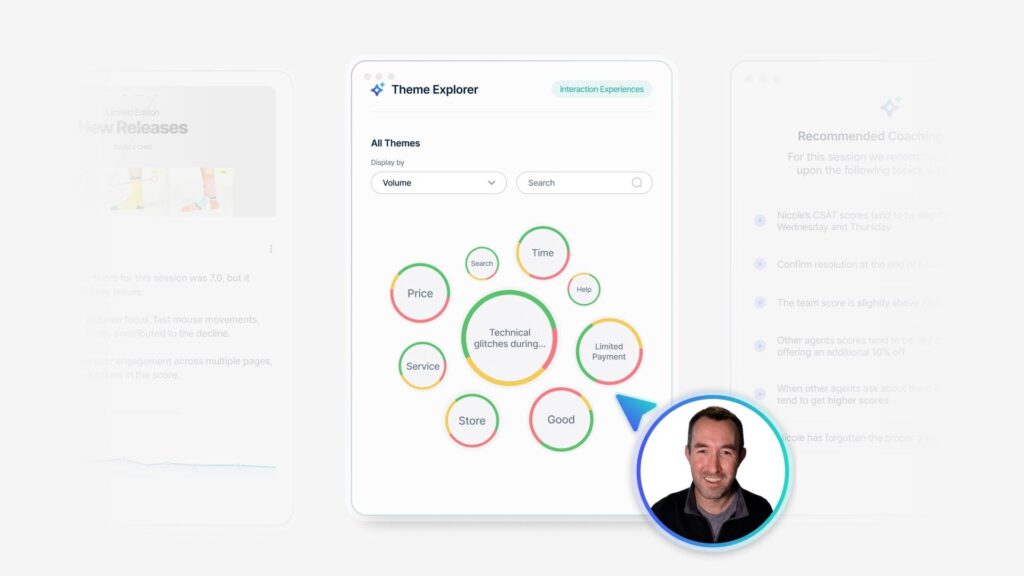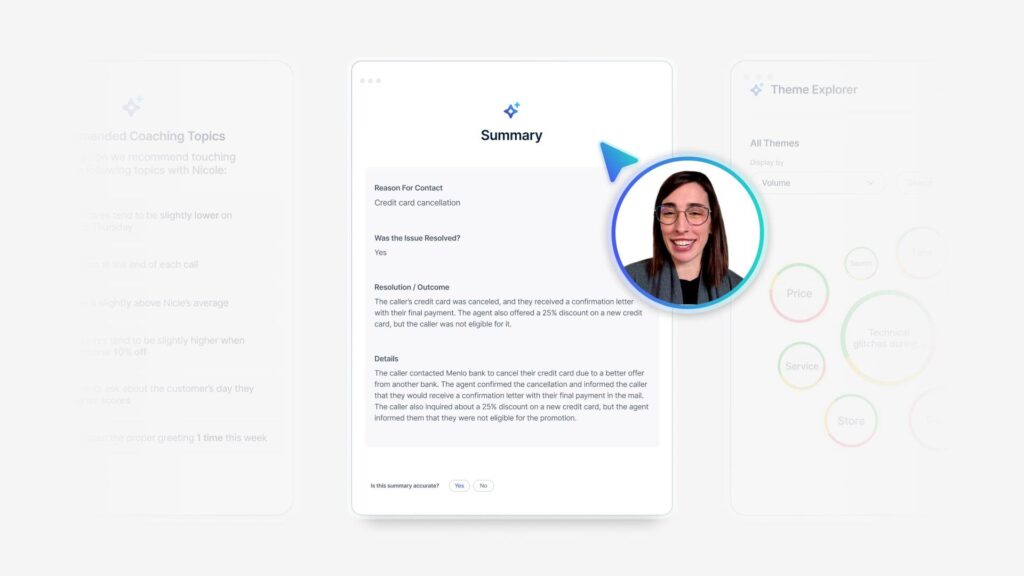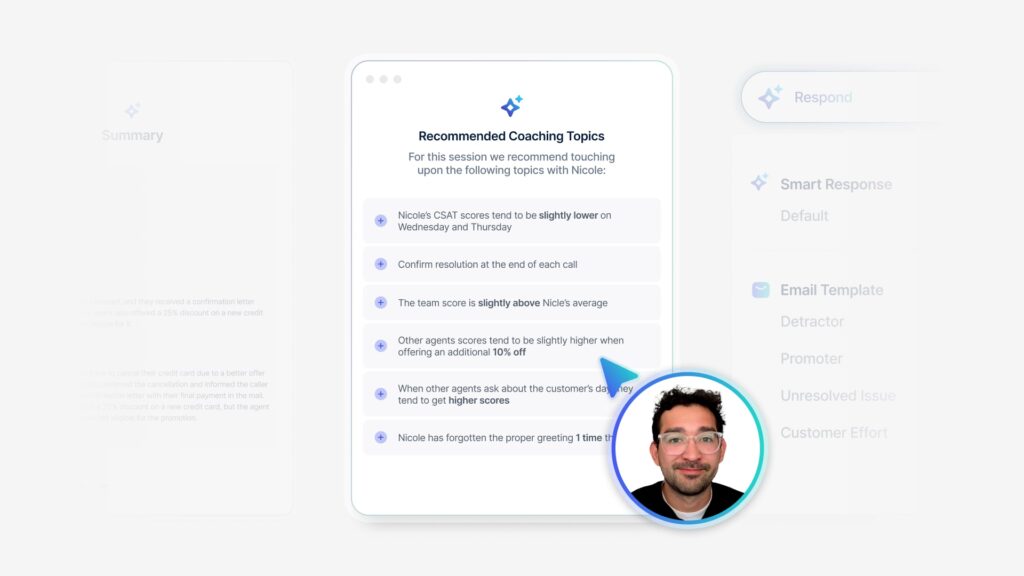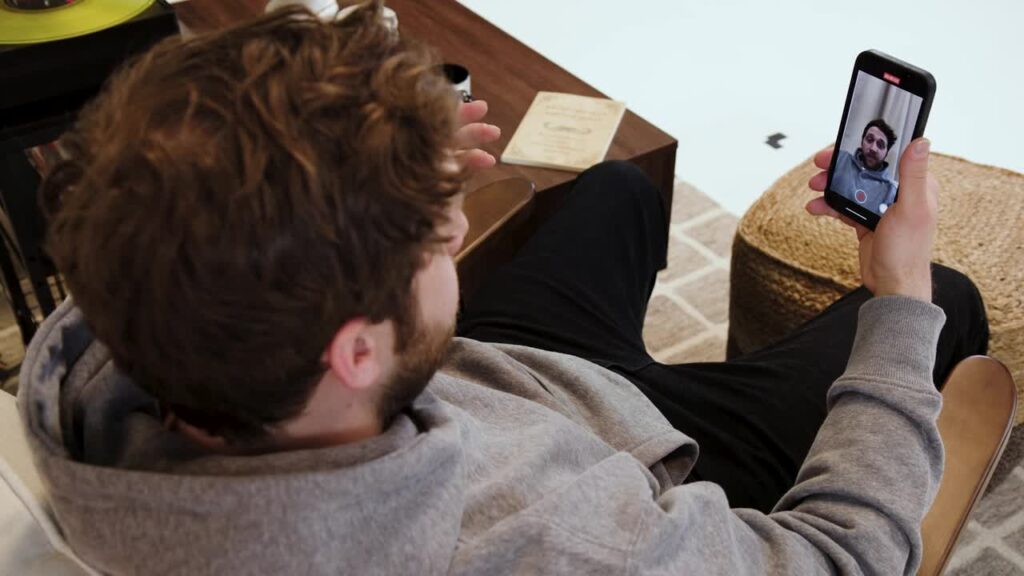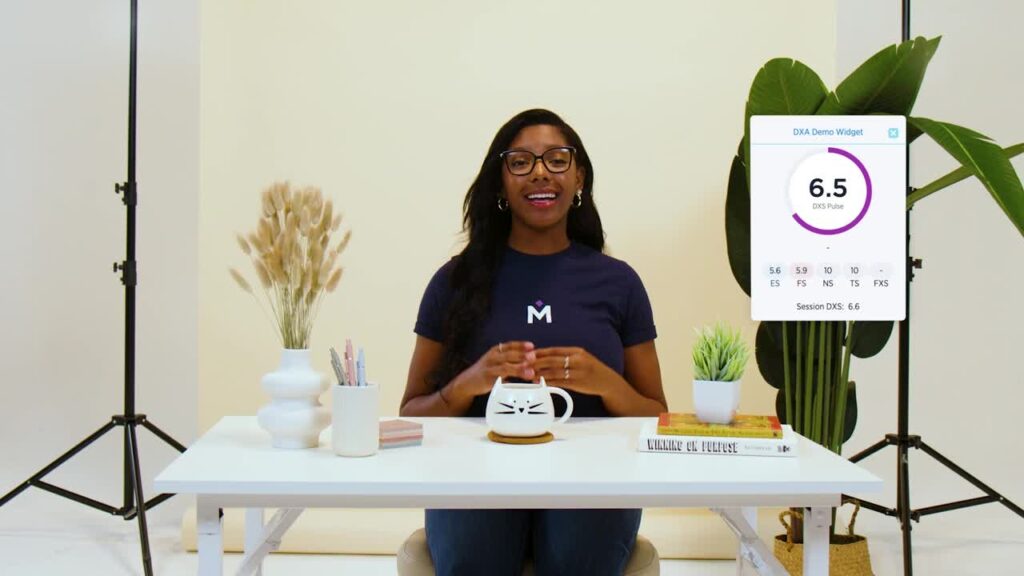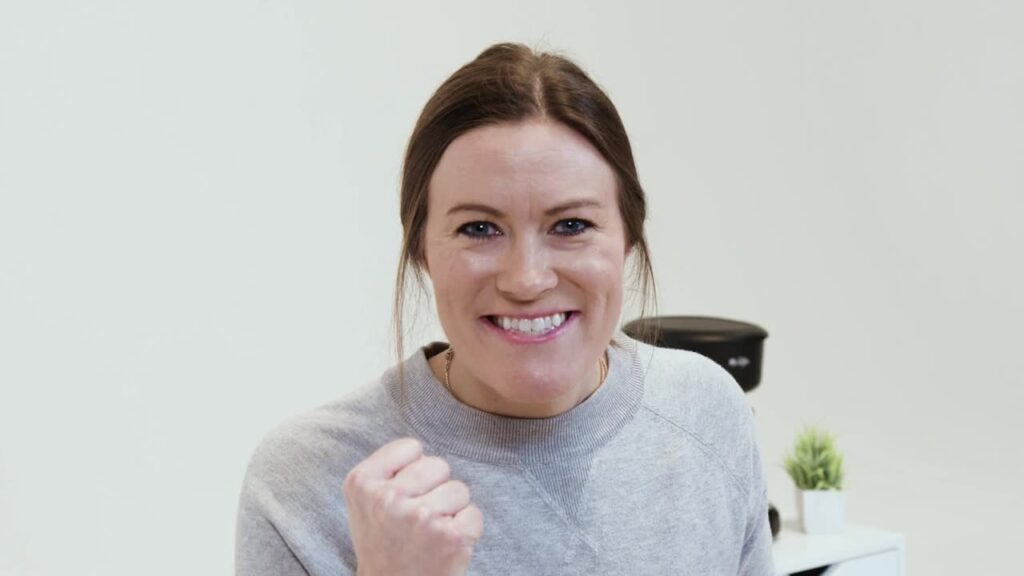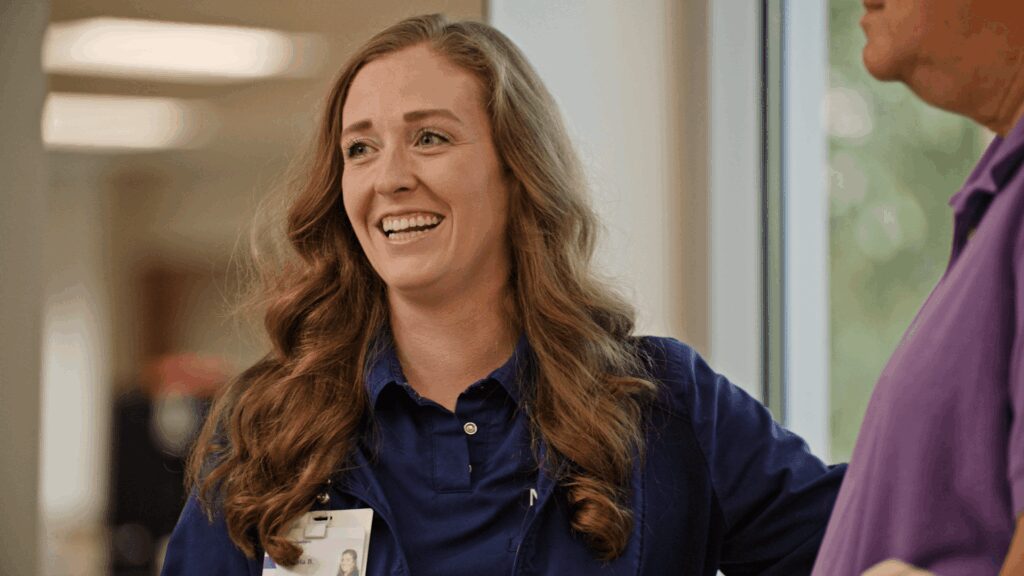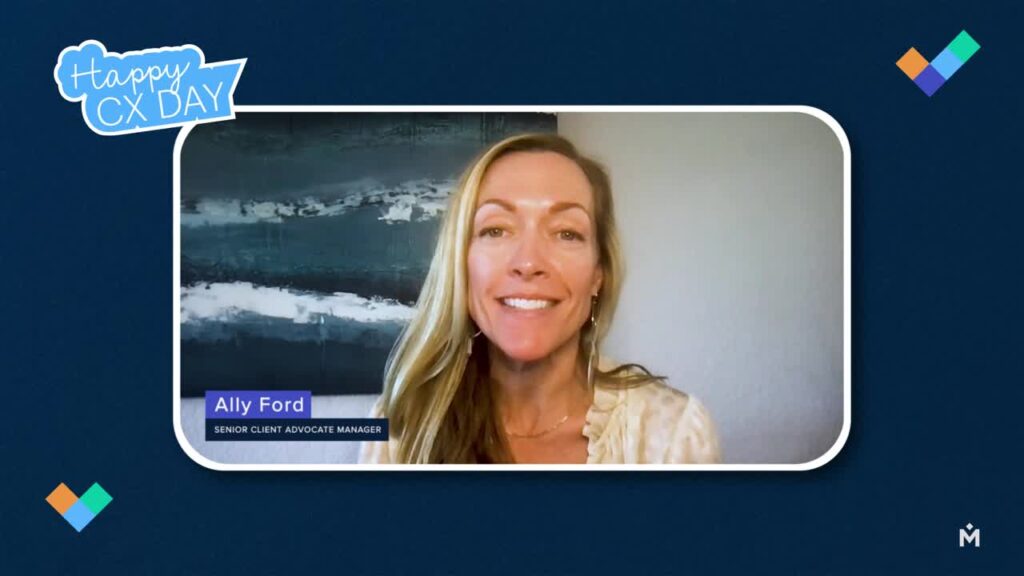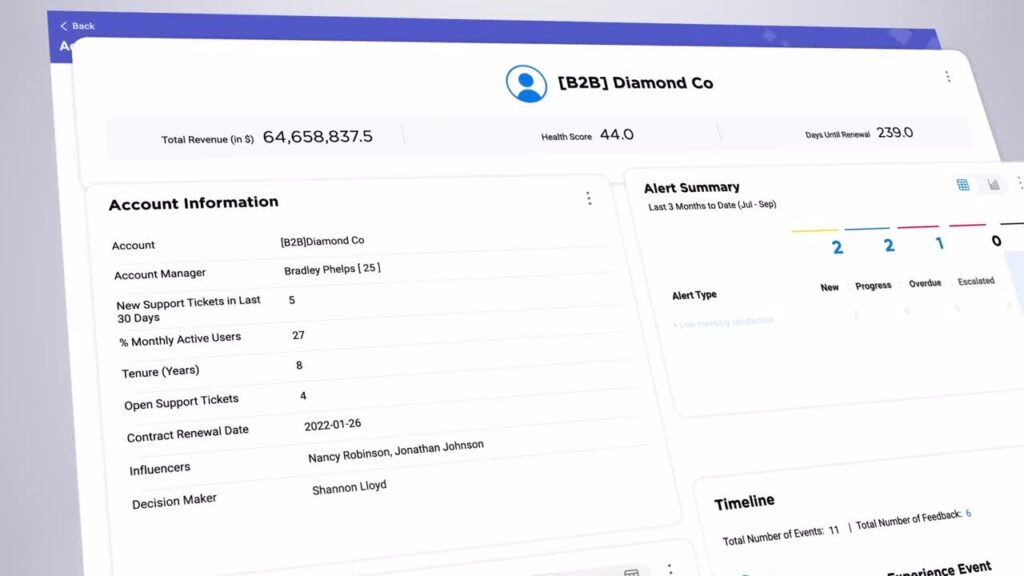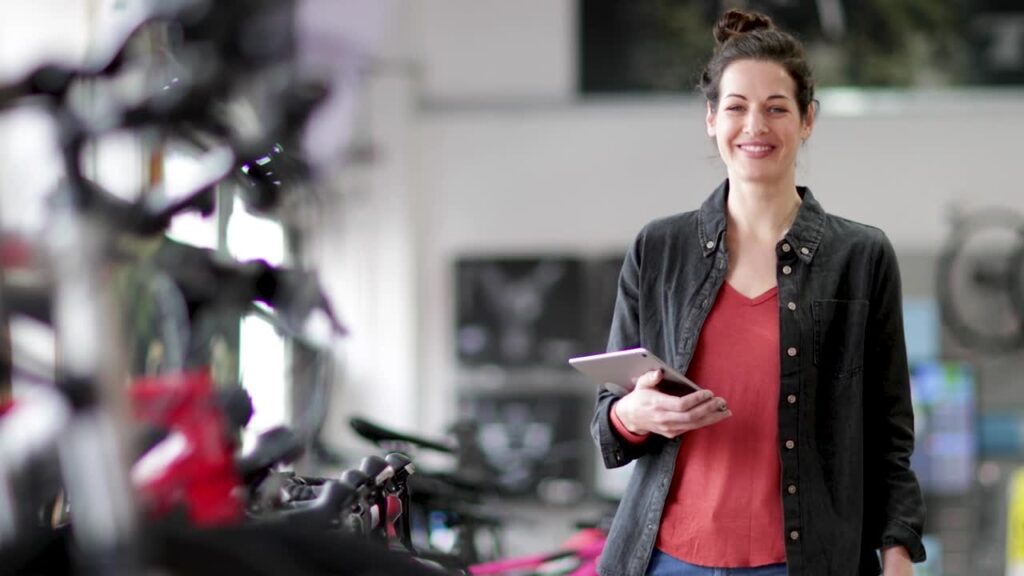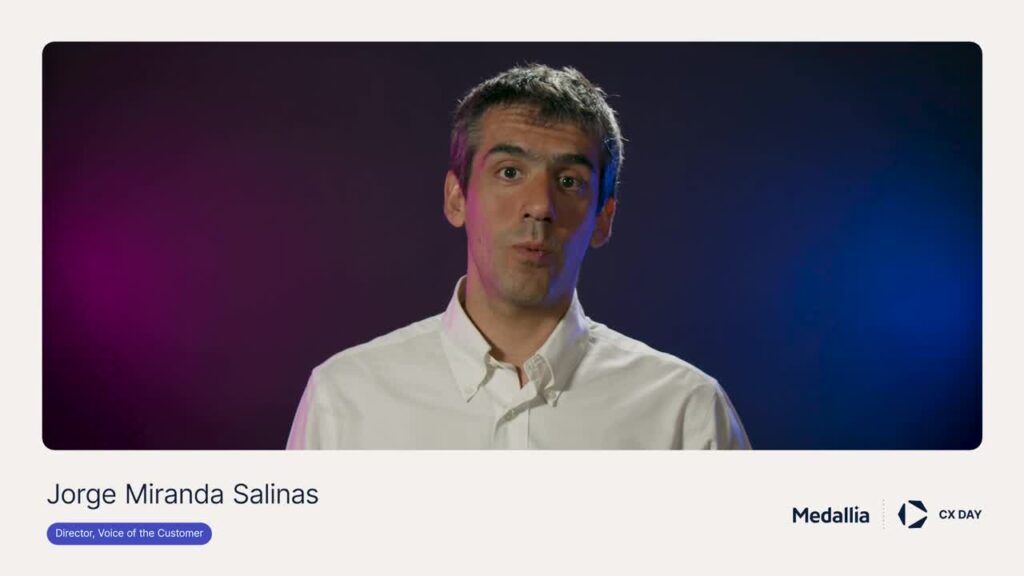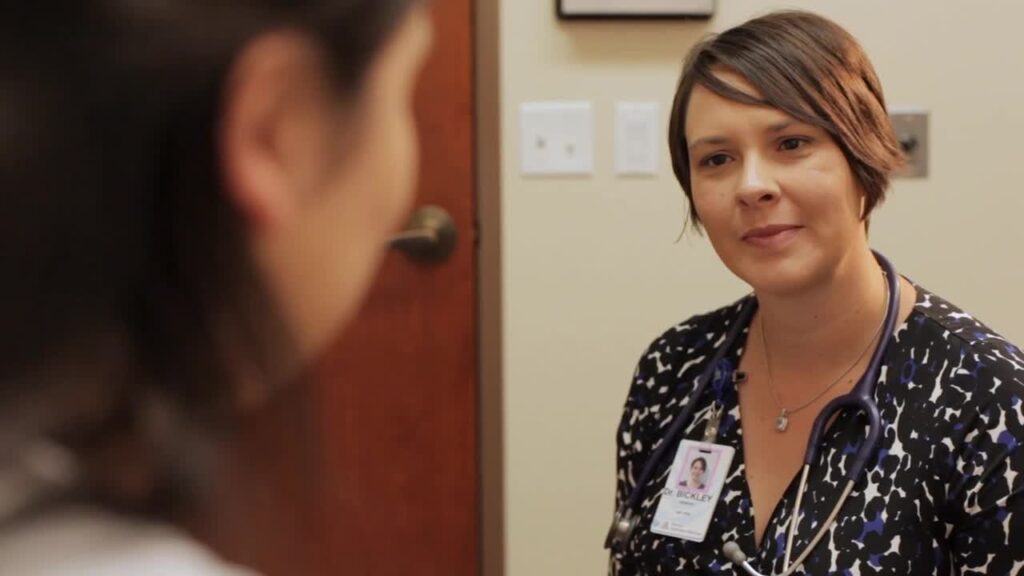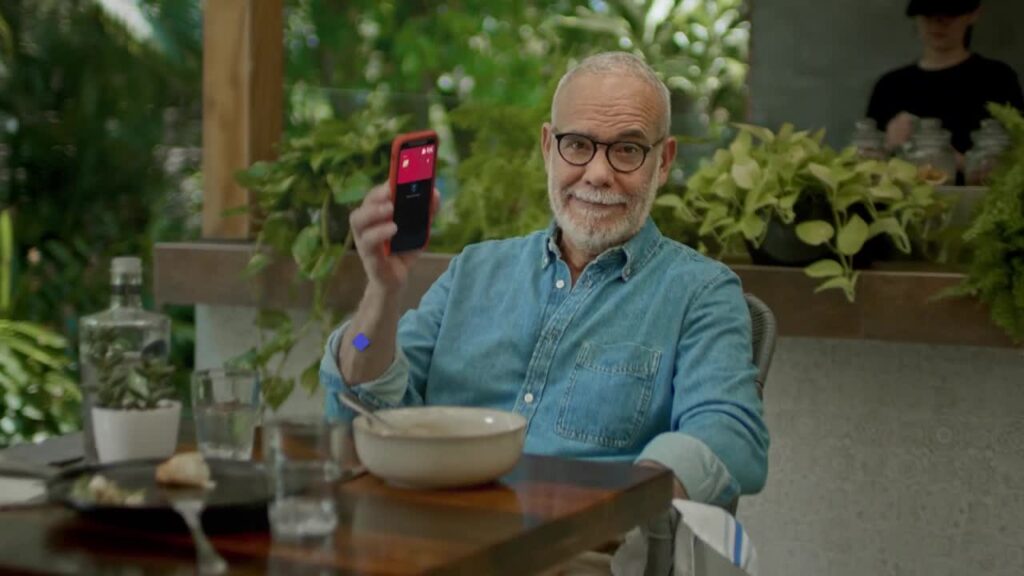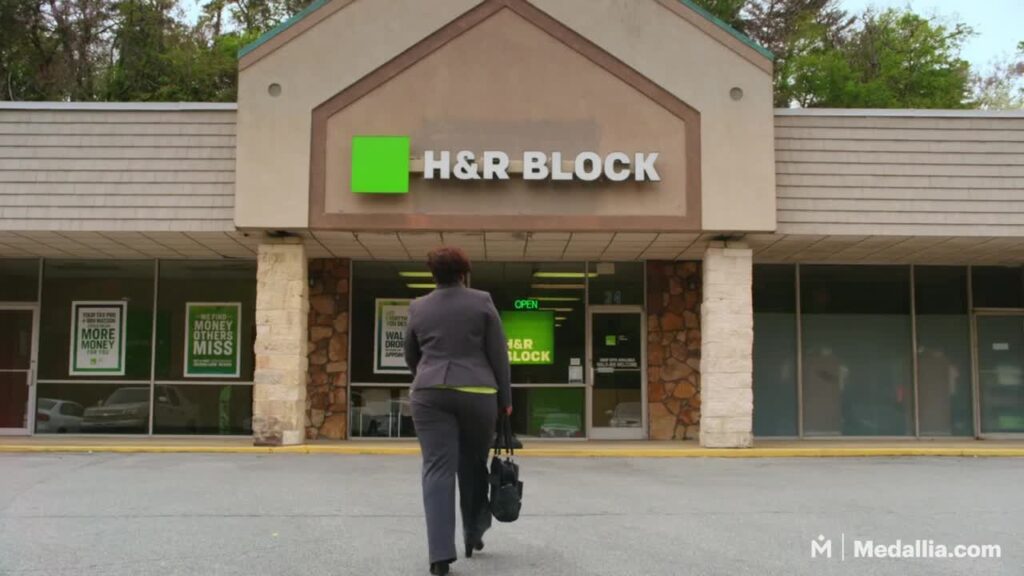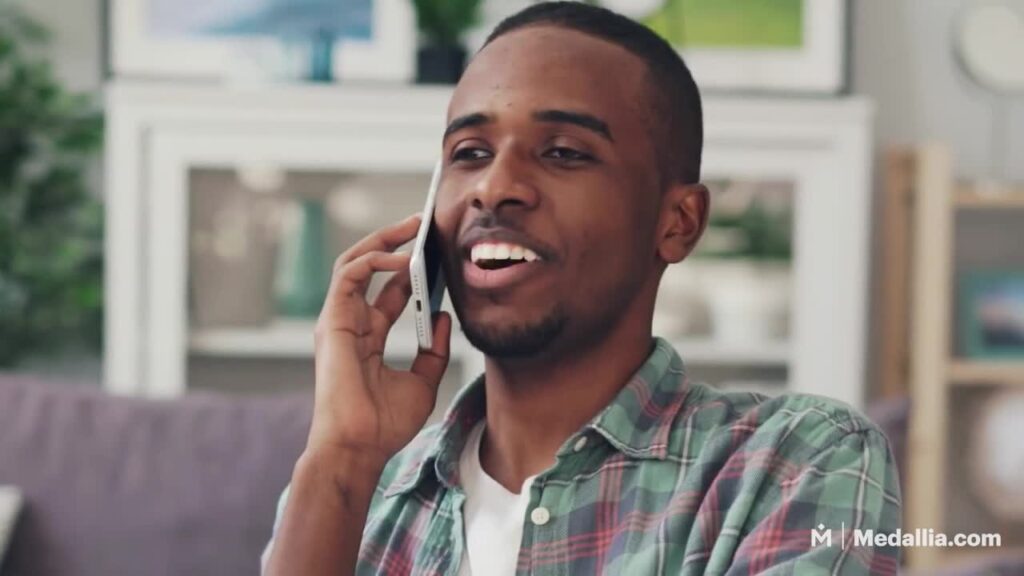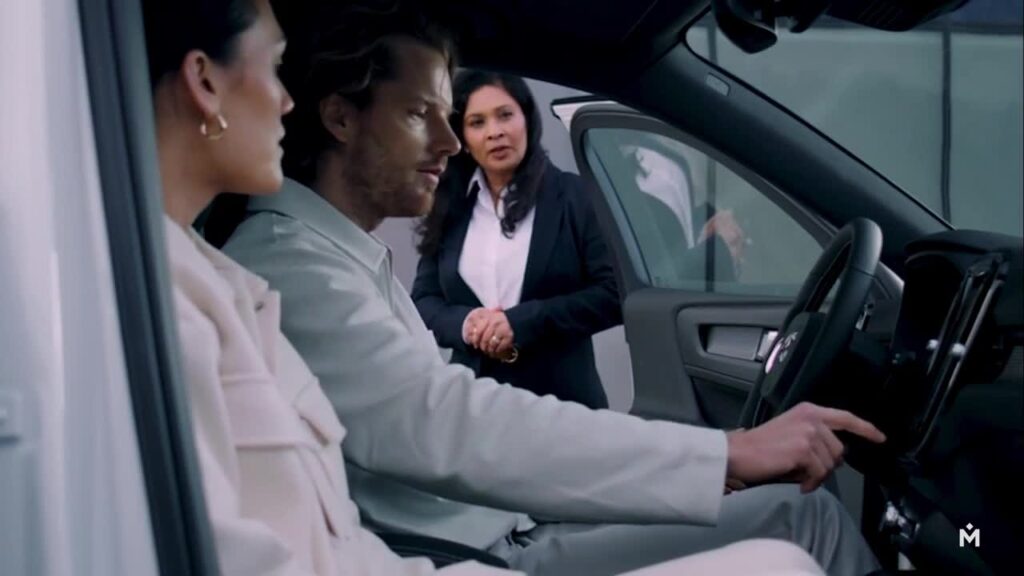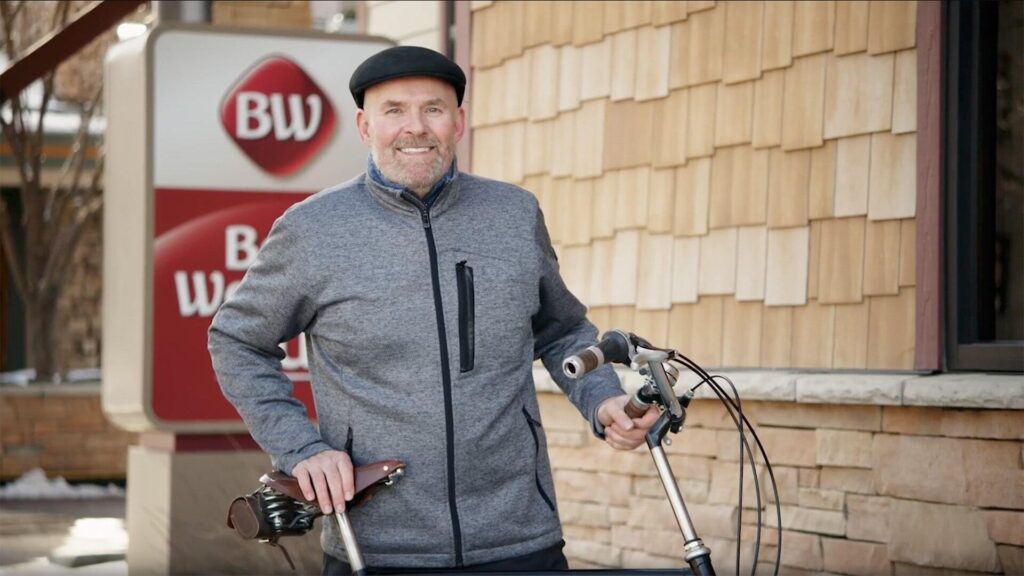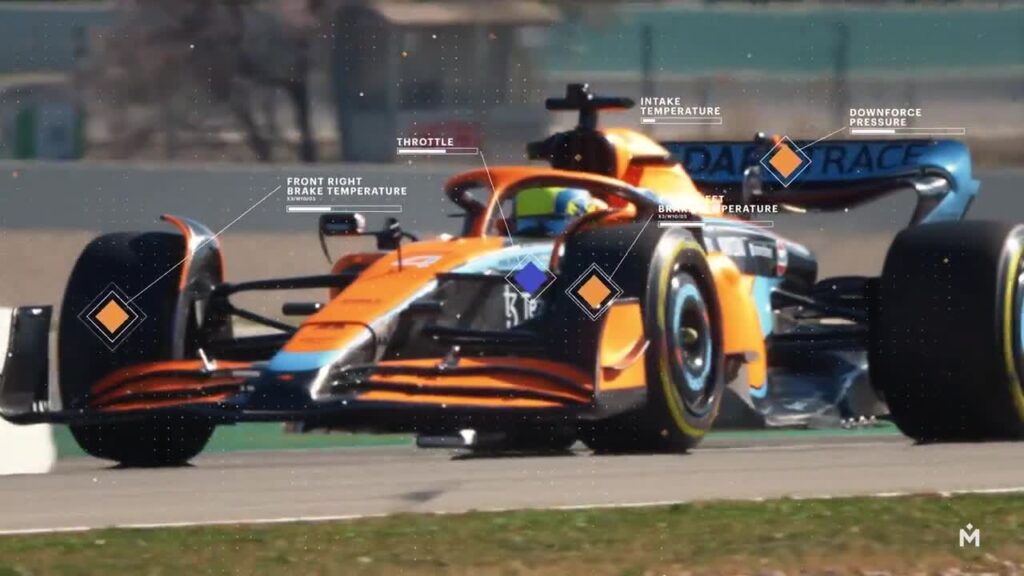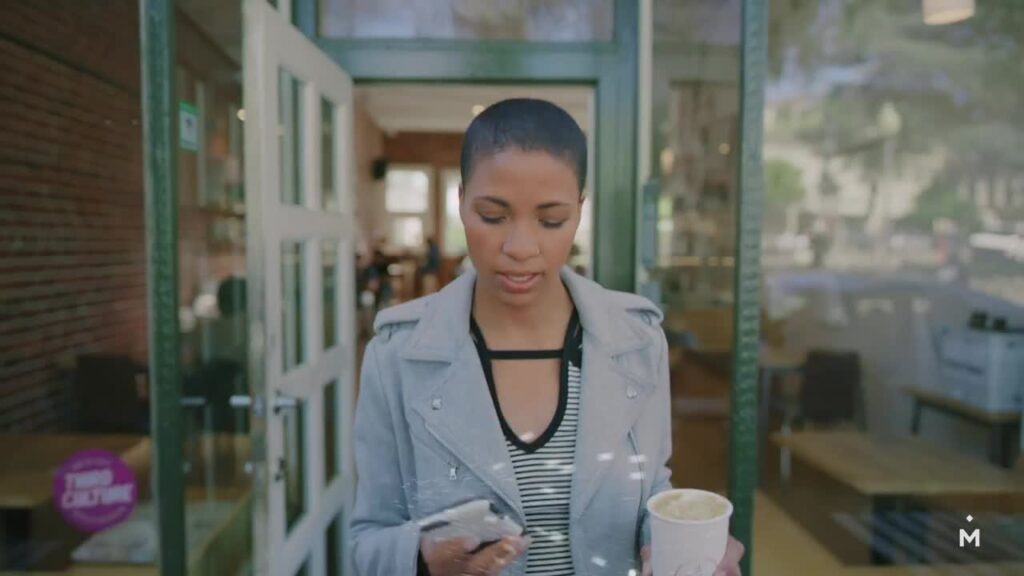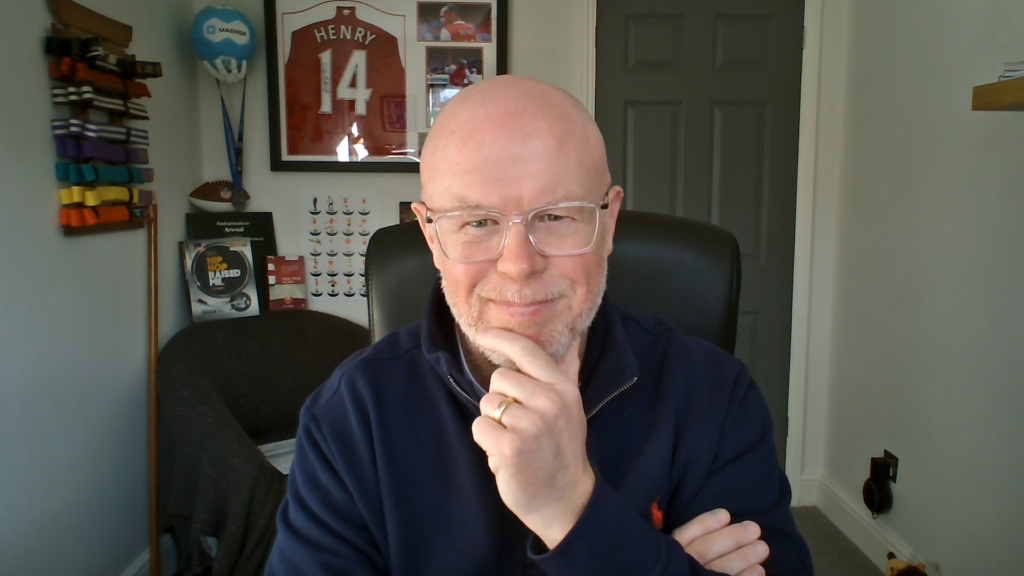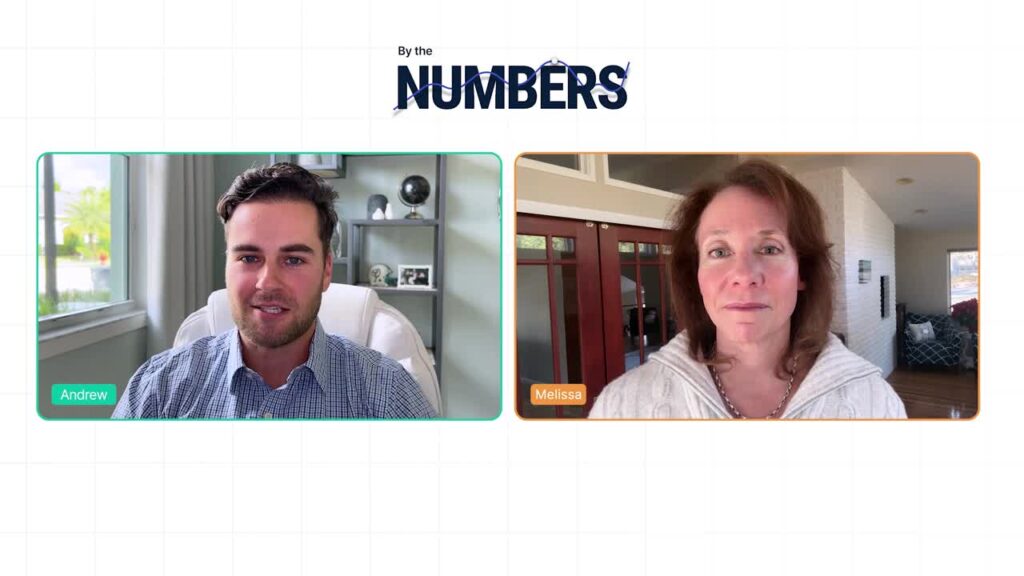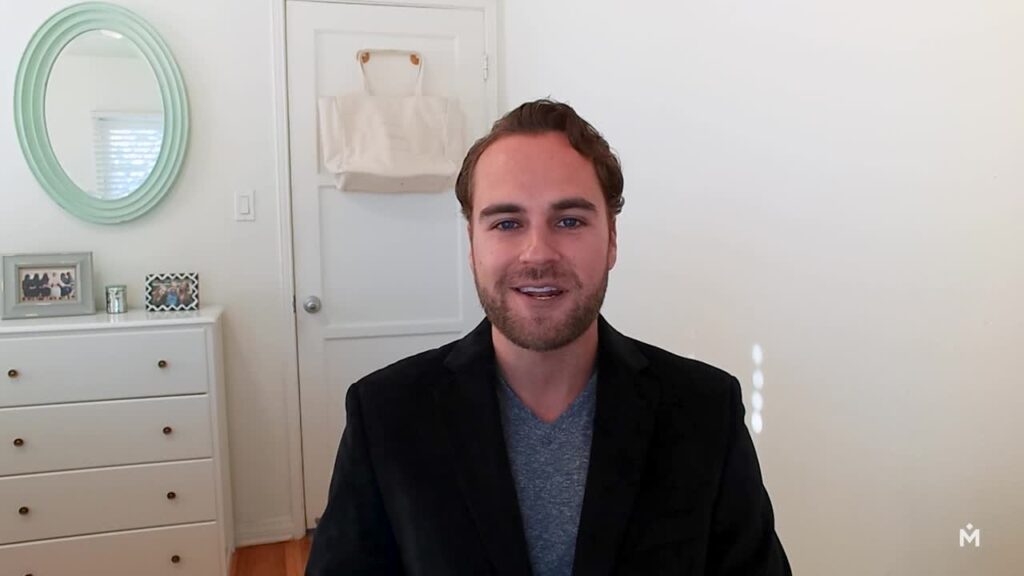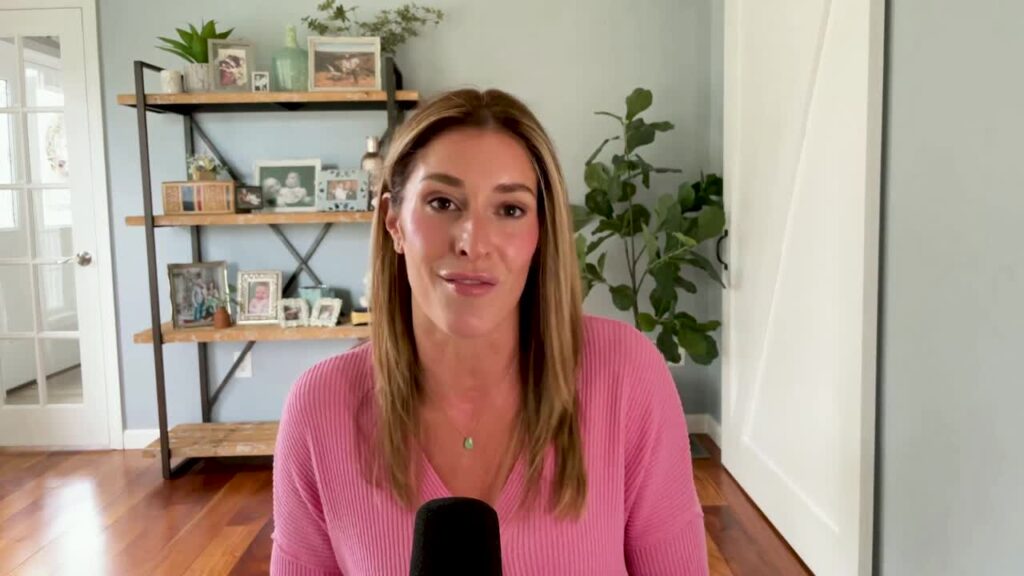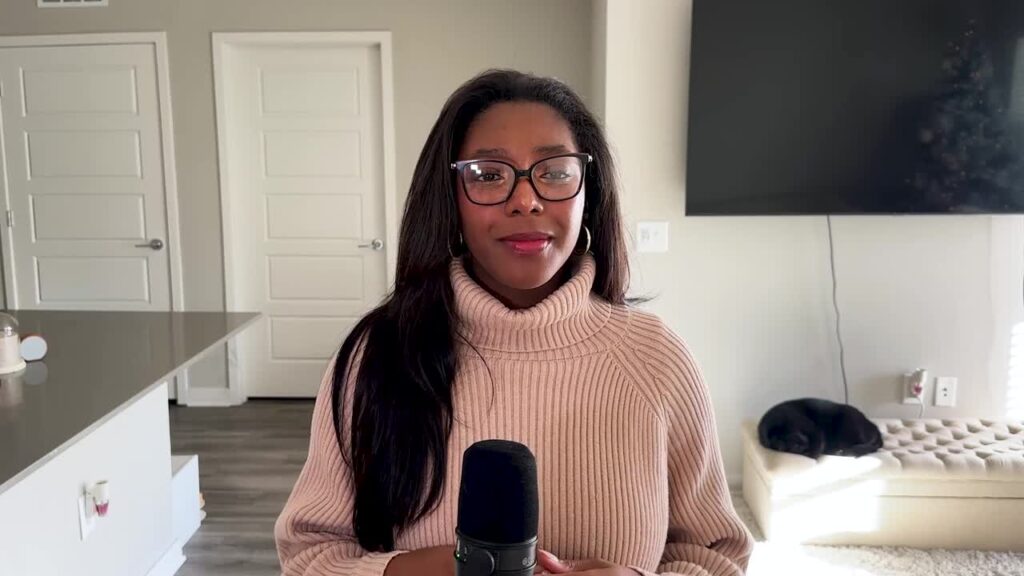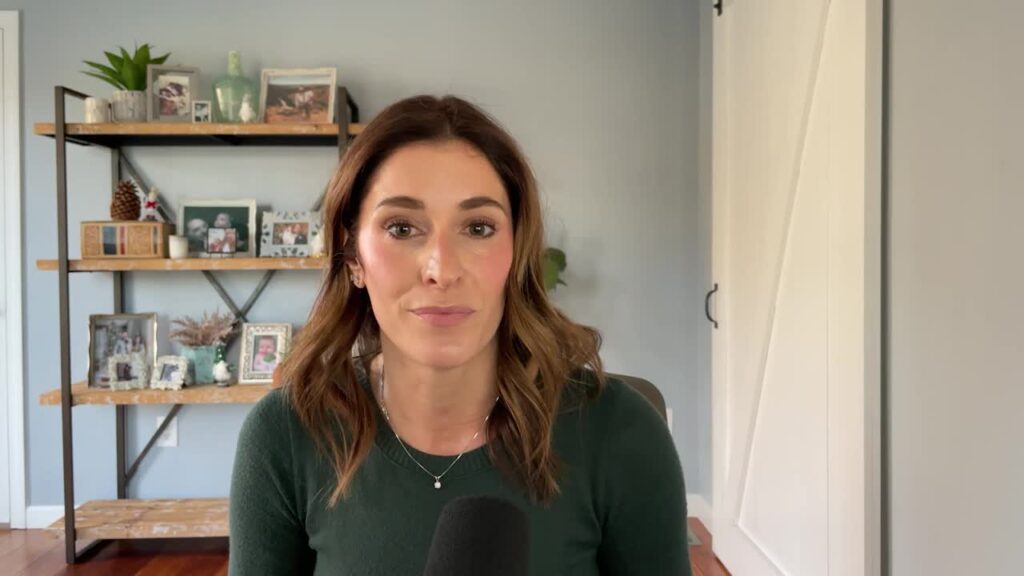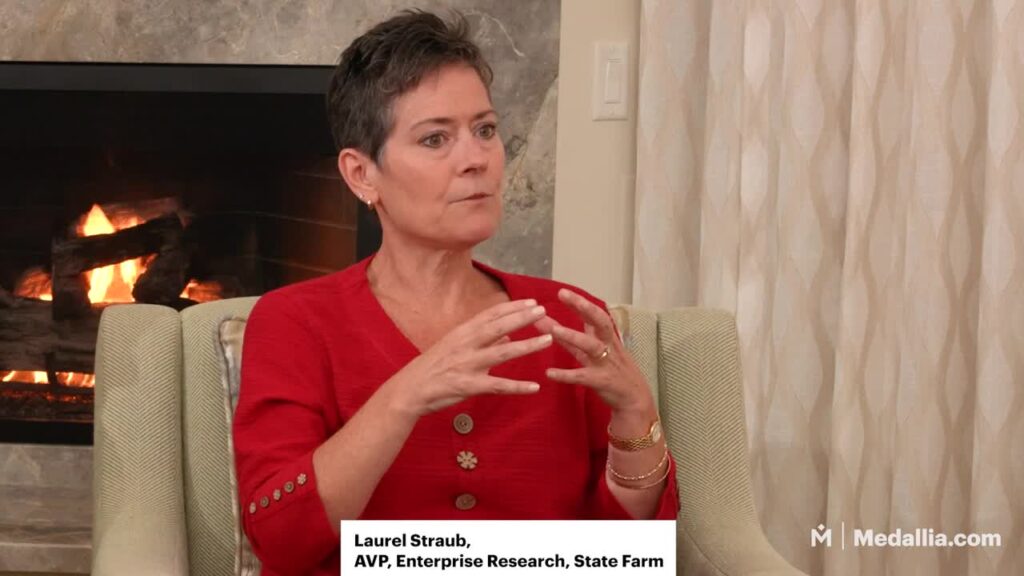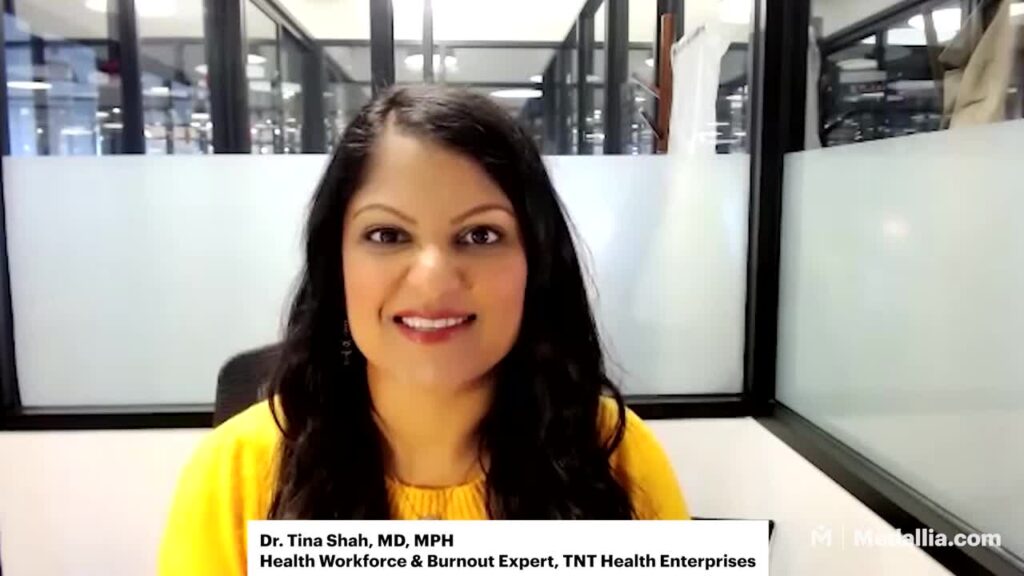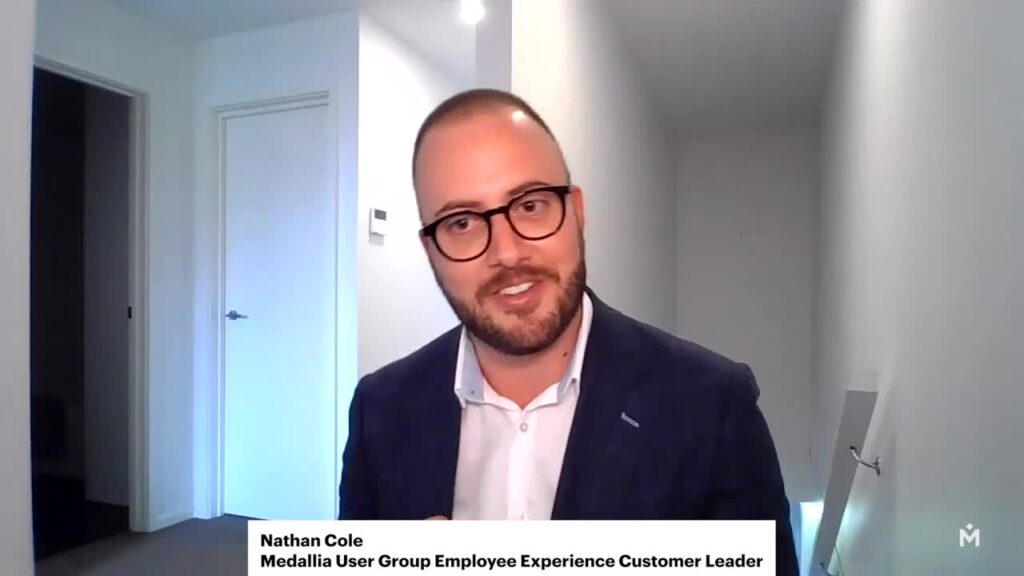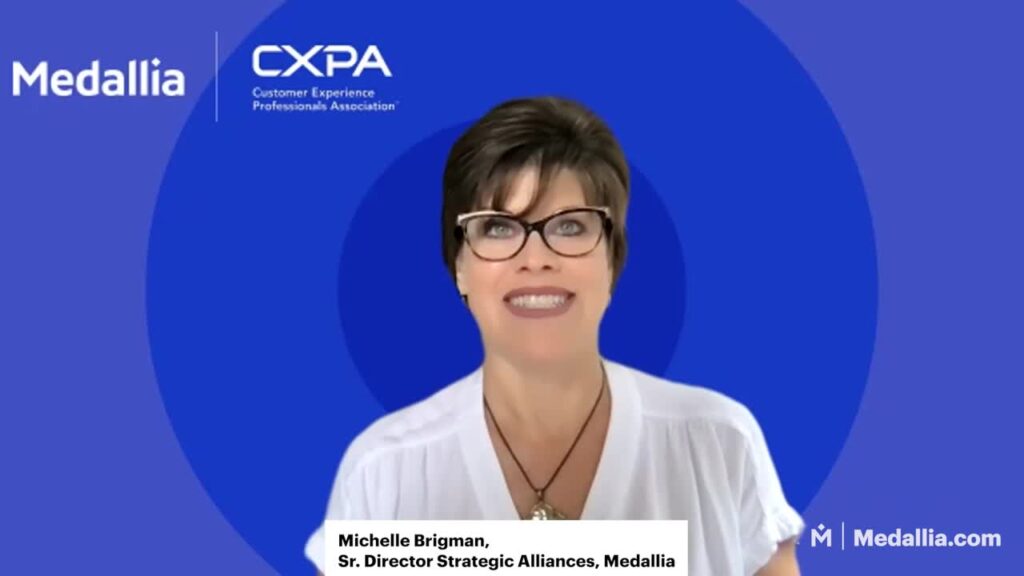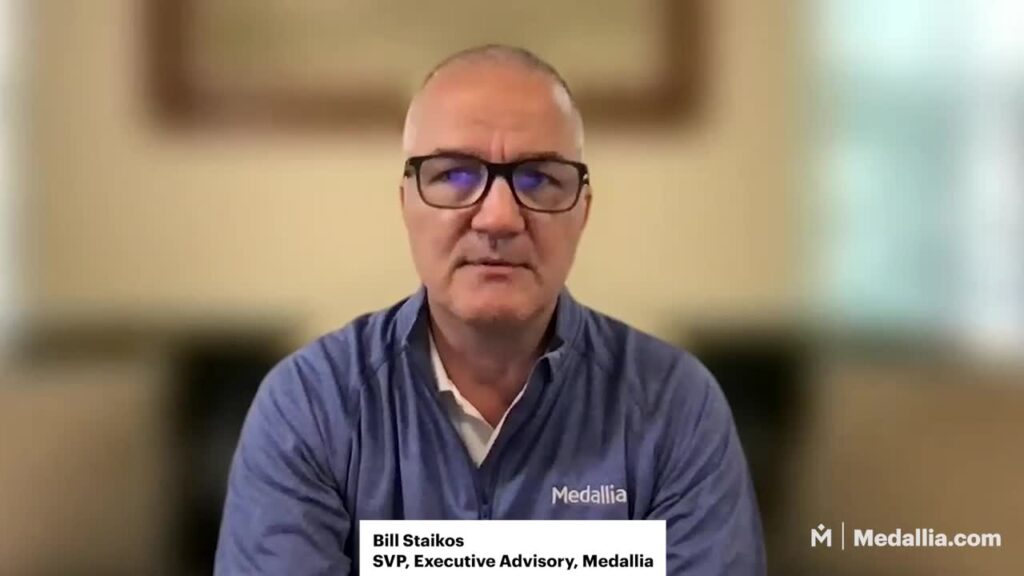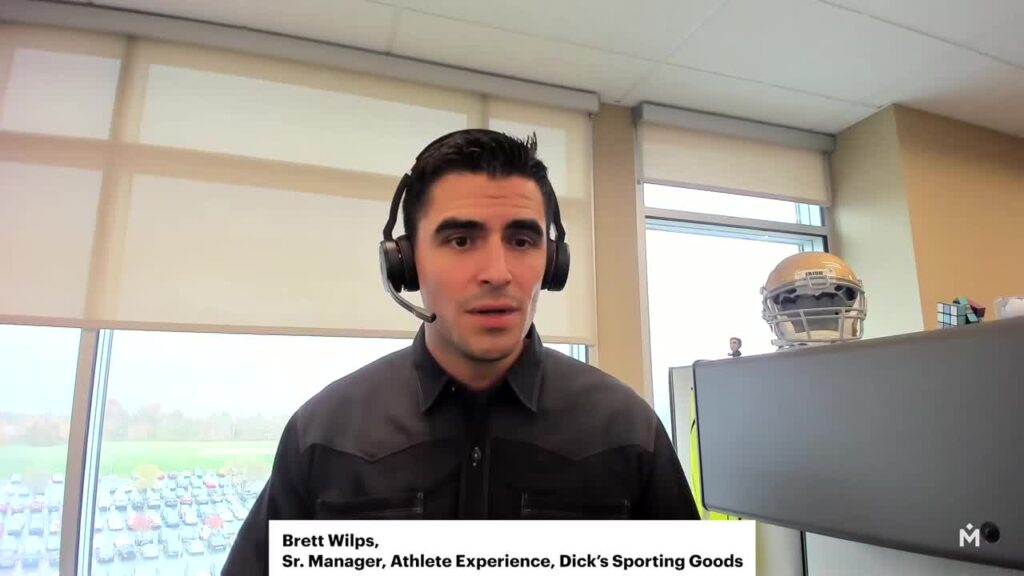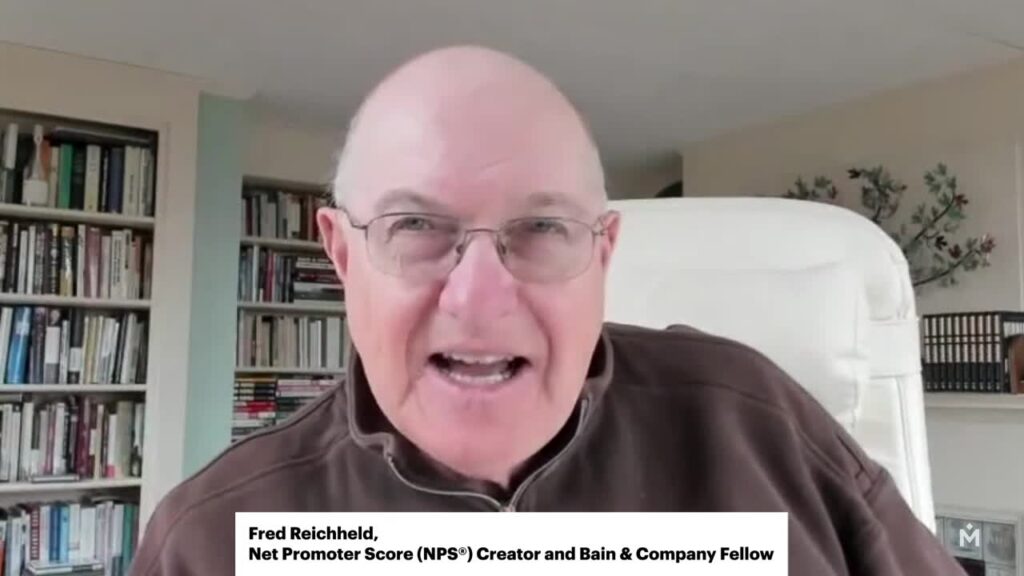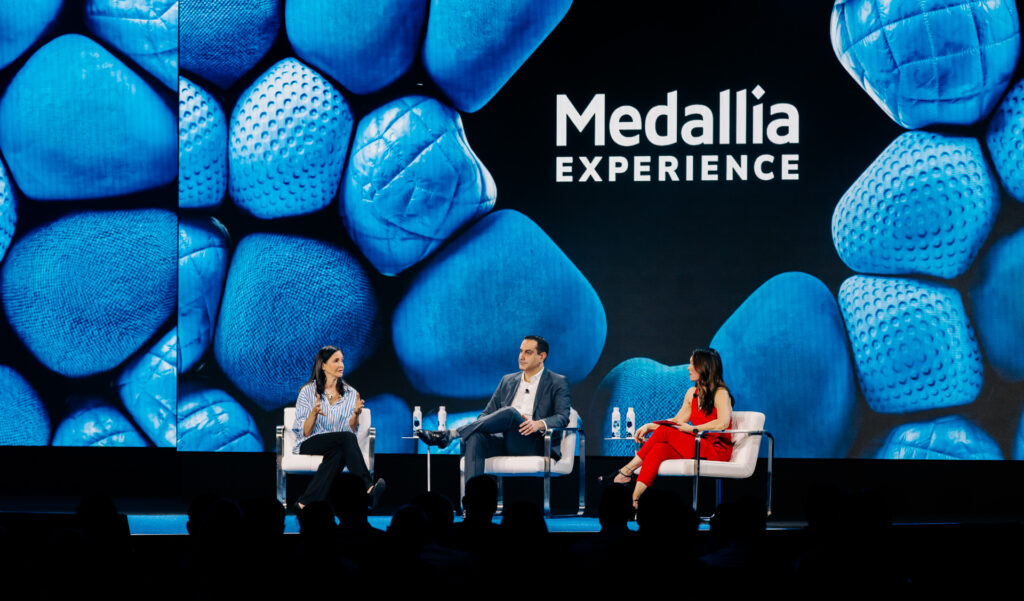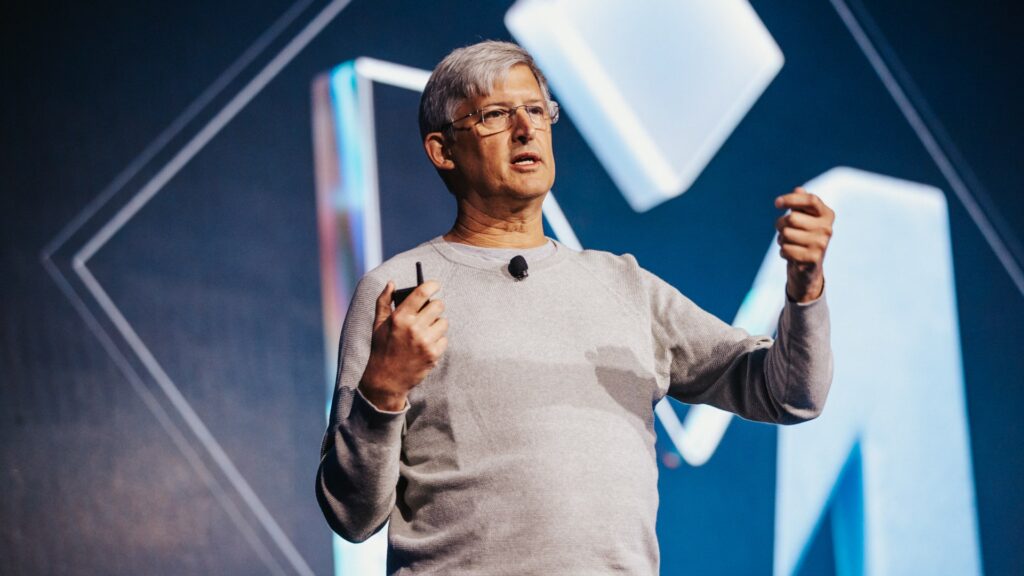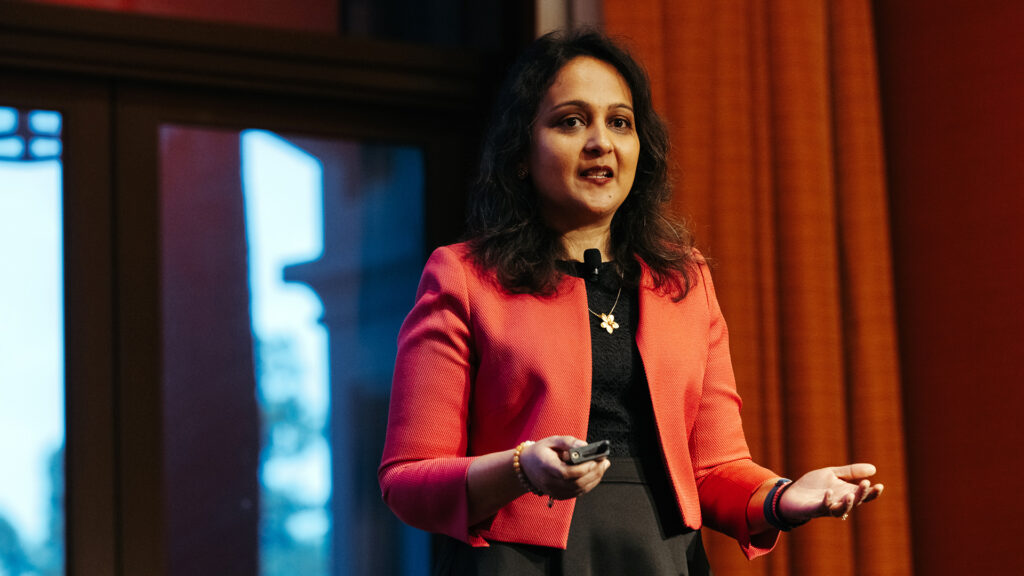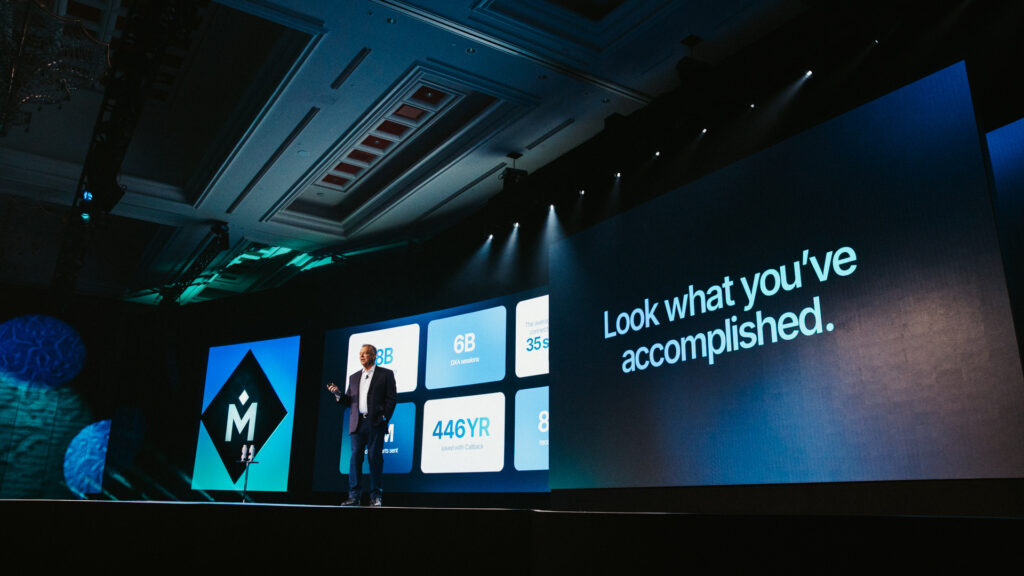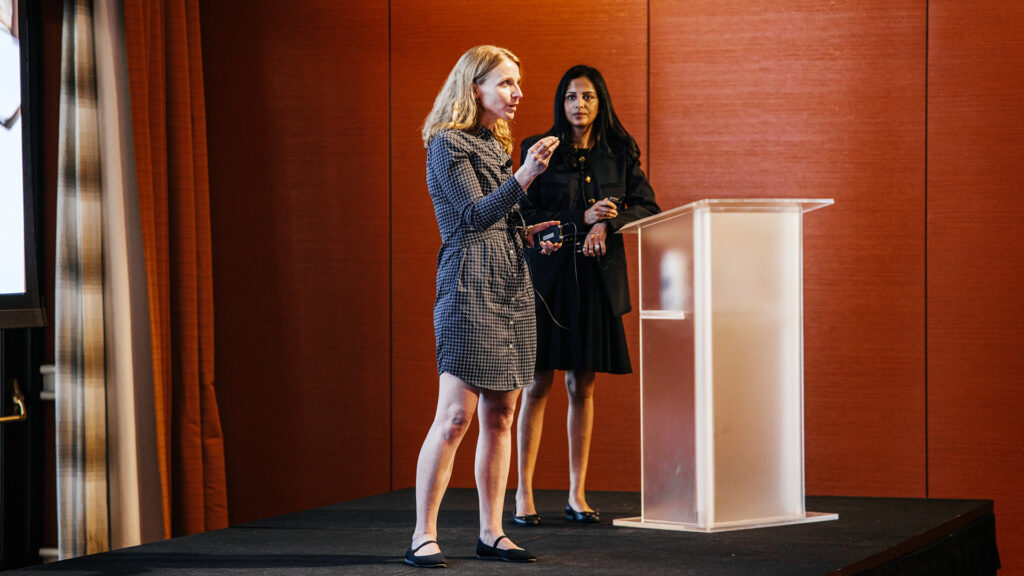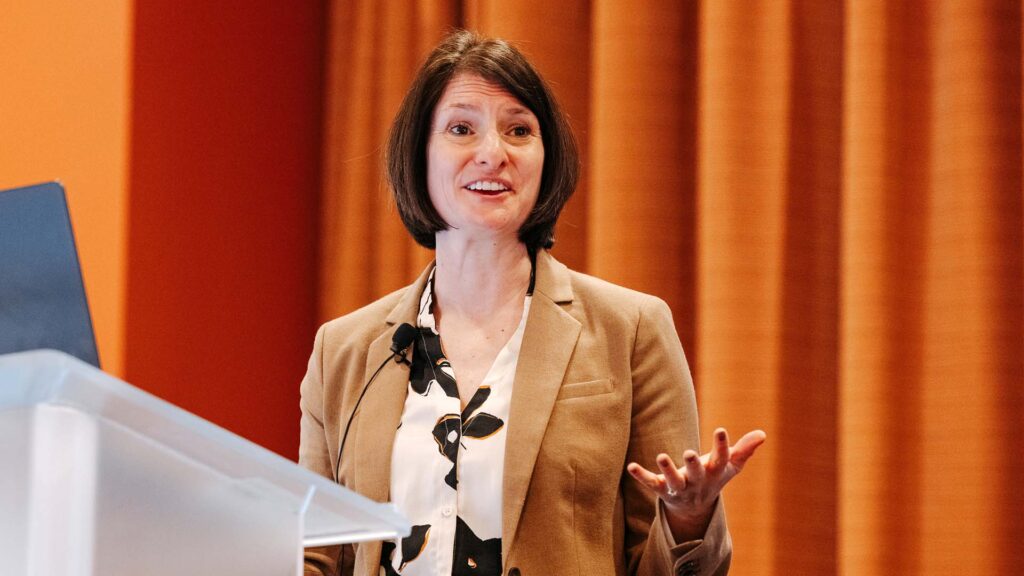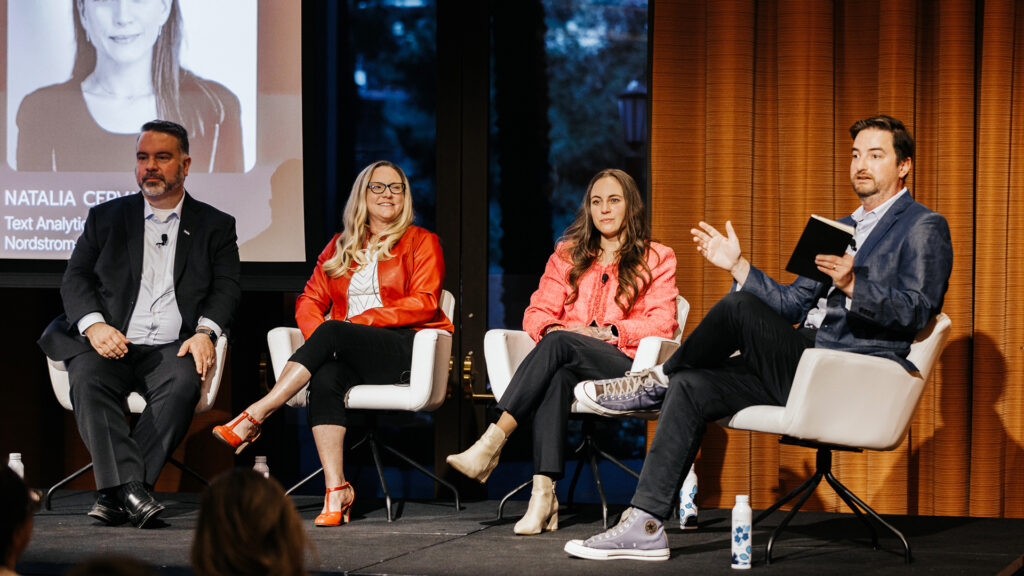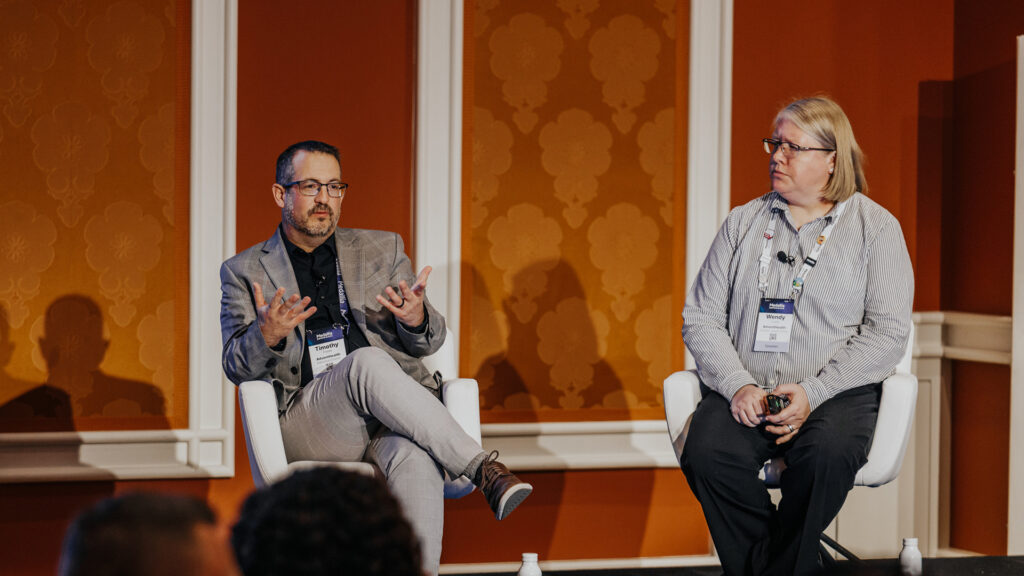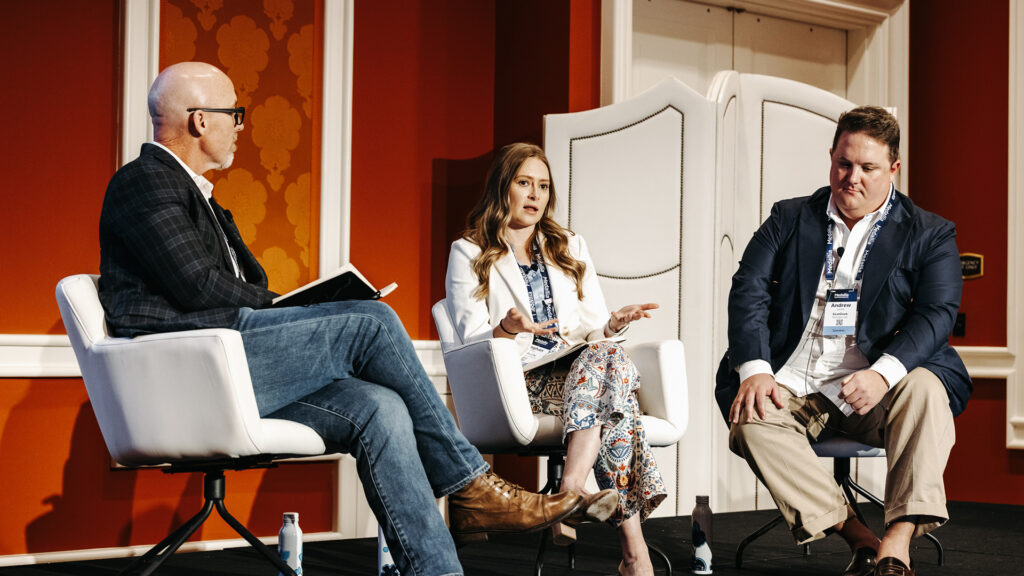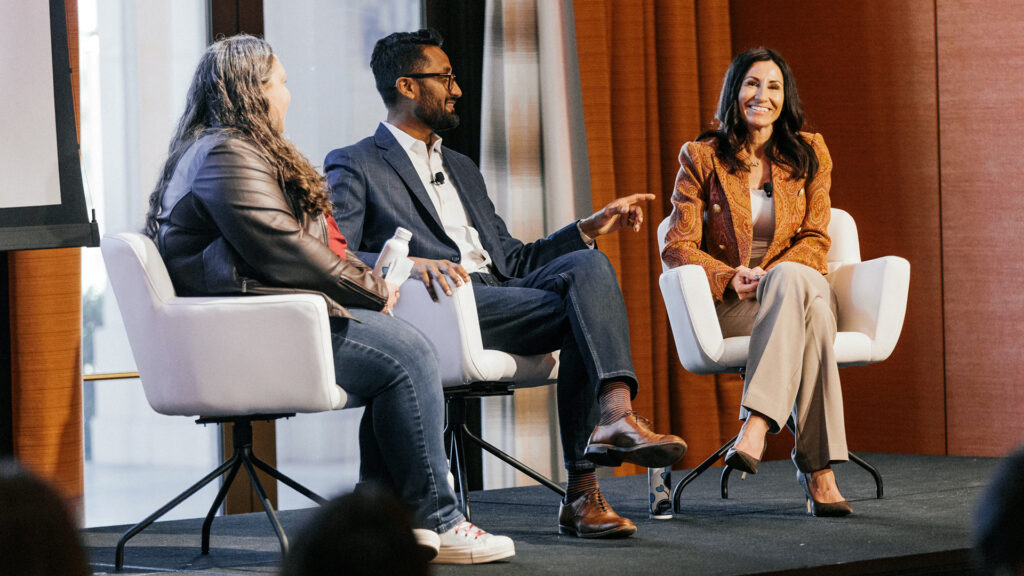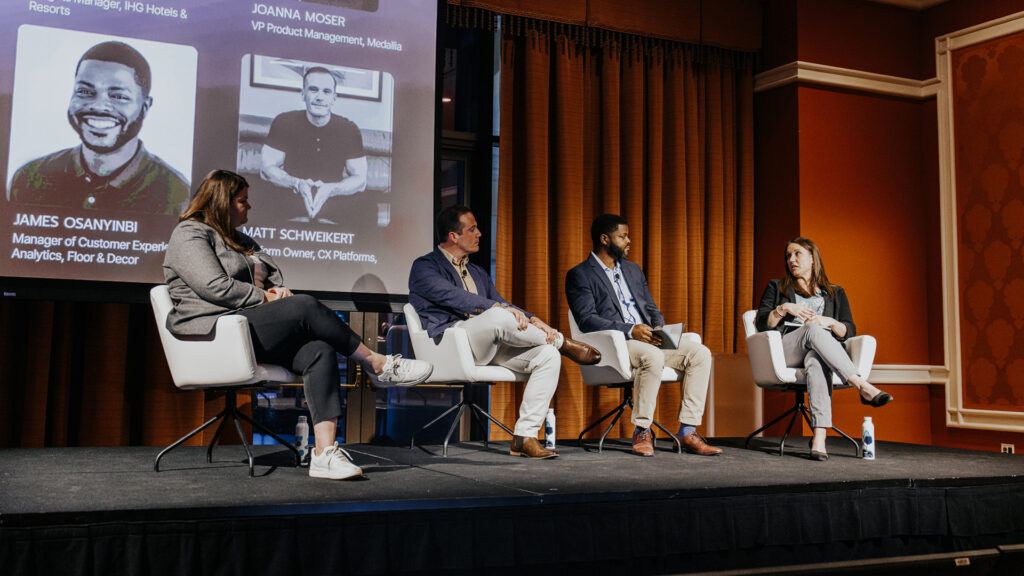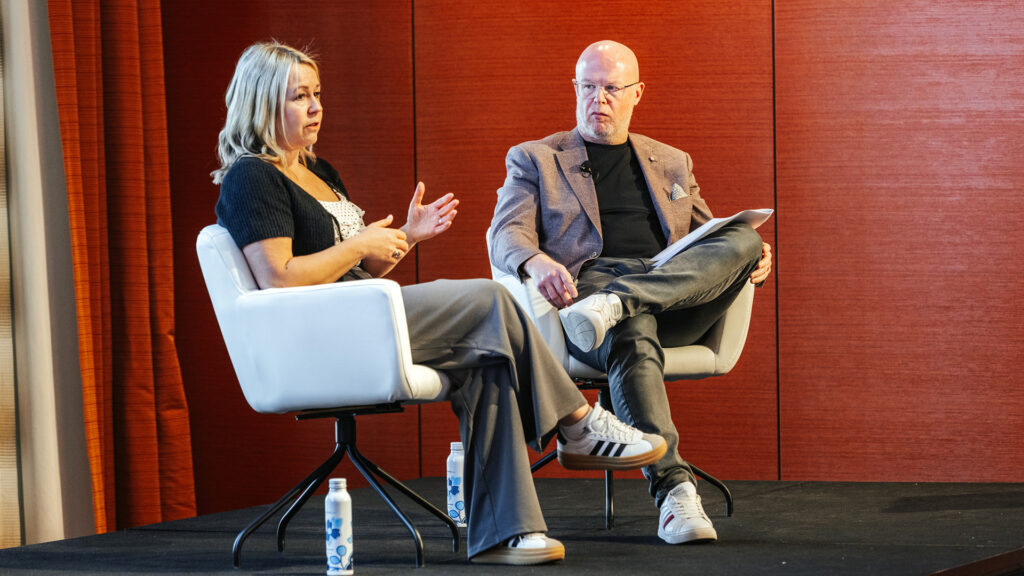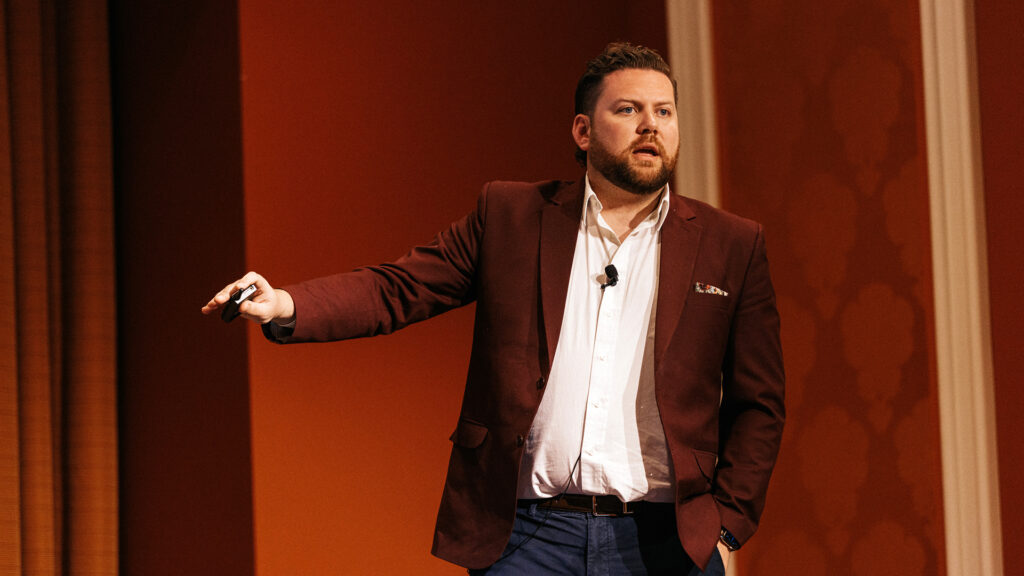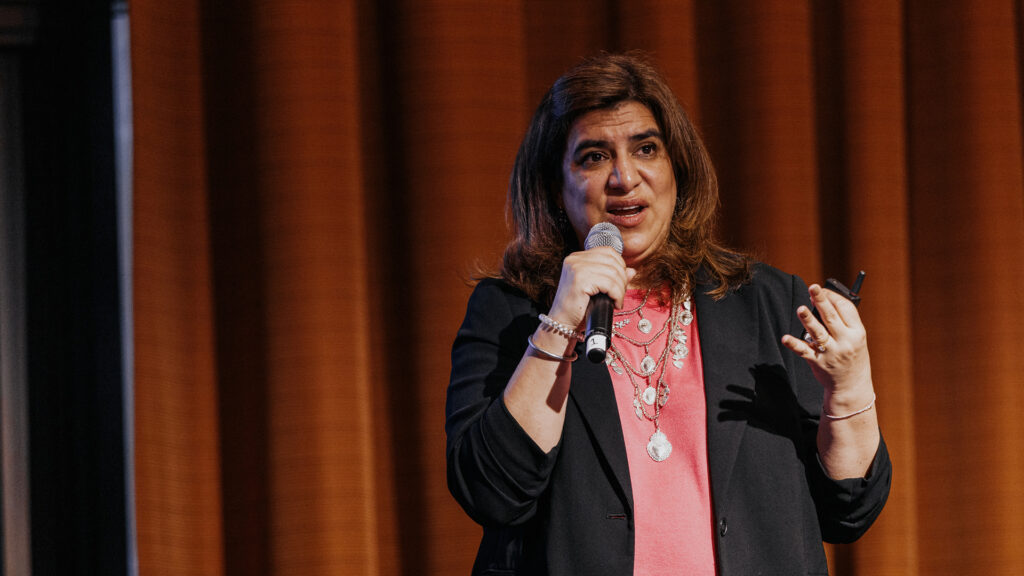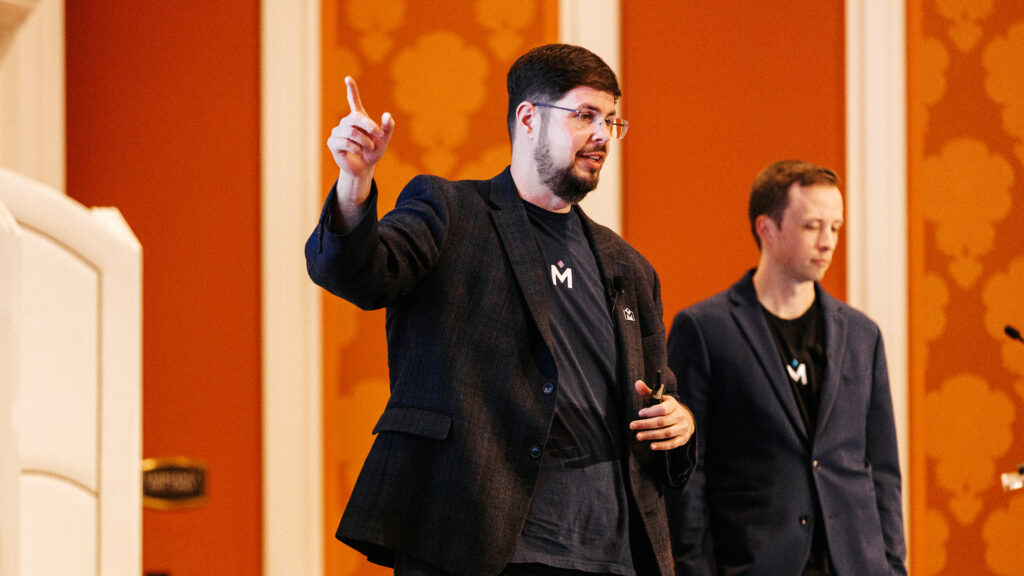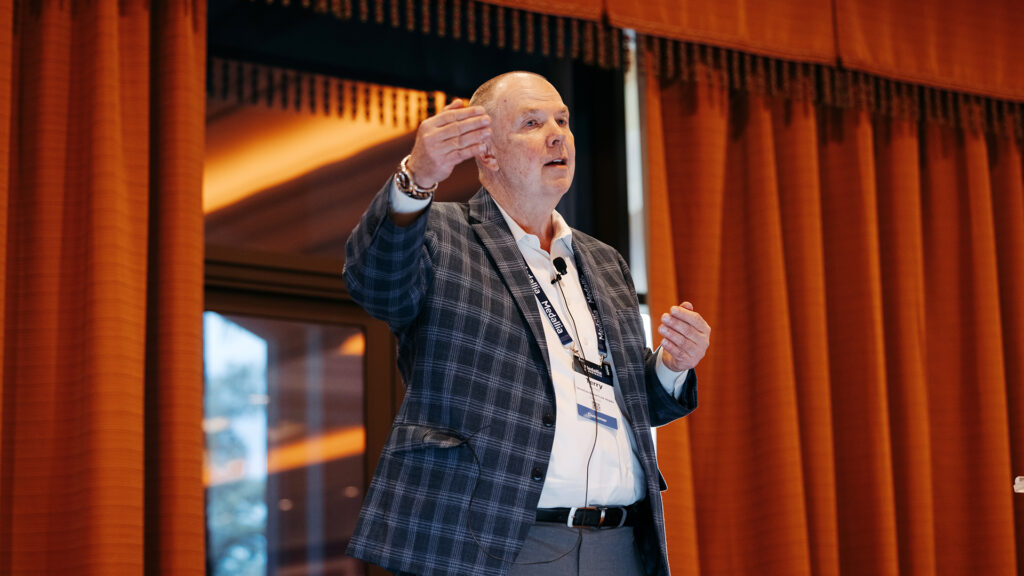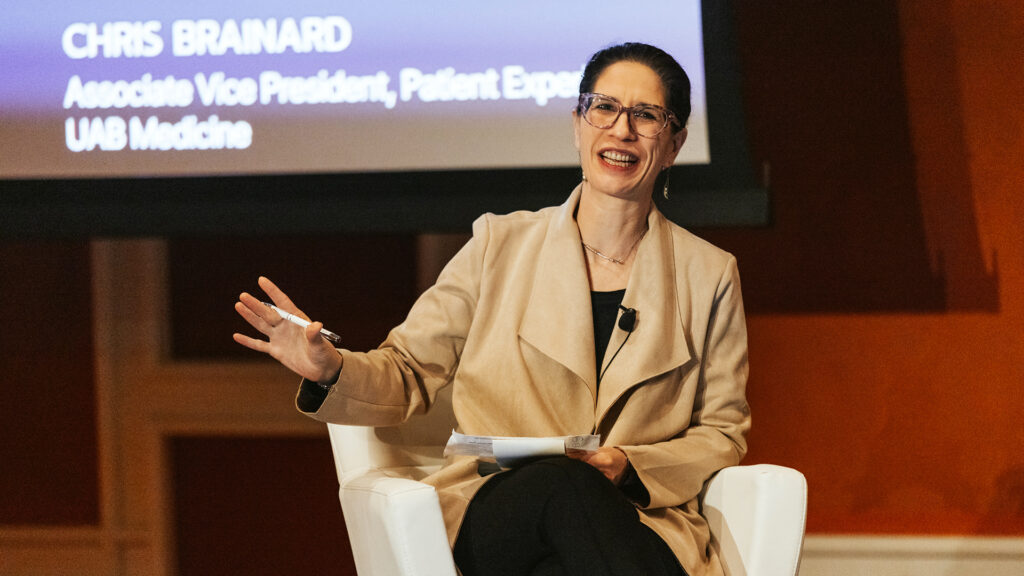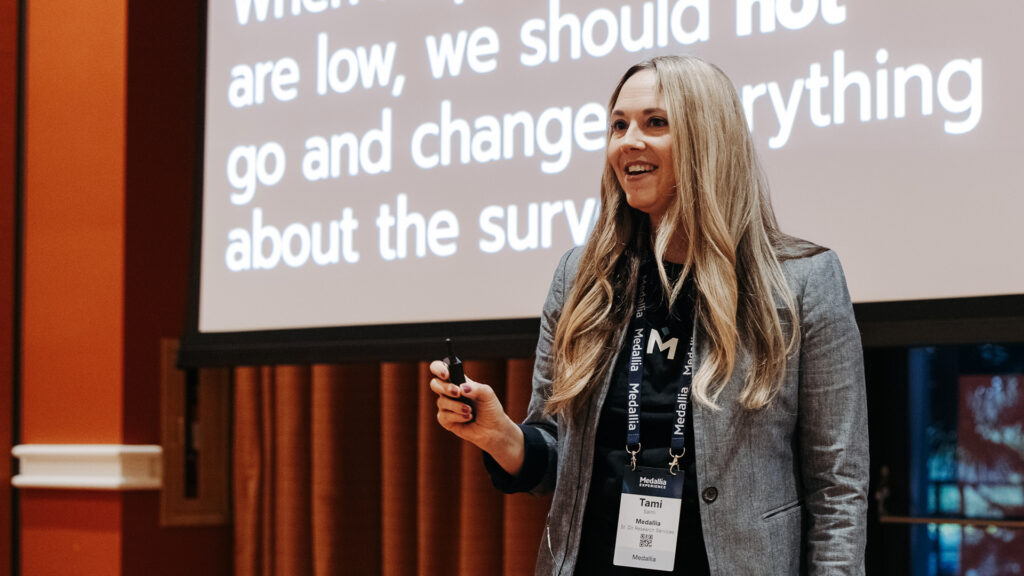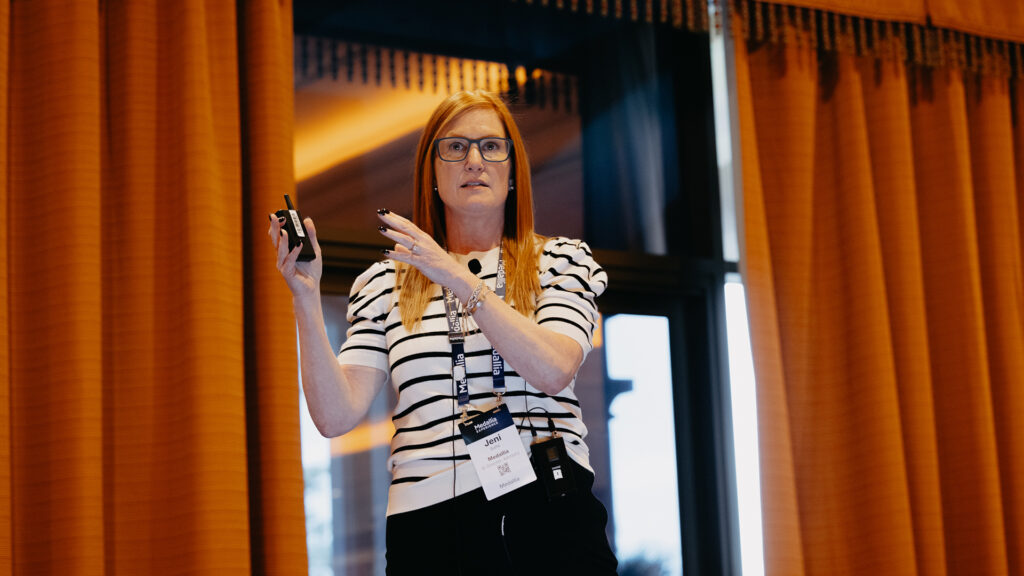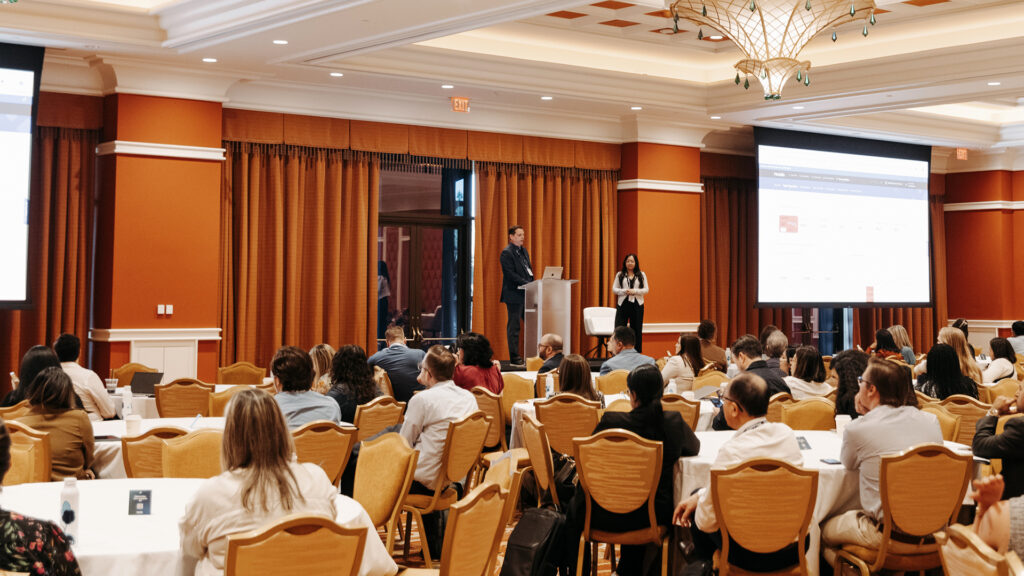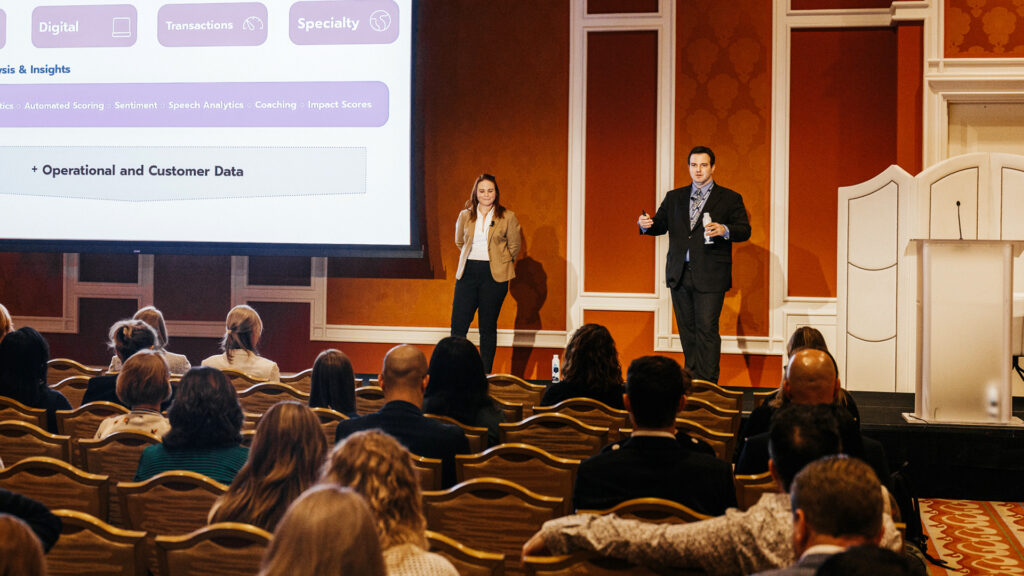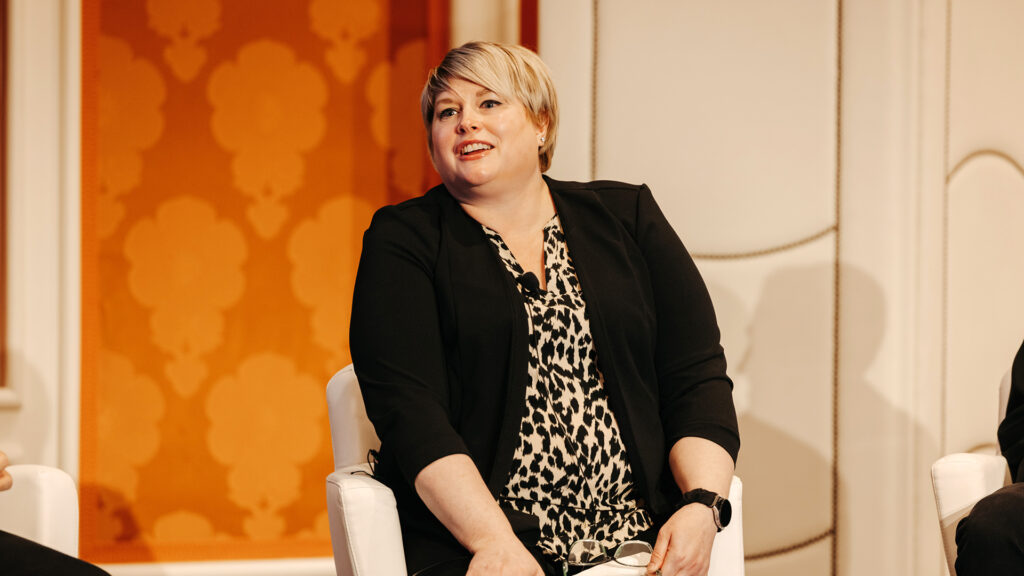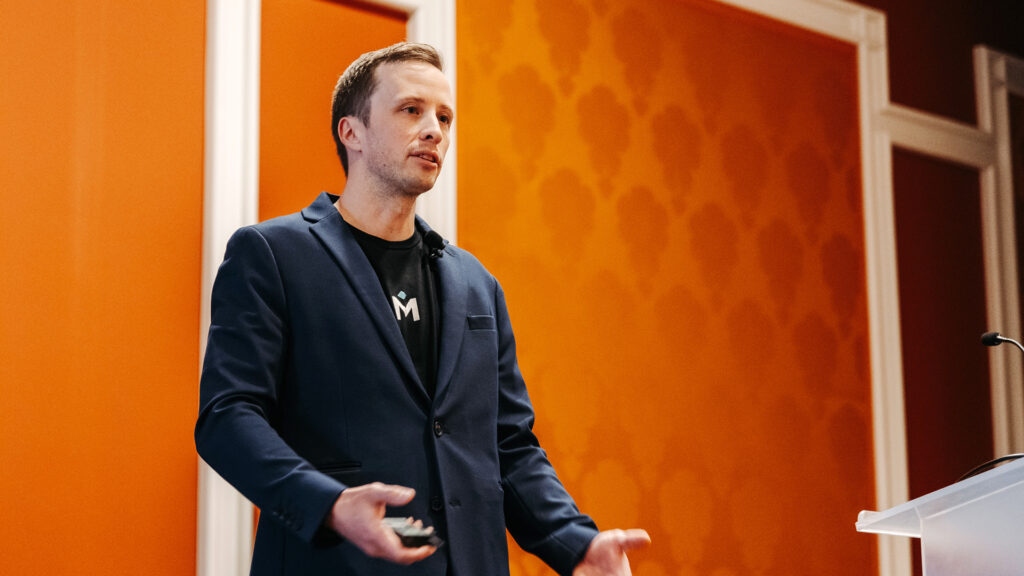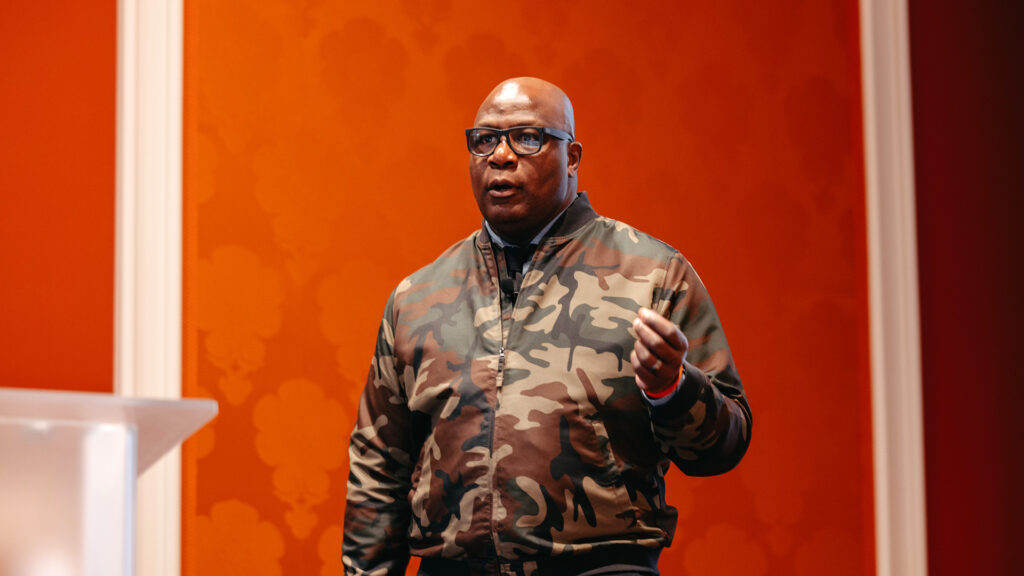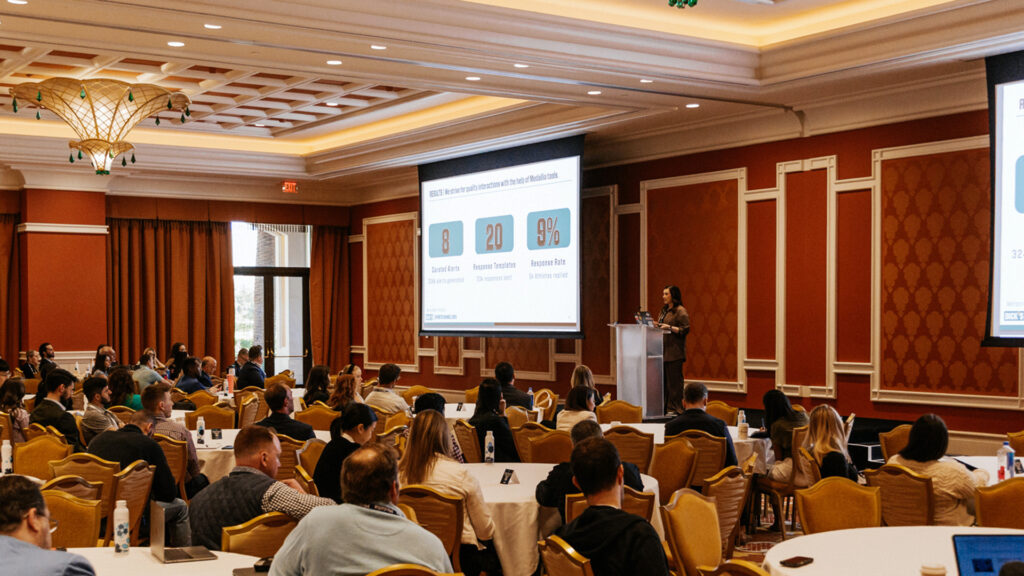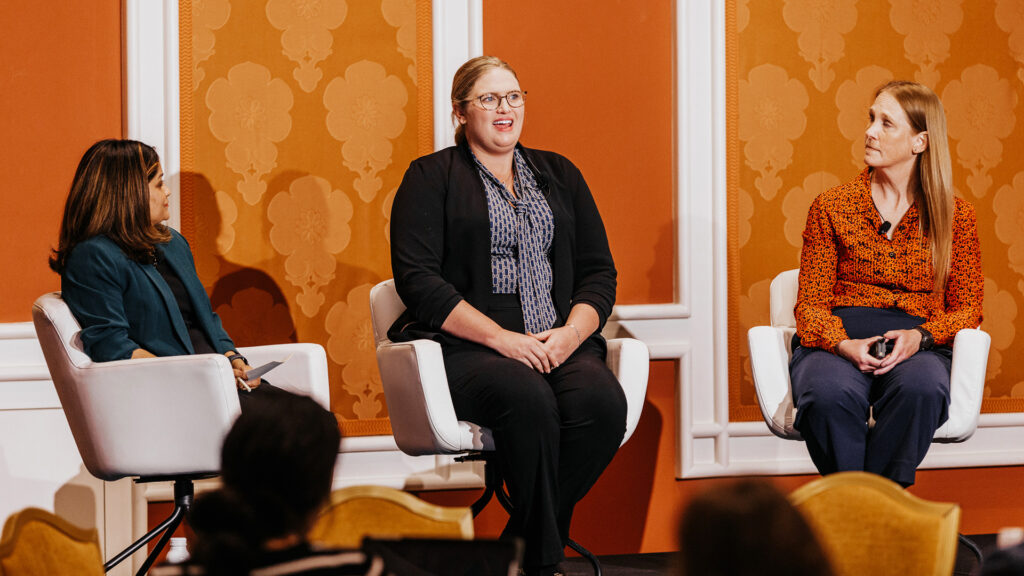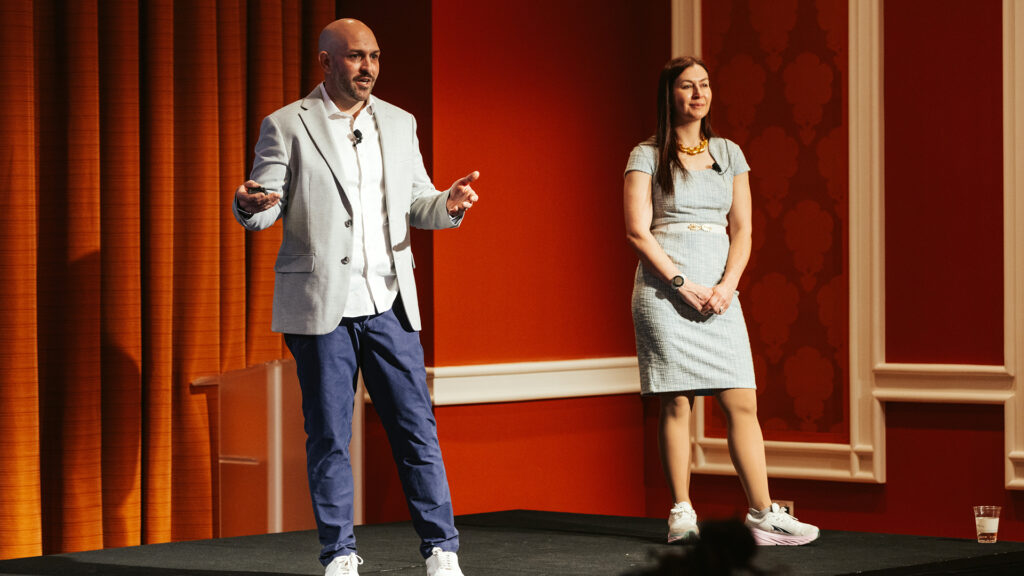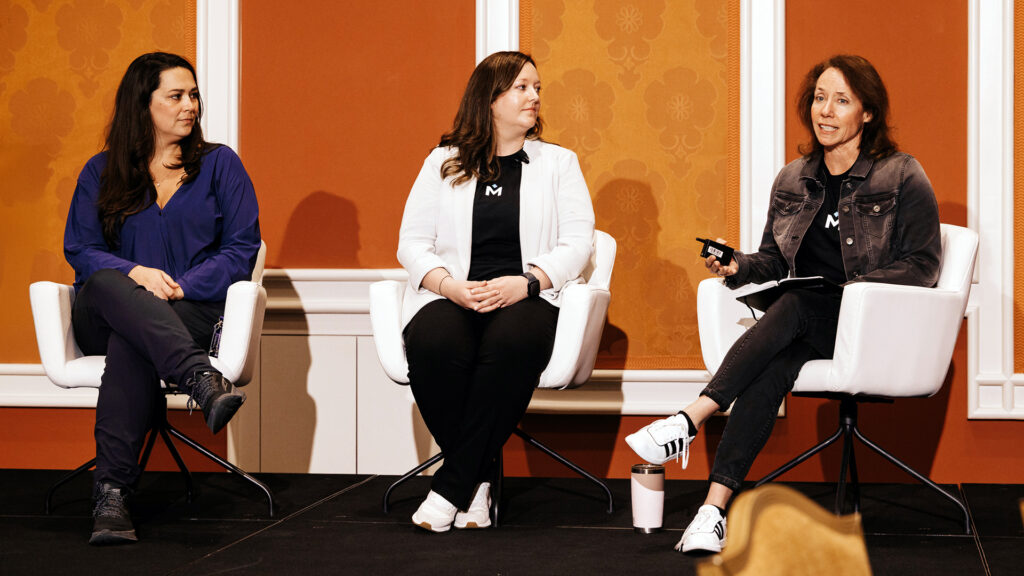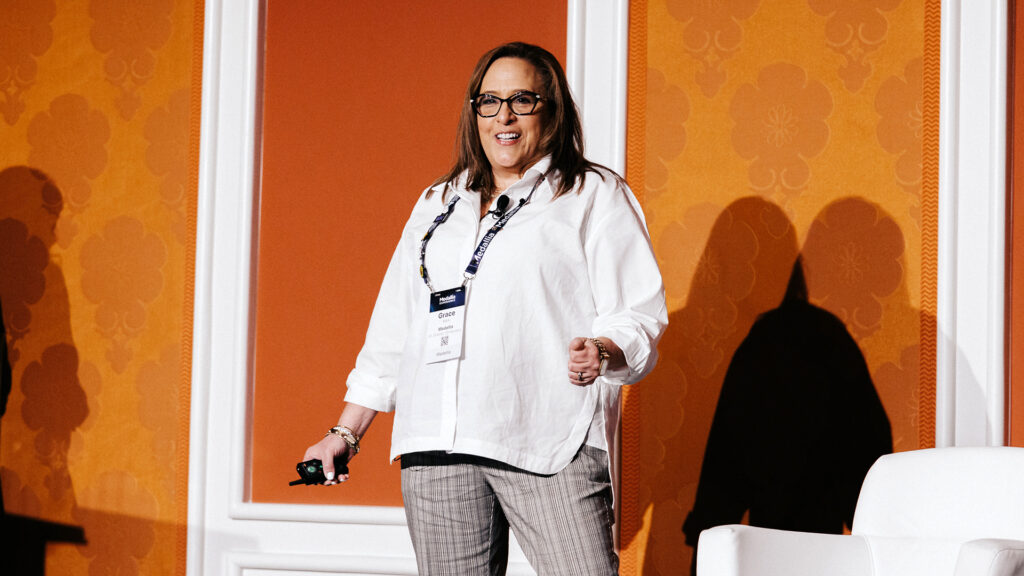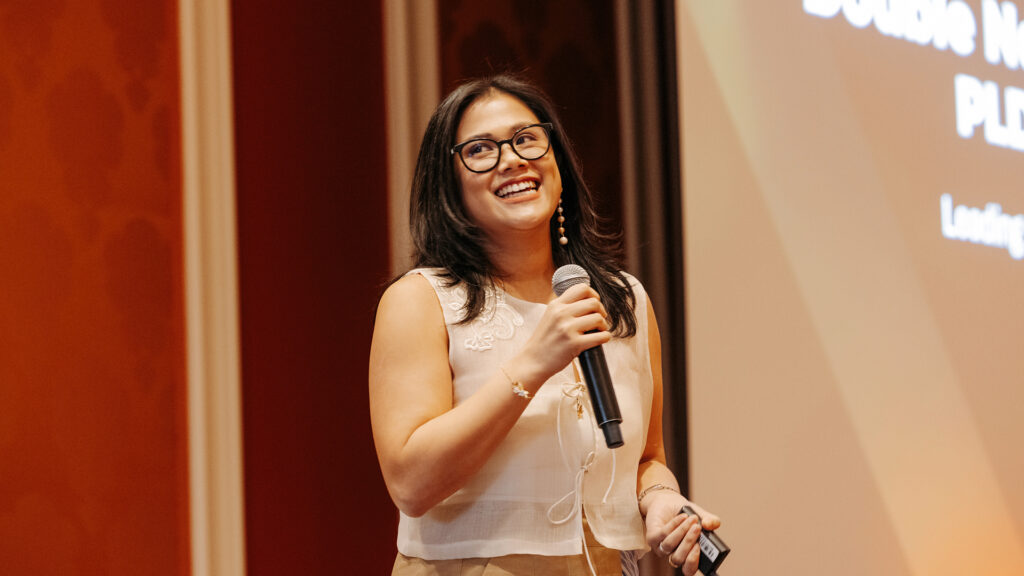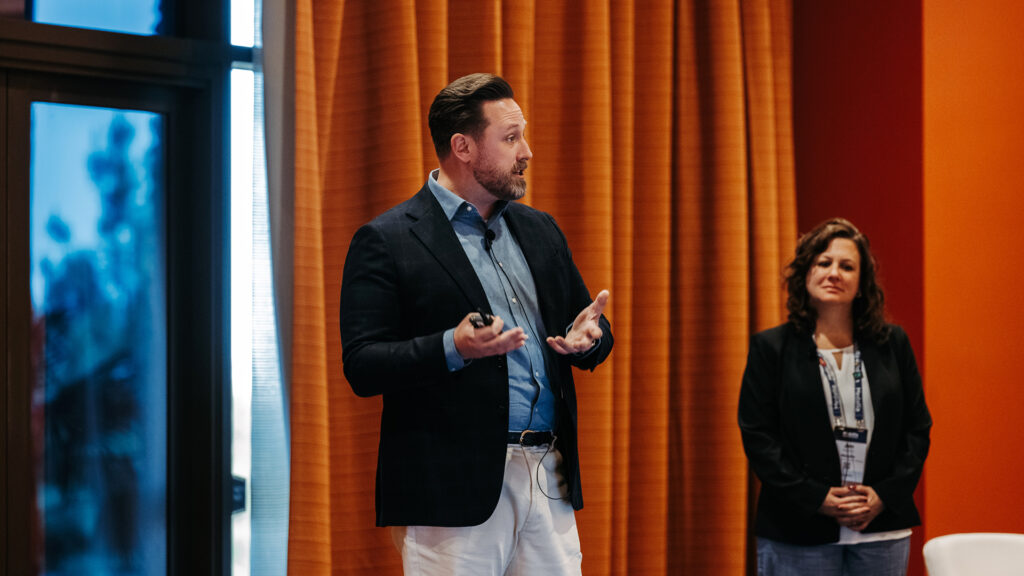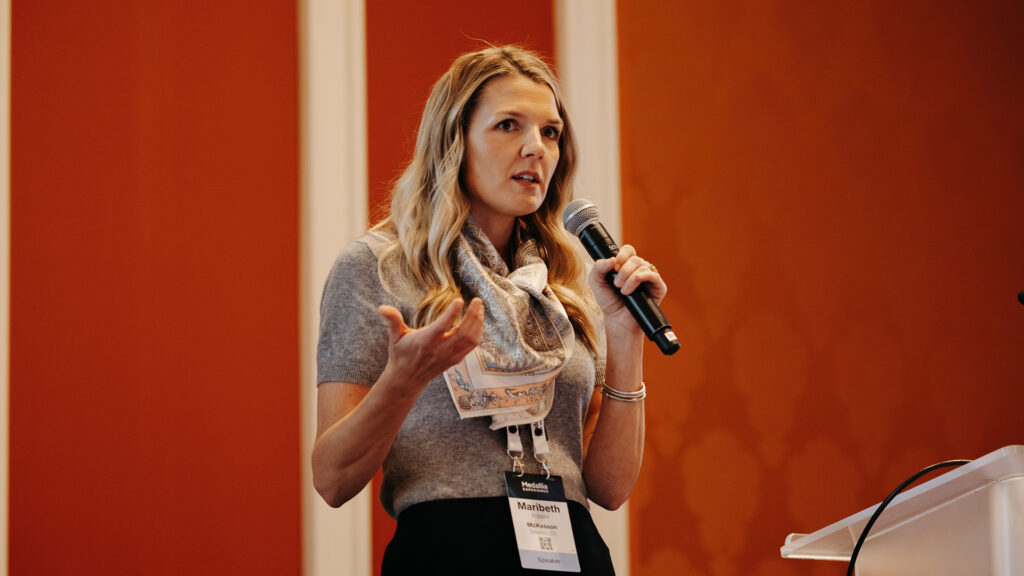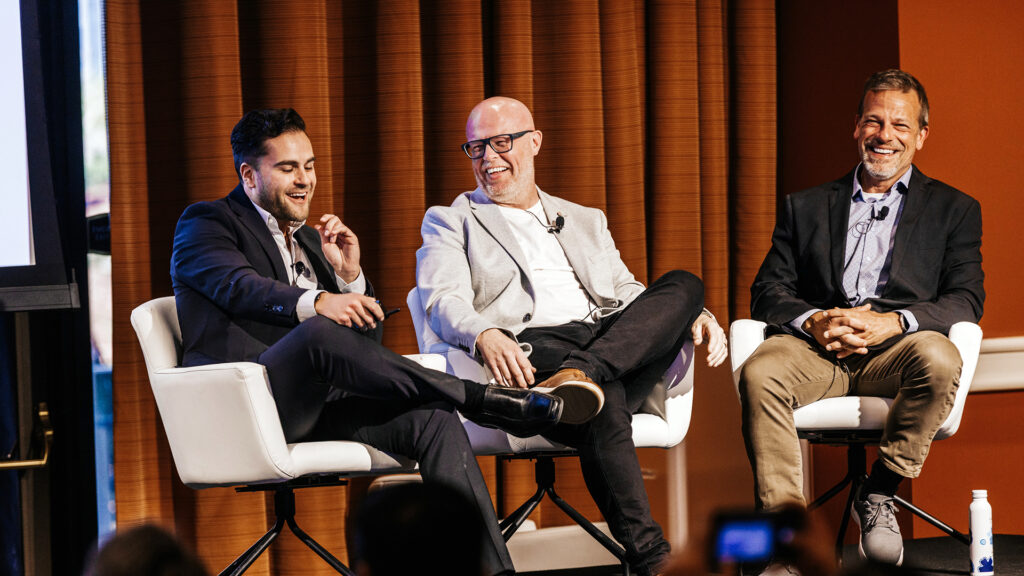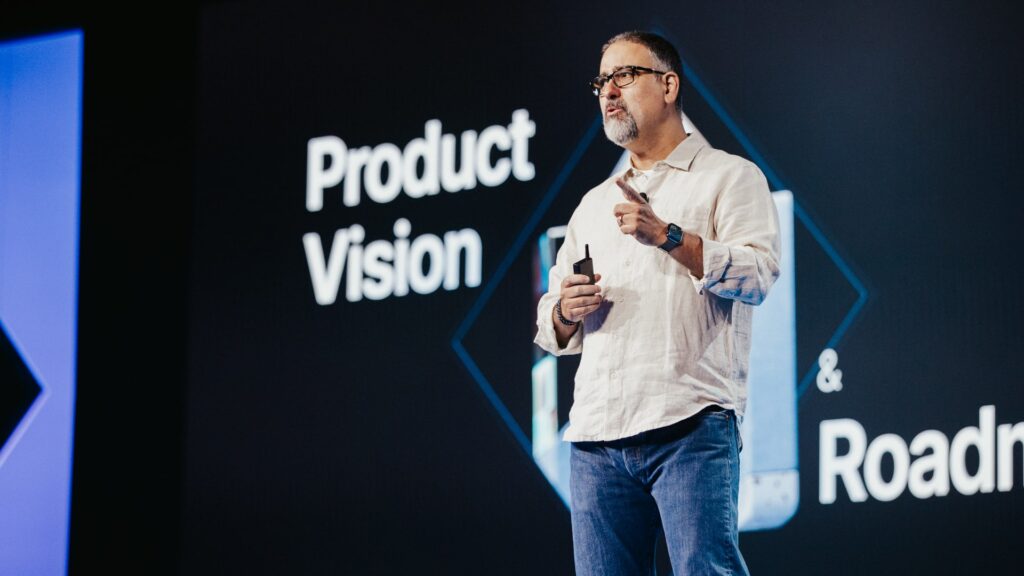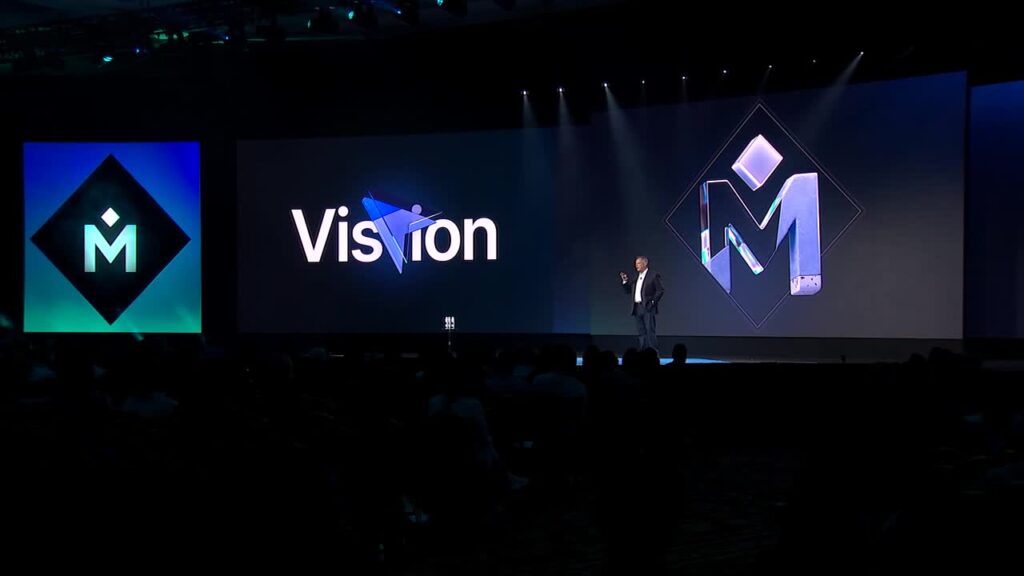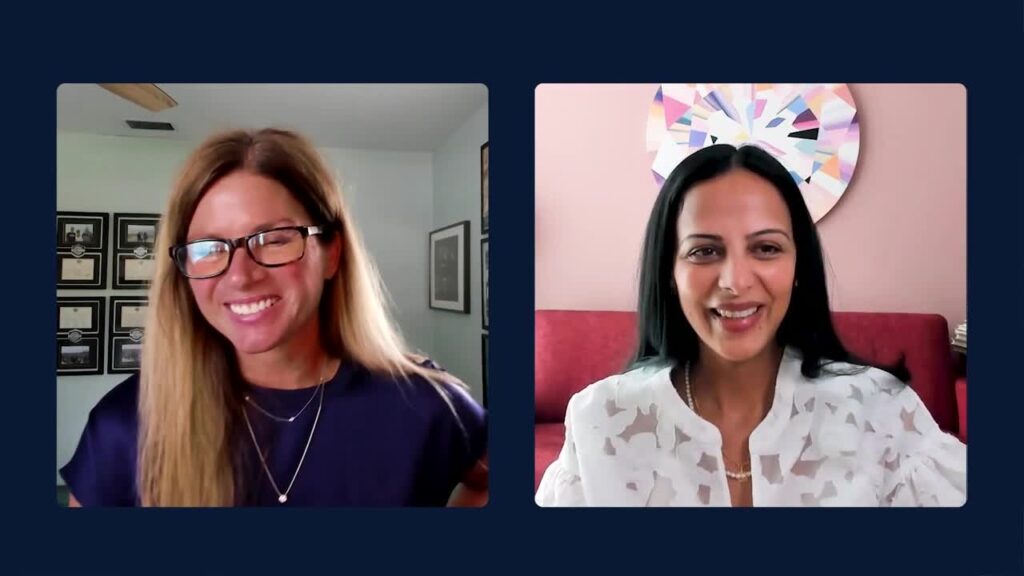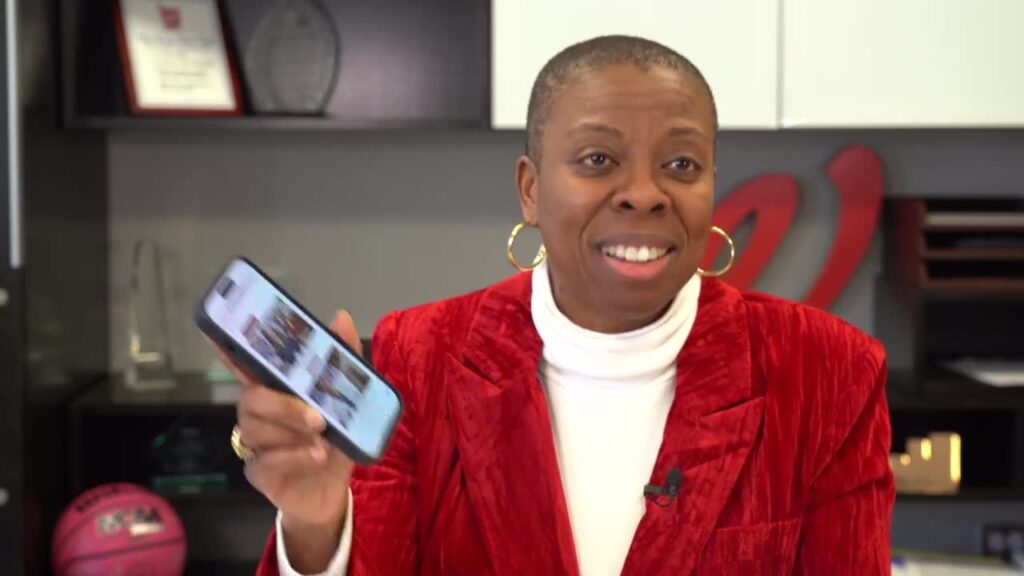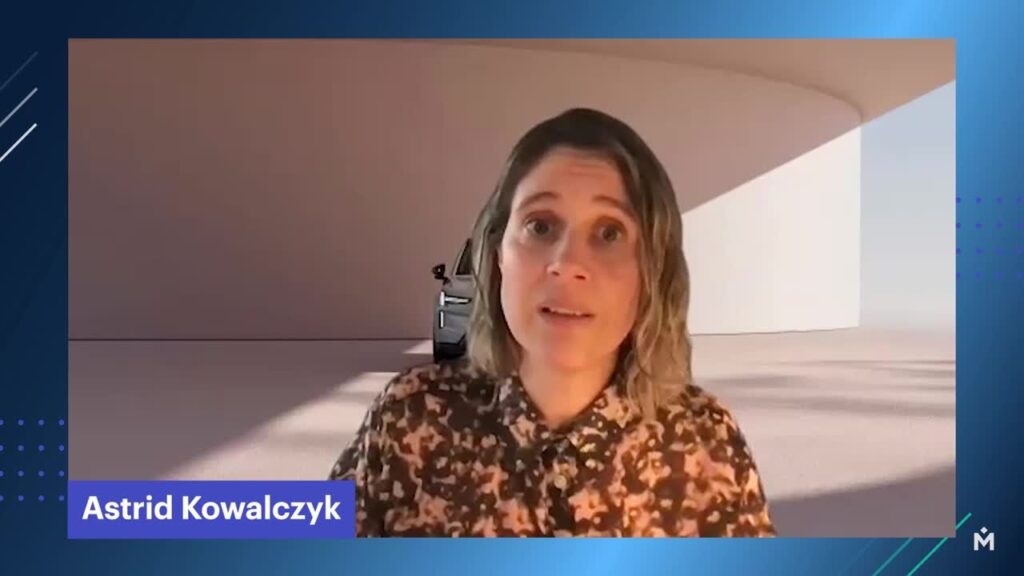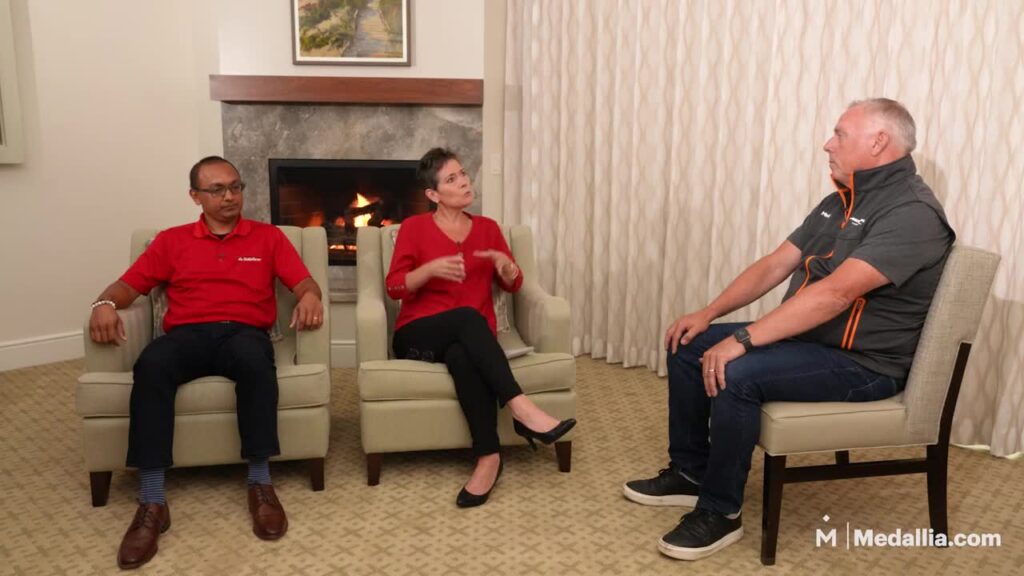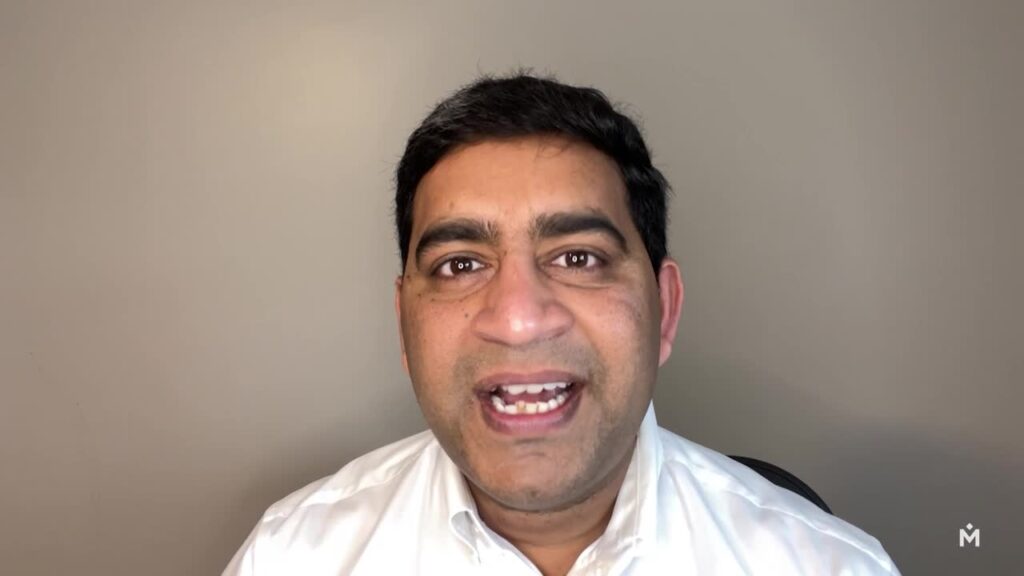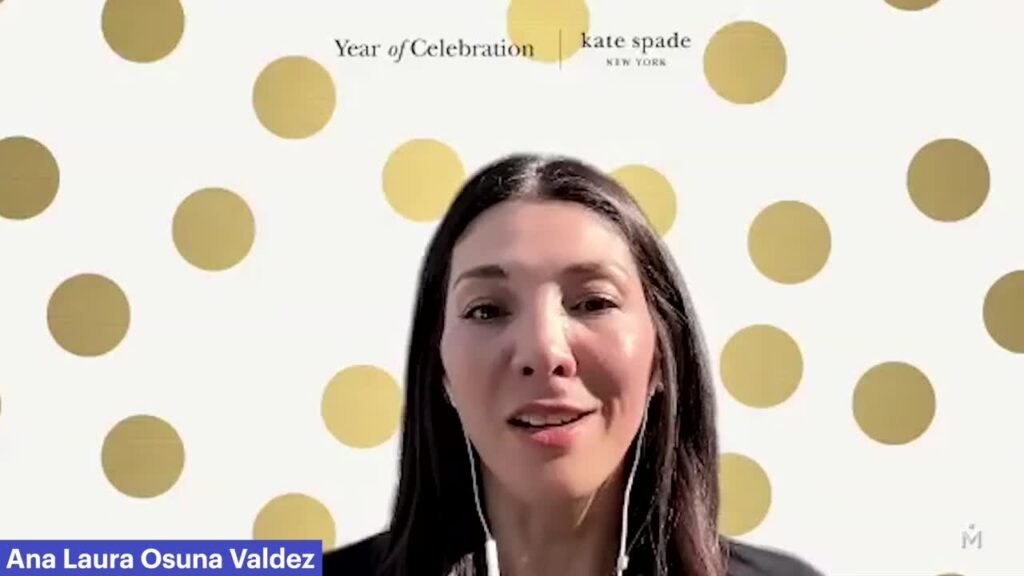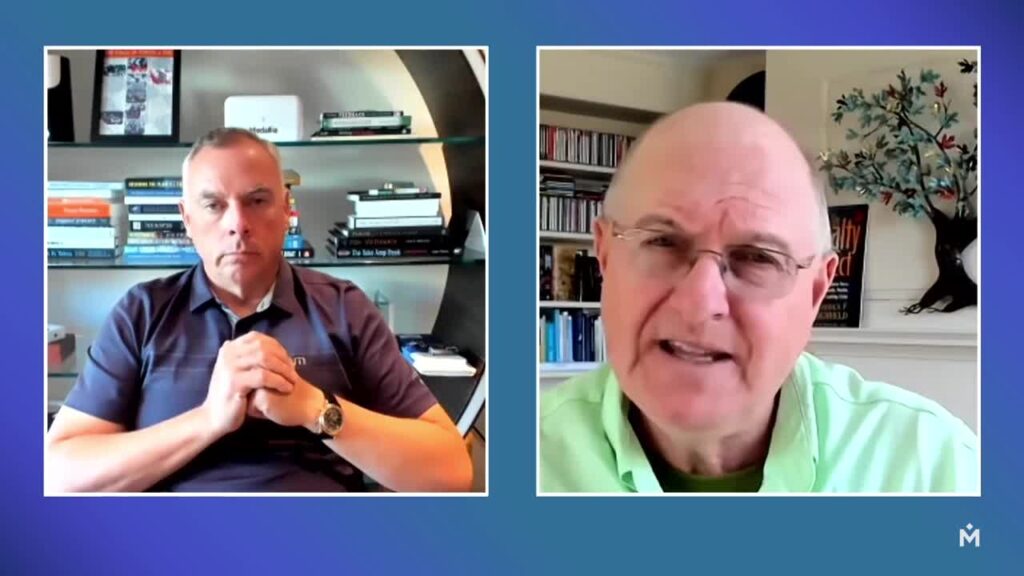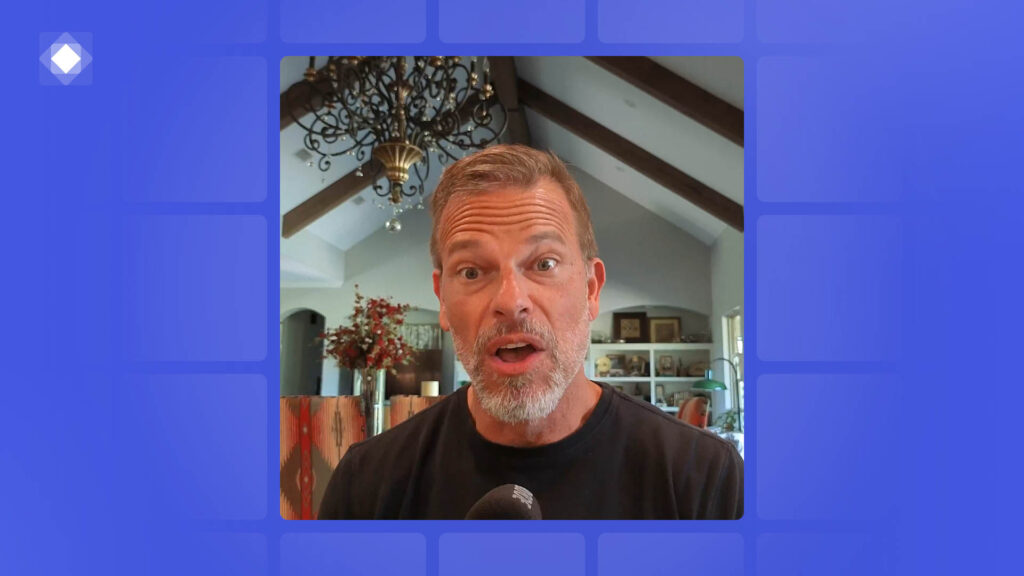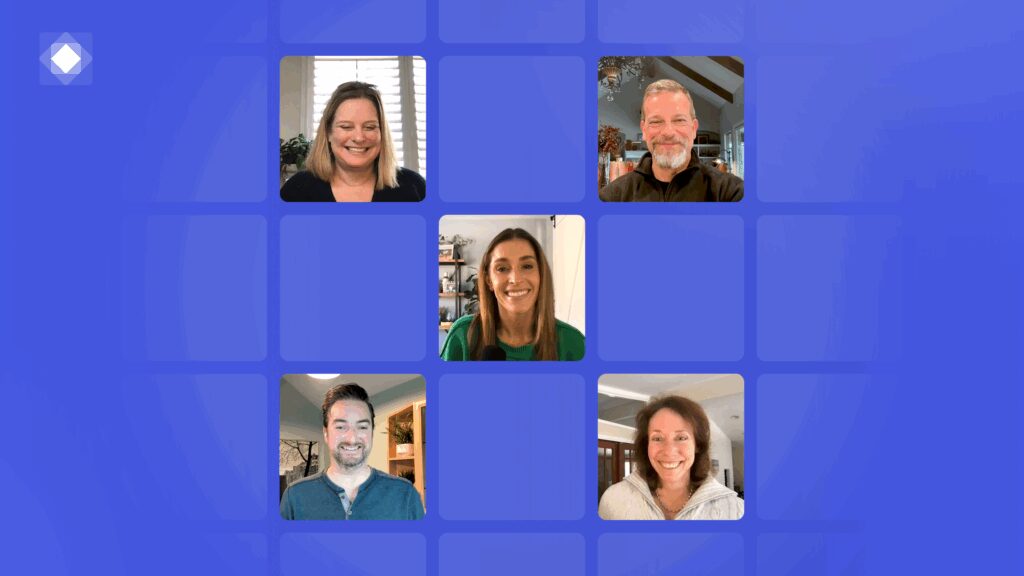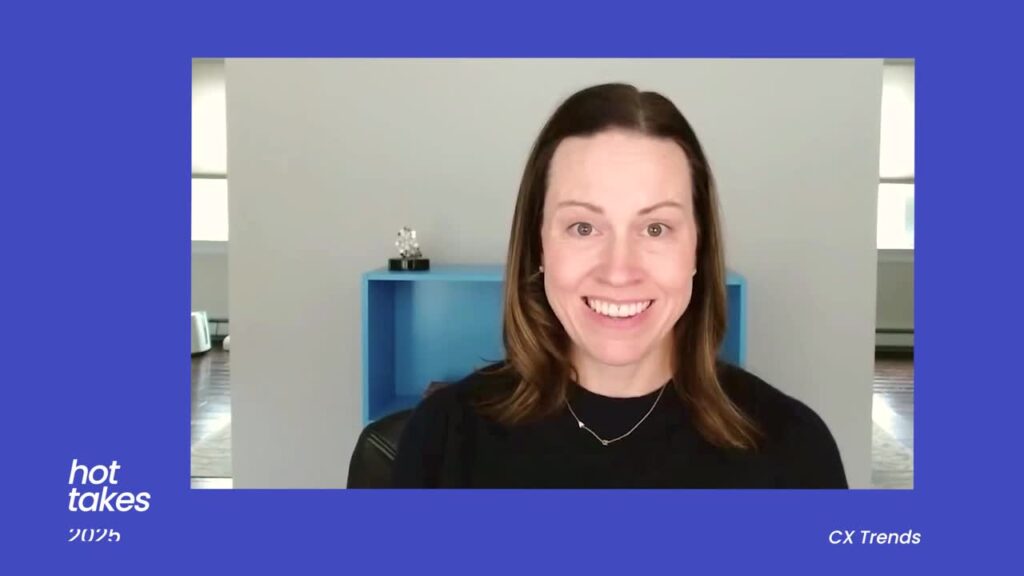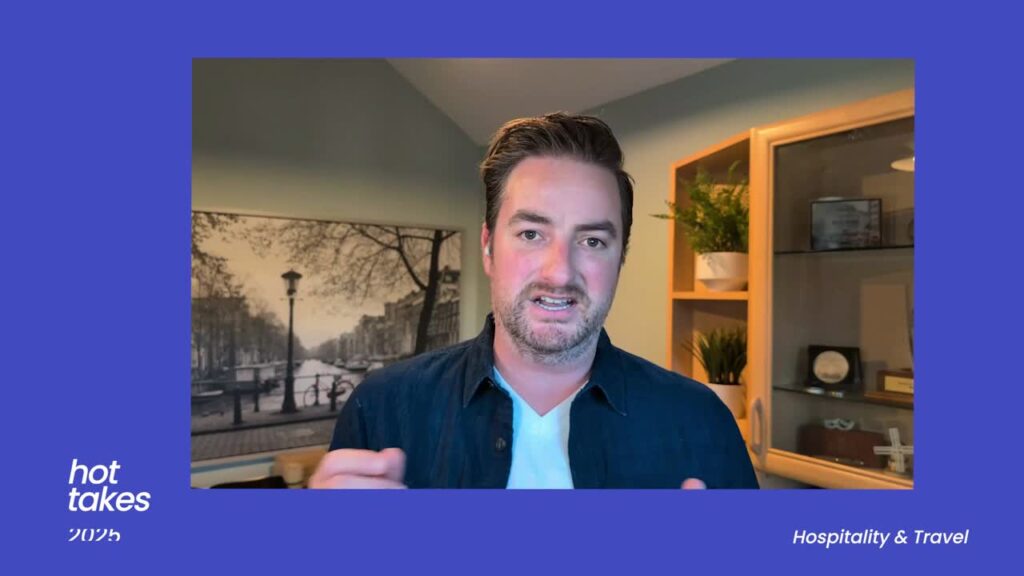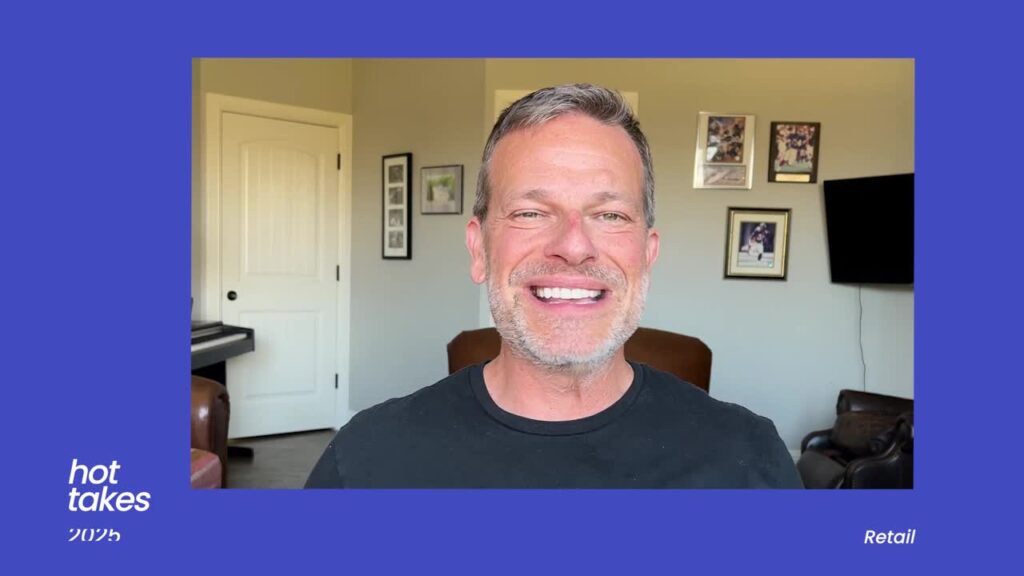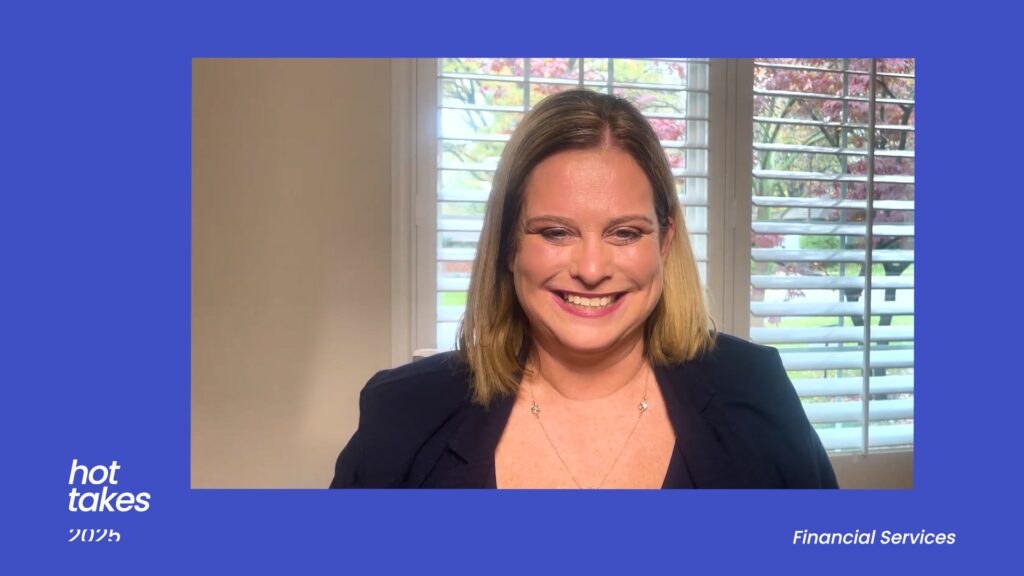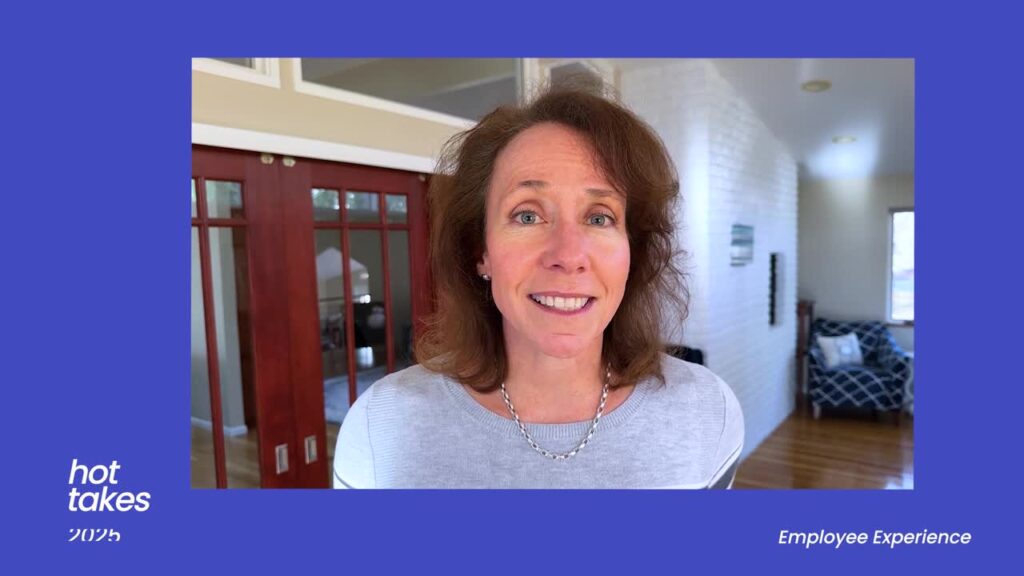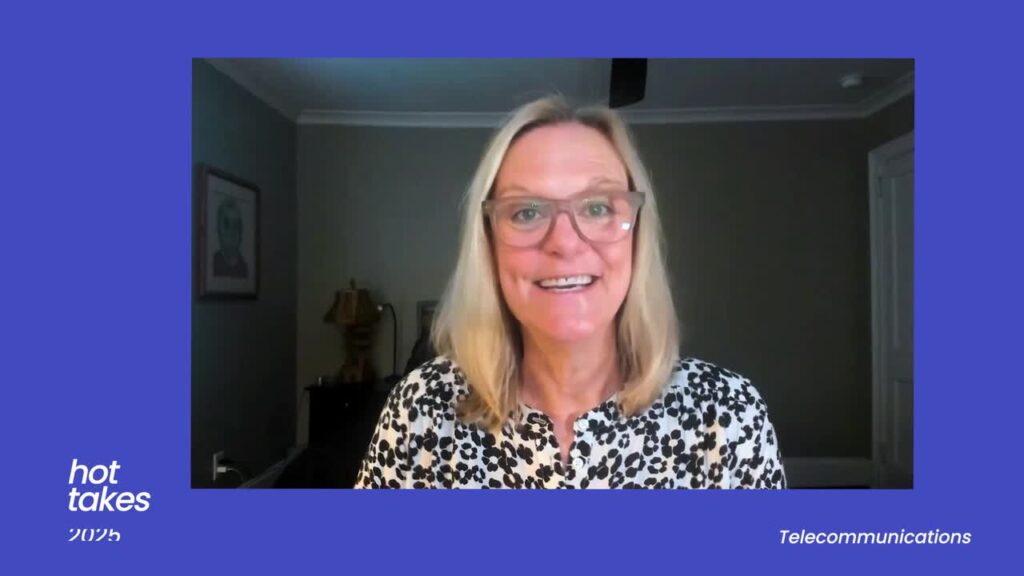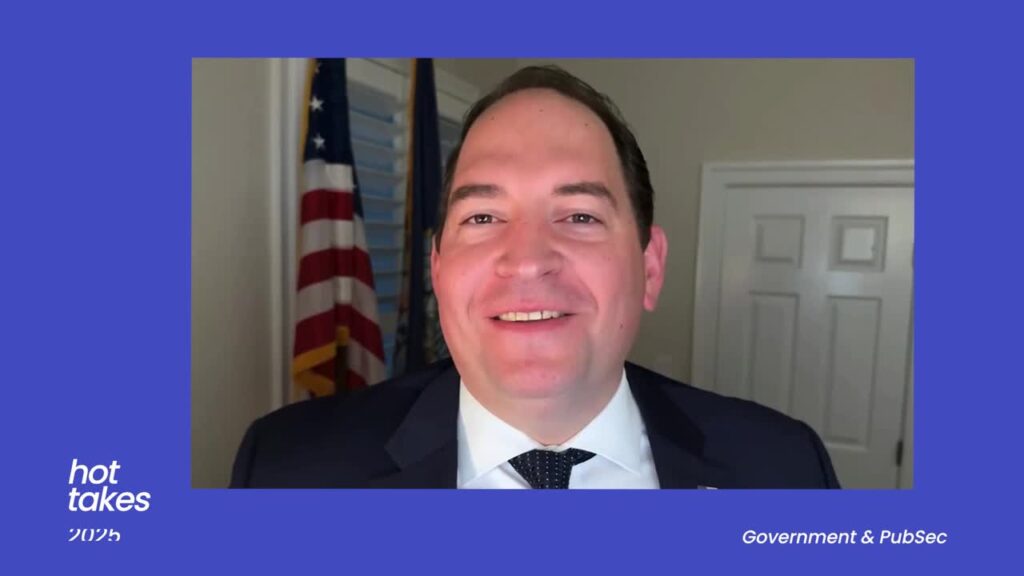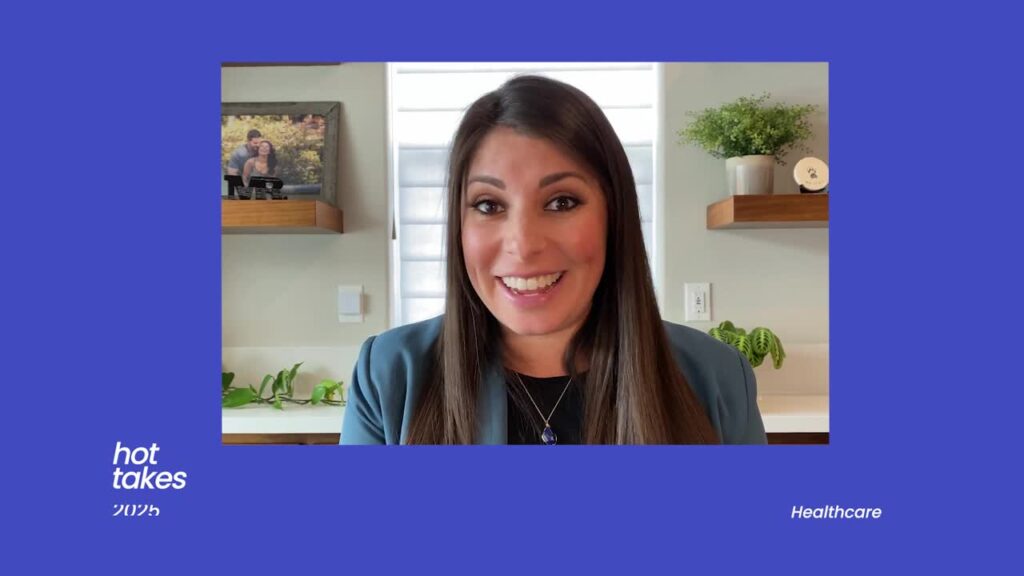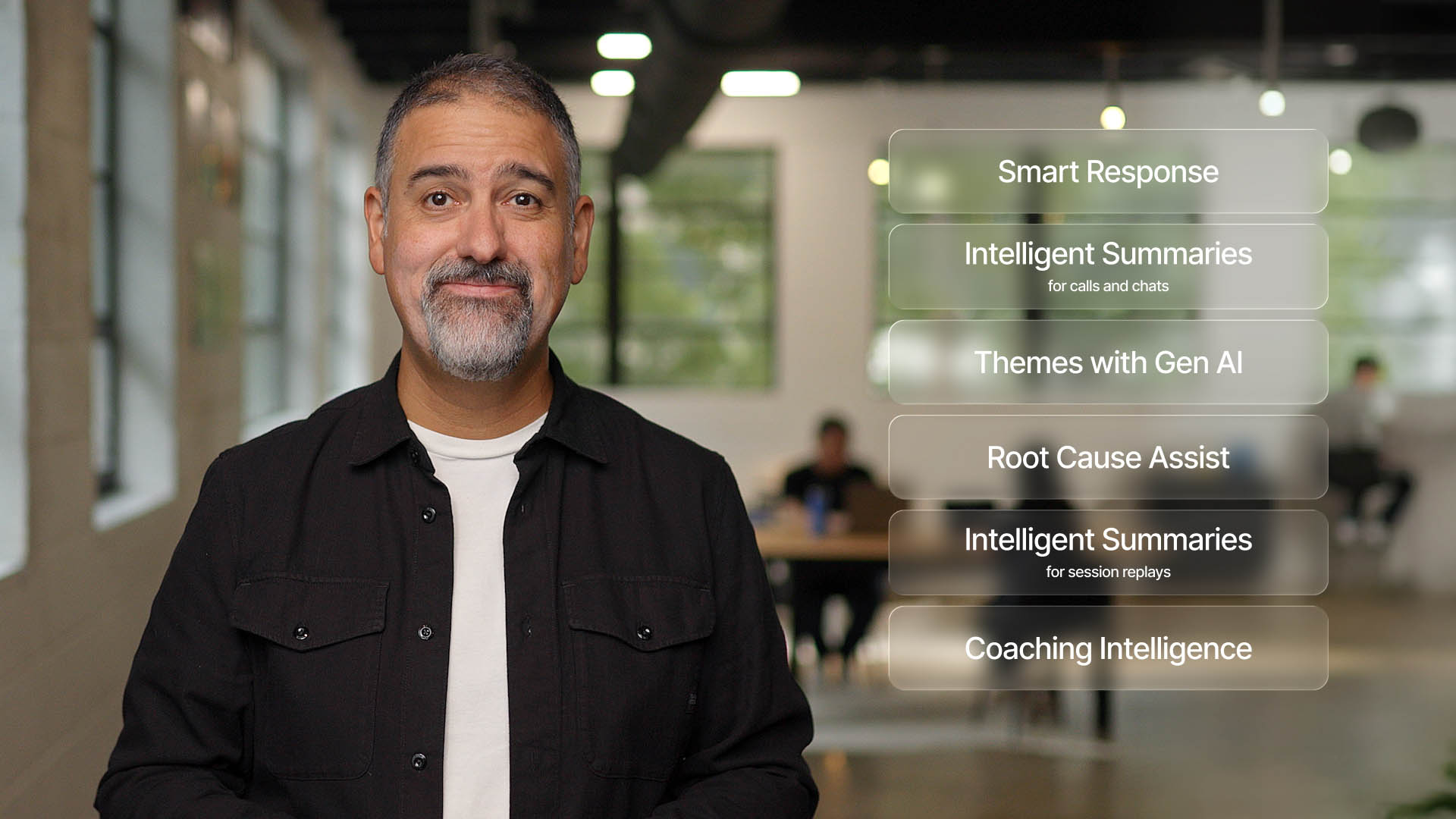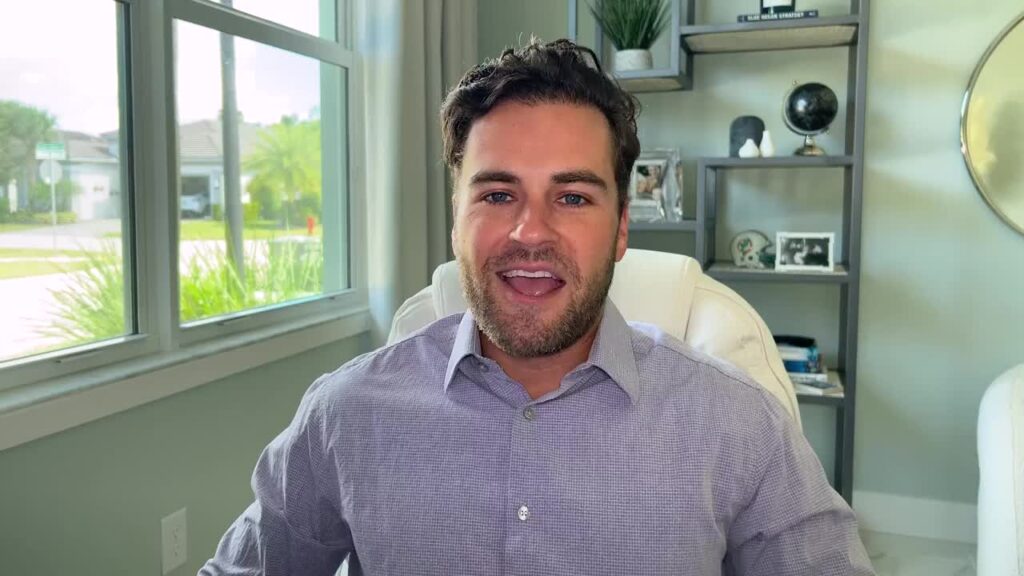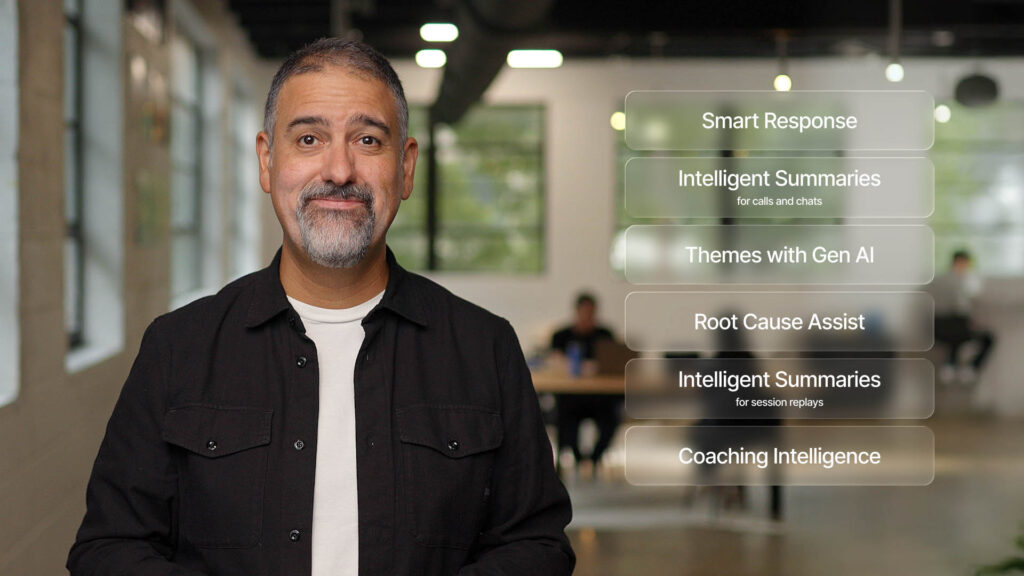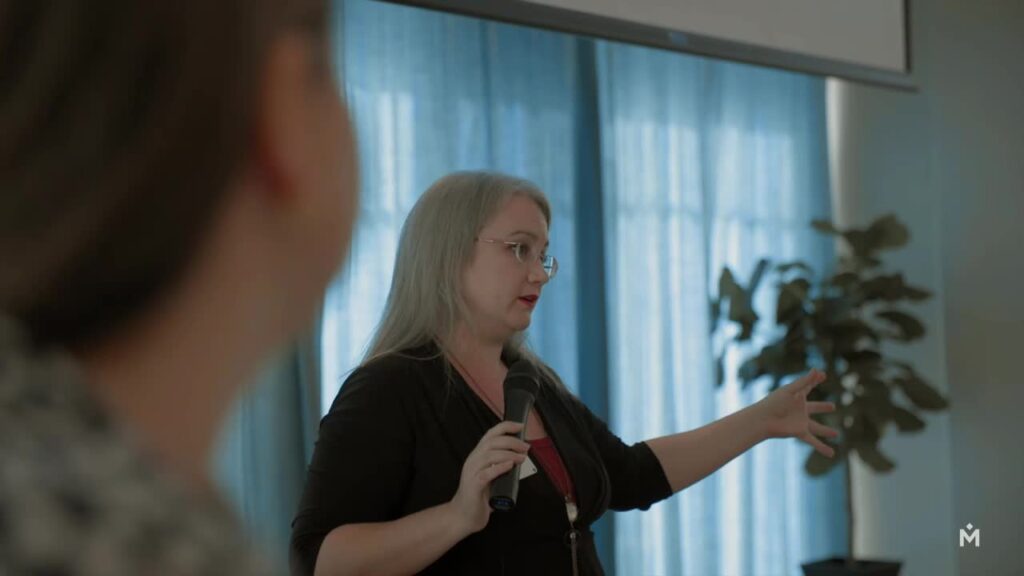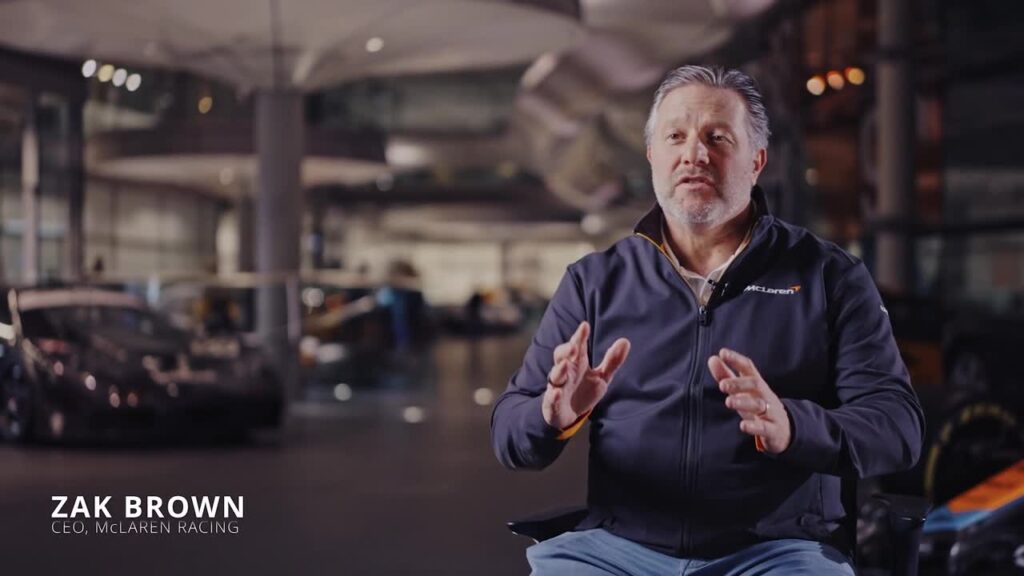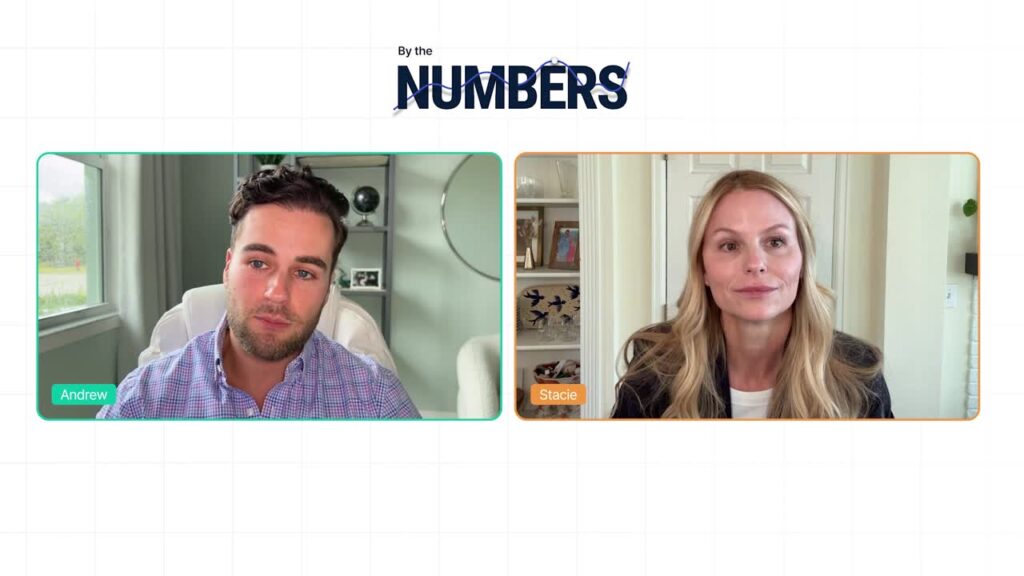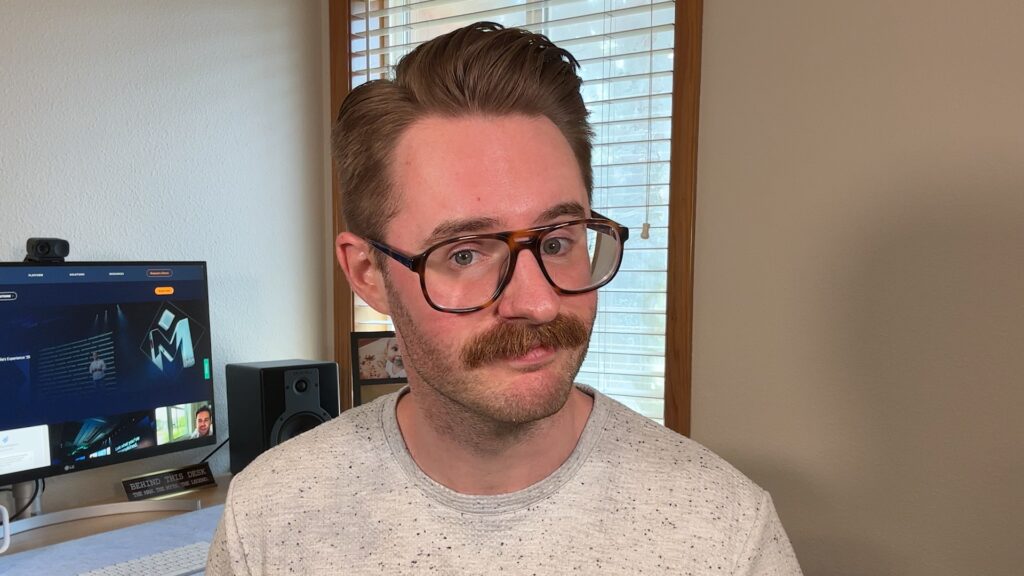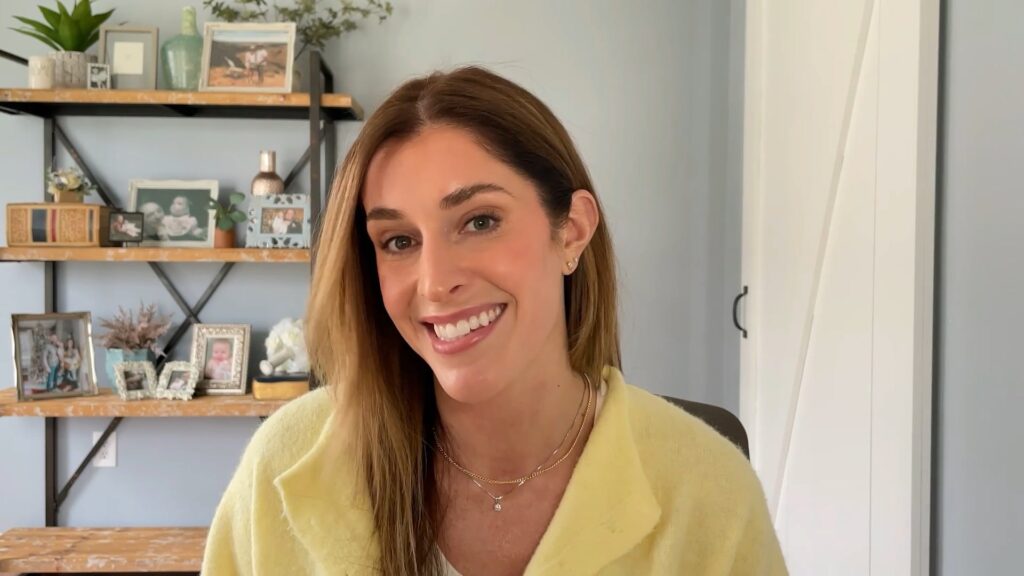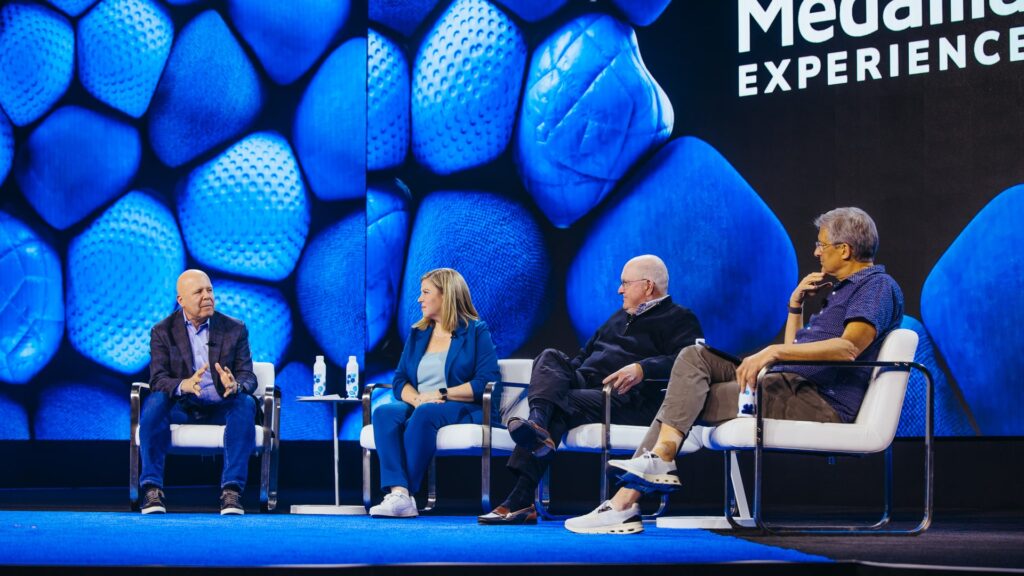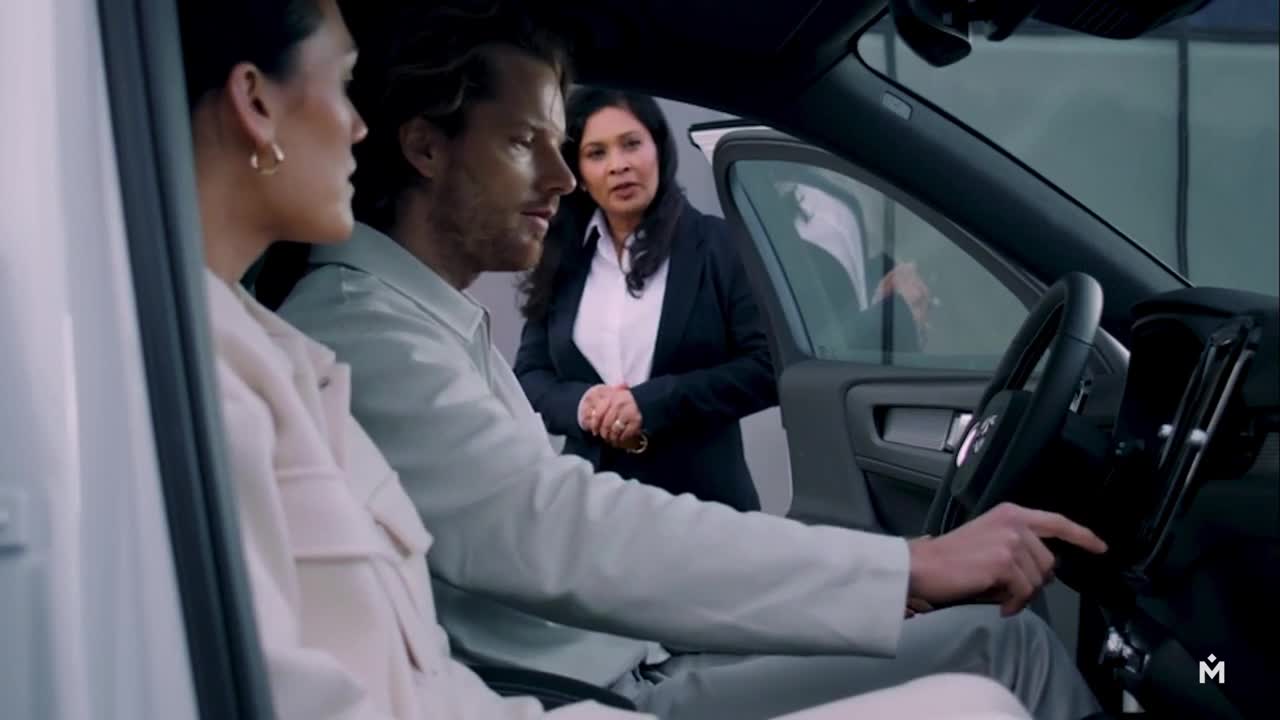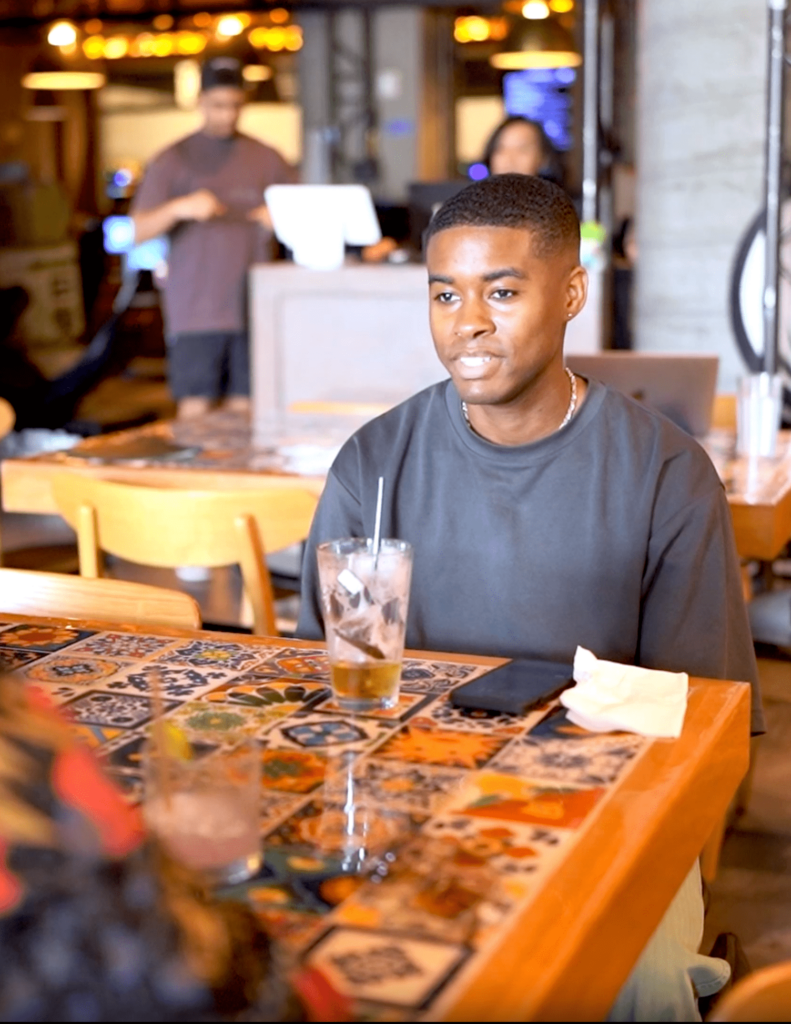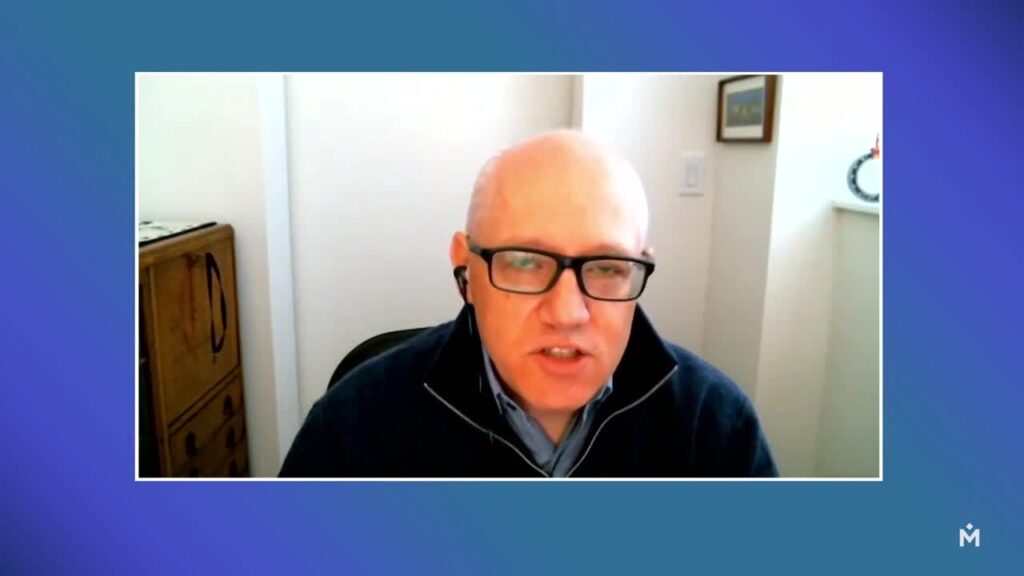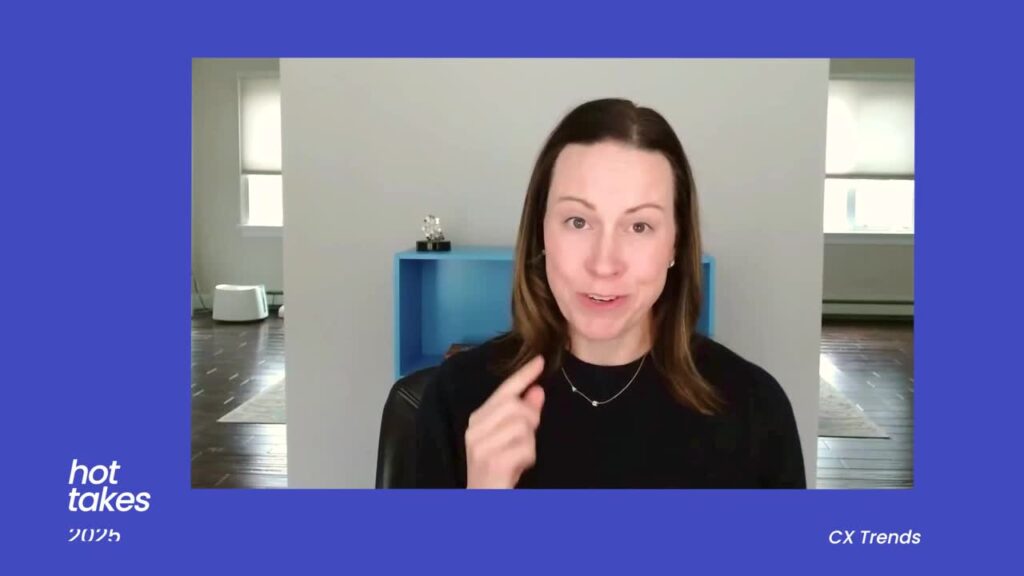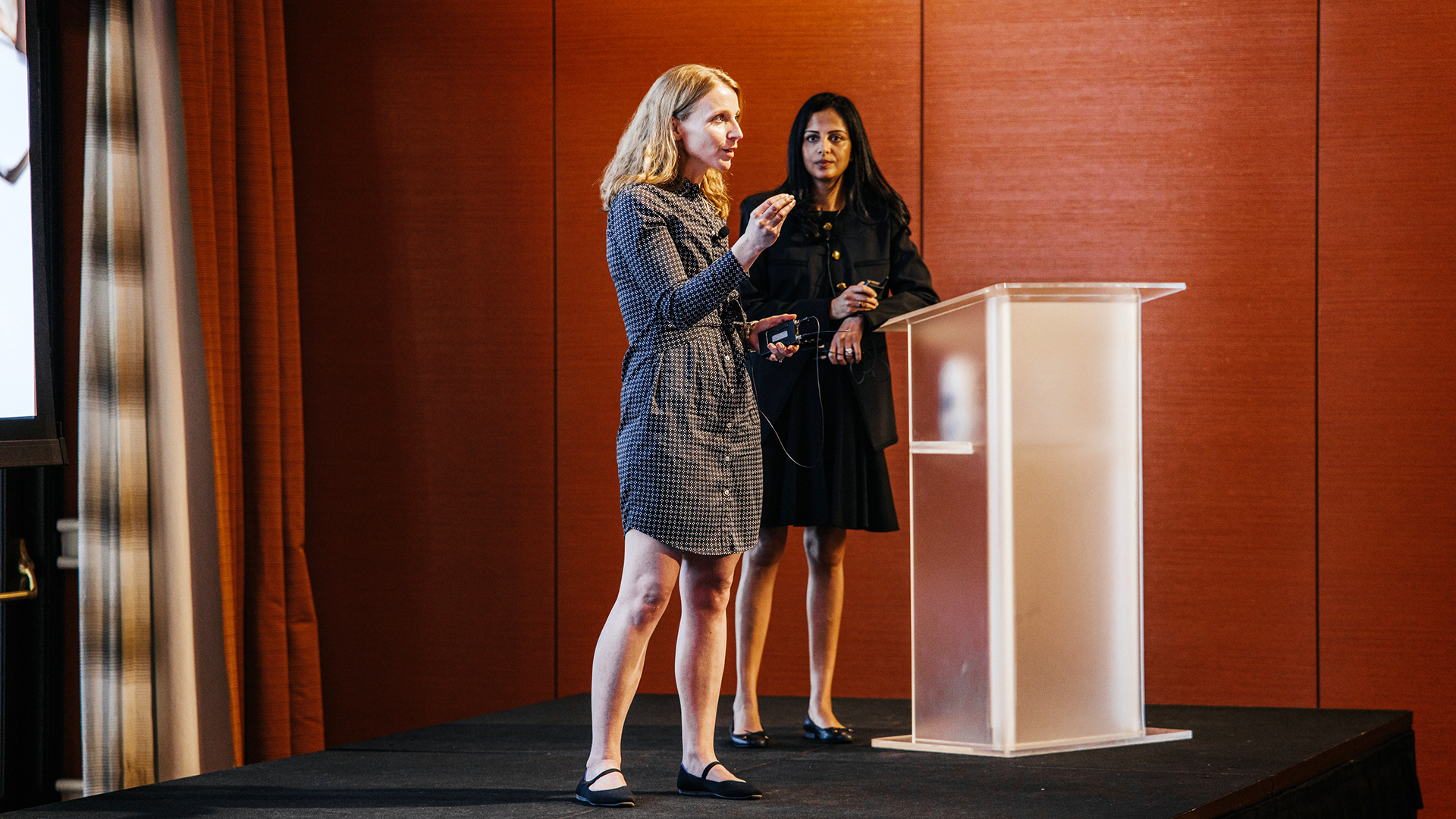Samantha Scott: [00:00:00] Thank you guys for coming. We appreciate it. We’re gonna go through and talk about some of the work that we’ve done over the last couple of years, but if you go over, I will start with introductions. My name is Samantha Scott. Truth be told, I chose my husband because I love the last name. I like the alliteration.
It makes me feel a little bit like a superhero. So when you start thinking like Peter Parker, Bruce Banner is very clearly like a theme going on. I feel like it’s working for me. I am the senior director over the experience team for Verizon Business. That is inclusive of both CX and ex, and I really truly believe that those are firmly connected with each other.
And so we have a responsibility to, to deliver on both of them. So I am the experience director in Verizon business. And really when you think about our customer base, it’s a very broad spectrum of customers. So we have everything from our small businesses, think of your local coffee shop, or even like an Etsy [00:01:00] creator, all the way up to some of the largest corporations in the United States.
We also span over to public sector, including federal accounts, down to your state and local governments and even like small nonprofit organizations. I say that because I really wanna illustrate how complex our customer base is and how differing some of their needs are. And so as we were going and setting out to tackle some of the work to improve our CX program, we decided to bring our partners in at KPMG, and I’ll let Swetha introduce herself.
Yeah.
Swetha Kumar: Thank you Sam. Hi everybody. Swetha Kumar. I’m a managing director at KPMG, and I lead our voice of customer practice for the US market. I’ve been in this space for over a decade working with. Organizations that are lower maturity from a CX perspective in healthcare, life sciences, as well as some of the higher maturity companies in big tech.
And I’m really excited, Sam, to share the stage with you today and talk about the Verizon story. But before we go into that, Sam and I thought it would make sense [00:02:00] to maybe double click on some broader market trends and then get into the Verizon story. Really three key trends I wanna be talking about today.
The first is moving from. Reactive empathy to proactive empathy. And I think we can all agree that customer experience companies that do this really well differentiate from an empathy standpoint. And so reactive empathy is where you’re responding to customer issues when they arise. And we’ve all seen examples of this, right?
You call into a contact center with an issue, the agent responds with. Empathy essentially addresses your issue, maybe gives you an offer, sometimes give you, gives you a free product or service, and basically turns that negative interaction into more a neutral interaction or a positive interaction. We’ve all experienced this reactive empathy.
Proactive empathy takes it a step further and it essentially anticipates customer needs before they even arise. And we don’t see a lot of companies do this well, but the example I wanna talk about today is Patagonia. Patagonia, as [00:03:00] we all know, is a clothing retailer. They’re heavily focused on sustainability, environmental consciousness, and they have a program called the Worn Wear Program.
And this is a program that essentially allows any time return of their products for store credit that can be used towards a new jacket. So as the customer, I know if I buy a product from Patagonia, I can return it at any point, right? One year or two years down the line. And so this way, Patagonia is anticipating that a customer may have issues.
Already has a prob a, a program that solves that, that problem. They typically take the inventory that’s returned, refurbish it, fix defects, et cetera, and put it on their ware website that then customers can shop at. And these are customers that are now aligned to their purpose. They care about sustainability, they care about extending the life of a product.
They care about reducing waste. And so in this way cus Patagonia is speaking directly to their customer base and they’re showing customers they care and they value them. Great way to build loyalty. The second example I wanna talk about [00:04:00] is really creating consistent connected experiences. And this is thinking beyond CX as a siloed function that sits.
In the corner of an organization to more a connected experience. And this is some of what Mark and Sid talked about today. Really thinking about the customer experience as a horizontal function that cuts across the front, the middle, and the back office. Because when a customer calls into a contact center, they typically have, they may have a customer experience issue specific to service.
They may have a product issue, they may have a supply chain issue. They may have a billing issue, right? And the only way to solve those issues holistically is to interact. Across the organization, and typically companies that do this well are companies that prioritize the customer experience as part of their strategic agenda and even their enterprise agenda, right?
Where CX has. A seat at the table and a company that does this really well is USAA. USAA, as many of us know, is an insurance company in a bank. They cater to military members and their families, and they have an [00:05:00] innovation capability called the Empathy Lab. And the Empathy Lab essentially trains their employees and their frontline staff on the unique challenges that.
Military members and their families face and USAA. Essentially, the Empathy Lab partners with connected devices like Apple and Fitbit to essentially monitor where members have stress or stress related conditions like PTSD. So when a member is going through their life, if they’re in their home, a connected device may dim the lights, turn on some music.
And alleviate that person’s stress. And USAA rewards this behavior by giving them discounts on their life insurance and auto insurance policies. Same with auto insurance as well, right? Members driving a car is stressed. The connected device tells ’em to pull up, maybe take a breath, USAA, rewards that behavior with a discount on their auto insurance policy.
So really making a customer feel known and seen. Again, a great way to build loyalty. And the third trend I wanna talk about is what Mark and Sid talked about today. Really being able to tie the customer experience and [00:06:00] customer experience investments to ROI. And this is a question we get asked a lot by companies and organizations.
How do I tie all the investments I’ve made in CX up to this point to value in ROI, I’ve made millions of dollars of investments and I move the needle on some metrics like NPS and csat, but how do I actually tell that story and make the business case right? The other question we get asked is, we have three initiatives we really wanna do in cx.
But we don’t know how to prioritize them. We don’t really know how to sequence them. And so can you help me prioritize or sequence those initiatives? That’s another, question. We get asked about telling the story to leadership, to the leadership team because that’s what gets you that more investment in the customer experience.
And I’ll say, Verizon Business does a really nice job of this. And Sam, you’ve done an incredible job. Of being able to tell that story around the business case, right? And really being able to prioritize your CX investments and think about what comes first, second, and third based on ROI impact. And so with that, I wanna segue to you and maybe dive into the Verizon story.[00:07:00]
Samantha Scott: Yeah. So I am gonna start by giving you a little bit of background. So I started in this role a little over two years ago and we had a few different things and I’m just gonna set the stage a little bit here. We knew three separate things. The first thing is that we had a responsibility to deliver on a CX improvement for the entire organization.
That was something that we had agreed upon and we knew that we were gonna set out to do. The second thing is we were actually pulling two separate teams together to. Form one CX program, and really one team was the more traditional CX team. They were used to creating and maintaining surveys. The other team was a field enablement organization, and this team was very used to taking marketing tools and bringing them out to our sales and service teams.
Making sure that they were trained and knew how to use them to help stimulate growth and retention in the org. So we’re bringing those two teams together and really trying to move them towards a holistic view where we could do all of that great CX insight work and then also use that skill from the [00:08:00] field enable.
Enablement team and bring it out to the greater organization. The last thing that we had was a longstanding relationship with Medallia, and at the time Medallia did the vast majority of our VOC program, but we also had nine other vendors that were supporting some capacity of CX or voice of the customer for our team, which meant we also had to do a little bit of vendor rationalization to make sure that we were a lean program with clean data insights.
Some of our big challenges was really a lack of vision, what we wanted to set out to do. We also had issues with actionable feedback, making sure that we were asking the right questions that would allow us to take action on what the customers were telling us. Was going on. And the biggest thing Anda mentioned, this is the business case justification.
So if a customer, we know that there’s an issue, we know that something’s going on with billing or with our digital portal, something along those lines, how we could use that customer frustration and turn it into a business [00:09:00] case so that we could. Justify the work that we were doing and produce a return on investment back to the business by improving customer experience.
So that was a lot of the work that we did with Sweta and her team.
Swetha Kumar: Yeah, absolutely. And just to build on that, we were extremely excited to work with you, Sam. Really two reasons. One is Verizon business prioritizes the customer experience as part of their strategic agenda. It’s also part of your enterprise agenda, right?
So CX has a seat at the table, which is really important for us from a prioritization standpoint, because you want. The directive to come from the top. The second reason we were really excited to partner with you is because. You had the resources to deliver on that promise and your ambitious goals.
You had a team that you originally had, and then you acquired four more teams. Yeah. And so you had resources to deliver on that promise, which again, is really important, right? A lot of companies have small market research capabilities or survey programs, and they have big ambitious goals. But who’s actually gonna deliver against those goals?
So with that, I’ll just take you through high level some of the work that we did together, and then I’ll let Sam get into the details. The first phase we did [00:10:00] with Sam and team was essentially enhancing the CX foundation. So this was some of what Sam just talked about. We wanted to pull back and create a north star or a vision for customer experience, right?
Where do you want your experience to be? Where is it now? Where do you want it to be? And so looking at that, we also wanted to create or think about and look at drivers across the different segments. Sam talked about. We also wanted to build a strategy and a plan for how you execute against that vision, and we built a multi-year roadmap.
Sam alluded to that, and I know you’ll talk about that a little bit more, but to essentially achieve and meet that vision and those strategic objectives and goals. From there, we said, let’s advance the basics. Let’s double click into this roadmap and this plan that we have for you. And a big part of this plan is voice of customer, right?
Thinking about Voice of customer as a programmatic approach, because Sam and team had some work that you were doing. You had some data, you had Medallia already, you were doing some surveys, but how do you broaden the scope of that and start to pull in to Mark and Sid’s point earlier in the keynote, [00:11:00] some of those unstructured sources of feedback, some of those integrations that are really gonna enrich your data.
As you solve problems and address pain points that customers have. So we did some of that work and then from there. We essentially, right now we’re helping Verizon, what we’re calling raise the bar and change the game. How do you start to now move towards the level of maturity and that vision that you set through?
As I said, evolving the Voice of Customer program, but we’re also focused on some strategic efforts around cx. From a CX perspective, we were a program called Signature Experiences that provides offers and stuff to. To customers, existing customers and new customers through third party programs. And so that’s another initiative that we’re doing to mature the CX program.
And then from there, really just wanna continue to realize value, the value that we defined against that roadmap and vision. Sam will let you get into the details.
Samantha Scott: Yeah. So I’ll talk a little bit about some of the building blocks that we have here and then go into a little bit more detail for you. So the first piece is making sure that we had a vision.
Without a clear vision, you don’t really have a path to go. [00:12:00] So our vision that we established in conjunction with the greater organization, we brought in stakeholders from every line of business, including sales service, the different segments I mentioned earlier, marketing. GTS network, all of the above.
And really it just boils down to one thing. We wanna make sure that we are driving simple experiences for our customers and our employees, and it really is just that simple for us. We also had to understand the very specific drivers of a strong customer experience for each of the segments that I mentioned.
So you go back to what I was talking about before with your local coffee shop owner. That person that owns the coffee shop is likely wearing. Multiple hats. So they are running the business, they are hiring, they might be doing ordering, whatever the case may be, even just greeting the regular customers.
And so they’re pretty busy and we wanna make sure that managing their wireless account. Is not weighing on them. That’s not something that they’re worrying about. Oh my gosh, I have to call and follow up on that because I needed to make sure I [00:13:00] got something done. Making sure that we’re driving ease for that customer is really important.
If you go over to some of the larger enterprise customers, they have an expectation for us to deliver as a strategic partner. They are in the growth mindset and making sure that they have the ability to expand and continue to innovate, and Verizon needs to be there along the ride with them. So there is that expectation in place and we wanna make sure we meet that need as well.
I. And then when you go over to the public sector, and honestly, depending on the size and scope of the organization, there could be a blend of both of the things that I just mentioned, as well as a level of empathy. We have a lot of public safety accounts that we work with. We wanna make sure that we are there and showing up as a partner for the firefighters that happen to take care of the wildfires out west.
So all of the above. We wanna make sure that we’re delivering on the very specific driver for each of our customers because they do have unique needs. And the final piece of that is the strategy and roadmap, so I’m gonna double click into that on the next slide. But really making sure that we have [00:14:00] that three year view into the future so that we brought the organization along with us, so it’s not just me saying, all right, this month we’re gonna deliver on X, Y, Z, and next month it’s that.
Let’s give them a long term view so that we’re bringing the company along with us and making sure that we can solicit ideas from the other, from other parts of the organization as well. So that meant that we had to get very serious about our operating model, making sure that everything that we were pulling in, all of the great insights that the customers were providing us, that we were driving action off of that.
And so in partnership with KPMG, we actually developed an operating model. Where we have the insights, we take it to the field, we make sure that we have the complete view, we build the business case, we do something about it, and then we monitor it to make sure it’s working. And when we talk about insights, I wanna emphasize, we do absolutely use.
NPS, we use our survey scores. NPS gives us a great competitive view. Our survey scores give us that very transactional feedback, but we do actually [00:15:00] use a lot of other data to help feed our program. So part of that is operational data. Things like first time resolution, making sure if a customer is calling in, that we’re taking care of them the first time that they present an issue to us, as well as things like network ticket volume and service level, making sure that if they report an issue, that we’re taking care of that in a timely manner as well.
All of that also combined with propensity models that we’ve had in place for quite some time, helping us to understand growth and retention opportunities. They’re actually enhanced by our voice of the customer data, all of our customer feedback, making sure that we get that complete view of the customer experience and what might be happening at any moment in time.
So with all of that great data, we’re able to really enact the full model. And so I’ll give you an example of one recent win that we had with our operating model, and that is with our bill redesign our on the Verizon business side of the house. We had not redesigned our invoice. We had the same view for the last [00:16:00] seven years, and that might not seem like a crazy amount of time, but for Verizon.
That may as well be centuries, right? So if you look back to 2017, we have implemented new price plans, new promo structures, we have started selling new products. All of that is presented on the bill, and we need to make sure that it’s presented in a way that it’s easy to read and easy to understand. And.
Let’s face it, like no one wants to pay a monthly bill. I got it. But it should not be a frustrating or confusing experience. And that is what our customers were telling us, raising their hand and saying, I don’t get it. I don’t know where anything is. This isn’t adding up. And that led to a level of distrust and that’s not something we wanna have with our customers either.
So we took all of this customer feedback and we brought it out to the field. We said, Hey. Service teams, sales teams, the ones that are meeting with our customers on a daily basis. Tell us more about what is happening in that billing experience. Why [00:17:00] is it not working? Why is it confusing? Why is it driving calls into the business?
And we got a lot of really great information from that, making sure that our promos lined up in a way that made sense that the price plans were. A description that made sense for our customer. On the other end, they knew exactly what they were paying for because we clearly stated it, and it no longer became like a complex interaction.
So we took that all out to the field. The field gave us great feedback and we were actually able to use all of that to help build our business case. ’cause of course, if customers don’t understand their bill, they’re gonna call in. That drives cost into the business. It potentially drives credits because maybe there’s a rep on the other end, and that’s also confused.
So we worked with KPMG and we actually built out, okay, where are all of these cost adding points in the bill journey? And we used that to build out our business case. And over the course of 2024, we worked through a bill redesign plan that has now since been launched to a third of our business customers.
And [00:18:00] throughout 2025 we’ll be a hundred percent of our customers making sure that we’re. Continuing to drive that message of simplicity in the organization.
Swetha Kumar: That’s great and really powerful and a lot of companies. To Sam’s point, we did a lot of work together, right? Invol in evolving this voice to customer program from a more traditional program, which Sam and team already had, right?
They had rich sources of data coming through the platform, through their survey program. They already had Medallia as their voice to customer technology, but really needed to mature the program. From a best practice standpoint, right? What is industry best practice? What is best practice we can bring from other industries that are doing it well, and then layer that on with some training and empowerment of the team to really adopt the platform as well as processes.
Sam talked a lot about how we’re trying to move from insights to action, right? Platform does a great job of pulling data and giving us rich insights, but what do you do with those insights and how do you actually drive behavior change and action is really important. So we focused on that as well as governance, right?
When you think about the customer experience, as I said, as a horizontal [00:19:00] function, you do wanna pull cross-functional stakeholders into the mix and talk about your everyday issues, and Sam does a really nice job of that. With the steering committee she put together that meets every month and talks about emerging issues to solve problems, and that’s a really key piece of an operating model, right?
It’s important to have the data and the tech, but how do you now train your people to deliver these right processes and to have the right governance mechanisms in place? And then finally, we talked a lot about value realization. This is really important to us, right? Not just to set KPIs and targets, but how do you continue to realize the value that you’ve set for your organization?
And we continue to focus on that with Sam and team I. And with that we get to key outcomes. We got some great work done together. We achieved some really great outcomes together. And when we set out, we said we wanna be able to quantify these investments in cx. And as you can see, we did a nice job of that.
We wanted to mature the program and we’ve been able to see that growth and maturity in the program. We assess Verizon’s maturity twice a year to make sure that we’re continuing to move the dial on [00:20:00] maturity. We’re also seeing some process efficiencies on the right inside, around inside generation.
And program simplification.
Samantha Scott: Yeah, and I honestly, when you look at the numbers on the screen, I think the biggest message here is what we did to simplify what was actually a very complex voice of the customer program. It was built about a decade ago, and over the course of several years, we just tacked on things and it became more and more complex.
So what we did was we really strove for. Simplicity and efficiency over the last couple of years, making sure that everything was more accessible, that it was more digestible to people who are not using the platform every single day. But the biggest thing is that it’s enabling us to evolve at a much more agile rate than we did previously.
And a good example of that is actually I told you that I lead the CX and the EX program, but the EX program did not come in until about a year ago. They were using a completely different platform for their survey [00:21:00] program and research. And actually, because we have. Simplified our voice of the customer program so much we were able to start bringing in the voice of the employee and are using the agile research function on the Medallia platform to make us far more efficient than what we were in the past.
So we could not have done that had we not decommissioned several roles and, really work to simplify the overall program. A lot of those work that we’ve done is really gonna allow us to evolve more and more over the next several years as well. Yeah. Okay.
Swetha Kumar: Absolutely. And that gets us to questions.
Q+A: Joseph Hong Bank of America. When you create your strategy, what are the key input? Is it based on use cases or is it based on a very specific criteria? And how do you have a quantified method? You try to. I think you see the measurement. I saw the slide mentioned that. How do you quantify to influence your priority? And lastly you talk about ROI. How do you calculate your r oi? You mentioned about [00:22:00] 350% of r oi. What are the benchmark points that you come to the 3, 3 50 of percent of ROI. Thank you.
Samantha Scott: I think we can team tag team that one.
But from a strategic standpoint, how do we build out our strategy? Honestly, we listen to the greater organization. So we do have all of this great data, the customer feedback, we know what is trending, what’s causing the highest point of friction. But we also work very closely with leaders and frontline teams in every single part of our business.
So it’s really important to know. Their five year strategy and make sure that it’s aligned with our program from the CX standpoint. So we do work very closely with the greater organization to build out that strategy. But we also like to look at industry trends, which is of course where KPMG comes in.
I’ll let you talk a little bit about that, but I will touch on the ROI after.
Swetha Kumar: Yeah, absolutely. Yeah. From a strategy perspective, we really like to create a plan that encompasses everything around the operating model aligned to goals, but also when we define a vision, we wanna make sure that vision is an [00:23:00] achievable vision.
And so we have sub KPIs that help achieve against that vision. And so when we build a strategy and a roadmap. Each of those projects are tied to KPIs that we’re driving within each of those projects, which, as you can imagine, they’re all different. And we’re tracking them continuously based on the project that we’re executing.
And then from a prioritization standpoint, from an ROI perspective, that’s definitely a lever we look at. We also look at resource availability and that type of thing as well. And then as you look at prioritization and ROI calculation, as I said, there’s two ways to do it. There’s one that’s the retrospective calculation where we’ve said.
We’ve invested millions of dollars in the customer experience, we’ve maybe moved the needle on a metric like NPS. How do we now use customer lifetime value as a base to assess how a customer has moved from a segment like a detractor to a passive or a passive to a promoter? And we use that delta to calculate ROI from a retrospective perspective.
Samantha Scott: But I do wanna hone in on the ROI question because I have to tell you, when I first started doing this type of work and I went to the [00:24:00] finance org and I say I need X amount of money to do this work to improve the customer experience. That conversation with the finance team is hard because they look at you and they say, how do we get dollar signs from NPS?
I don’t get it. And so you really have to go past survey data for sure. And so the survey data tells you where there’s a hot spot. But if I go back to the example with the bill simplification, we really looked at, okay, what is a confusing bill? Like how is that adding cost to our business? And we worked backwards from there.
What calls is it driving in? What credits are people applying because they don’t understand it? Executive relations, all the above. And then you work backwards from there and really pull out like, how can I simplify this, create a better experience, and then take all of this cost outta the business as well.
Q+A (2): Agne Grandin from pods. So you were talking about the billing simplification. You said earlier that you use VOC and VOE. How did you go about that? Did you actually [00:25:00] literally ask employees Yes. Their recommendations?
Samantha Scott: Yes. And I love that question because the VOC, the voice of the customer program that’s what told us that there was an issue going on, that there was something going on with billing that just wasn’t sitting right with our customers.
And so we did set out, and we did recognize that our bill’s pretty outdated and it had not been looked at for a while. And these are the things kind of high level that I immediately see could be worked on, but as part of our. Employee Experience program. We’ve also run something called Your Voice Matters, which it’s a program within Verizon business.
Where we have around a hundred per participants per wave, and we bring them in and we wanna hear their feedback. Like we bring very specific topics to frontline sales and service employees and say, I want you to tell me what’s going on here. What recommendations do you have? What feedback do you have?
What are you hearing from your customers? And so we pulled up an example of a bill in one of these sessions, and we let our employees give us every bit of [00:26:00] feedback that popped into their head. What is wrong with this? Have, is this a familiar conversation for you? What recommendations do you have to help resolve it?
And that helped to build out actually the roadmap that we had put in place for simplifying the bill. So it really was conjunction of both of them.
Q+A (3): Hello Cole Halligan from Haida Hotels on the roadmap. When you’re looking at your maturity, one of the items was moving beyond surveys. I’m just curious are there any ideas you have or things you’re focusing on?
To achieve that,
Samantha Scott: I am looking at, I’m looking at someone very particular right now because she leads this program for my team. And so she had a big smile on her face when you asked that question. So yes, like we are actually in the process of building all of this out. So we will be pulling in social media feedback.
So we do have Verizon in business social accounts where customers can be pretty active and they will tell us their thoughts on. Some new device that we’ve launched, a new plan, any of the above. And we’ll, we are creating integrations that will start to pull that feedback [00:27:00] in. We’re also working on chat transcripts because customers frequently will chat in, whether it’s their digital experience or for service issues or anything like that.
And call transcripts as well. So we want all of the data to make sure that we can analyze what’s going on at any channel, at any point, at any experience.
Q+A (4): That’s great. Thank
Q+A (3): you.
Q+A (4): Nick Duffin from the Boston Symphony Orchestra. I’m just curious, a related two parter question. As you embarked on this process, did it come primarily from a top down directive or was it more of a something you identified amongst yourselves that was then proposed to leadership?
And then as you went through the process, is it something you felt like you had a great deal of? Support from leadership from the outset and as you went along, or did you feel like there was a lot of that pitching and buy-in as you went along the process?
Samantha Scott: So when you say the process, do you mean like the overall CX transformation that we’ve been working on?
Yes. Yeah. So when I first started. In this role. It [00:28:00] was a leadership directive really across all of Verizon. So I stepped into this role and they said we need to do something about customer experience. And so initially it was that, but I will say because it was an enterprise wide initiative, I really had a lot of support across the entire organization.
Everyone from my own boss up to his boss’s boss. And even on to our sales executive leaders, they were really honestly very engaged. When I talked about creating the CX vision and getting that feedback from our sales and service and marketing and all. We pulled together a workshop and we had representation from SVPs all the way down to sales reps who work in our retail stores, and they were working together to build that vision.
So it really was a collective effort.
Q+A (5): Hi, Matt Haney. They do, when you were talking about the billing journey, journeys can obviously have a lot of different departments that they touch. Can you talk a little bit about [00:29:00] some of the ways of working or ceremonies that you have with all the different players that need to be involved and how you convince them that it’s time to do something different when they probably have their own priorities that they set last October.
Samantha Scott: For sure. Last October is being generous, right? We create our roadmap so far in advance that we’re constantly working with our peers in different organizations to negotiate priorities, make sure that. If they are doing something like a new pricing structure, that of course will impact the work I’m doing on bill redesign.
Like we need to make sure we’re working together on that so that I’m not designing something that doesn’t work with what you are doing. And I think the way that we’ve actually been able to build out the strong partnerships is with the CX Council and Steer Crow that we mentioned earlier. ’cause that literally brings everyone across the business.
Into one conversation about a particular topic. And if I am talking about a billing journey and something that we’re working on to [00:30:00] simplify that journey, but we know that the marketing team is on and they say, Hey, we’re actually working on something that’s gonna, that’s gonna be something that we need to consider here.
That is a great opportunity for us to have that conversation. And it really has been really beneficial. To make sure that everyone is in one conversation and kind of marching towards the same direction. Even if we might have been going divergent paths at one point, we find our way to come together.
Q+A (6): So I wanted to know I actually had two, three questions. Great work Samantha, and the thing is you had mentioned in the beginning about going from one team to borrowing two, three teams or something, or getting two, three teams. Like I’ve heard from many people about challenges in terms of. Yeah, convincing to get the kind of resources in terms of manpower to, establish a journey like this.
So if you’d like to talk about a little bit about exactly what that strength change was and how you achieved it. The second question was if there’s anything you can talk about. In slide eight, you talked [00:31:00] about how you went from insights to action. If you can talk about a couple of meaty examples of how you did that’d be great.
Samantha Scott: So I’ll start with the resources conversation. And I think we have all in this room, been in the boat where you have to have a conversation with your peers, with your leaders and say, there’s so much work to be done and I don’t have enough people or resources to do it. And negotiating for additional headcount.
That’s a hard conversation, right? But I think what we were able to identify is that there were actually a lot of these resources that already existed in the business. They were already doing very CX centric work, whether it was our employee experience team or we brought in a CX and a field enablement team.
We also had people working on signature experiences. So these were all things that, they were doing CX work, they just weren’t under the umbrella. And actually by bringing them under one cohesive team, we were able to be far more efficient. And I think we found a connected thread [00:32:00] that didn’t previously exist.
So it’s not always about hiring incremental and making sure that we’re growing, but making sure that the resources that currently exist come together. For that common goal as well.
Swetha Kumar: One of the things that was really important to us, and I think I mentioned this earlier, was Medallia was pulling in all the right insights.
So it was about, okay, let’s move from some of those structured sources of insights to unstructured sources of insights, which we’re doing to evolve the program. But as we started to move towards action, there were some pilots that we wanted to run with Sam’s team to make sure that the team knew how to consume the platform and use it effectively, right?
So you have these insights coming out of the platform. How do you action on these pain points? How do you prioritize those pain points? And those were the conversations that Sam, we brought to the steering committee to help prioritize for second and third. Now you have a team. Of accountable people trying to solve the same problem.
And then it becomes a, okay, who’s gonna do it and how do we do it right? The what questions taken care of when you have a good insights to action operating model and process, and then the how is a lot easier and very contextual based on [00:33:00] the organization.
Q+A (7): Hi, great job in your presentation. My name is David Hens.
I work for NCR at Leos. I’d like to hear a little bit more about your vision statement. Was that a vision statement? On how you would treat your customers? Or is that a vision statement on what your program was, trying to achieve for the company or for employees?
Samantha Scott: So I do wanna call out because he is a former Verizon employee, so thank you for your question.
But I will tell you, so when I talk about the vision was really like how we wanted to build out the program. I forget who this quote is from, so I do apologize, but there is a quote that I really like where it’s something along the lines of showing respect for the person on the other end by removing points of friction in their journey.
And that’s something that resonates with me in particular as a CX leader. When I think about that I think about making sure that we have simple interactions for customers and employees, and that’s really how we built out [00:34:00] our vision. I. We did it through a workshop, like hands cards on the table. We did it through making sure that we had representation across the whole organization and we collectively built out the vision.
But when I talk about driving simplicity it’s removing those points of friction, and that’s what we’re trying to build our program off of.
Q+A (8): From Verde. If you could share more about what were the challenge that you faced and thinking ahead what do you see as the main opportunities?
Samantha Scott: I would say the biggest challenge we faced was making sure that all of the data could be centralized into one place.
I, I mentioned we had nine different vendors supporting some level of VOC or CX at the time, so all of this great data and feedback lived in disparate organizations, and by the way, it did not feed back into our internal data source. So making sure that we had that connectivity back to our internal data source so that we could.
Really start to enable [00:35:00] dashboards internally, scorecards connected to other operational data. All of that was really important. So that was probably our biggest challenge, just making sure that we’re bringing it all together in one space so that we could do something with it. Because if it lives in all your, you’re spending your time searching information down versus being able to take any action off of it.
So we solved it through actually a lot of hard work where we, the team had to roll up their sleeves pretty pretty hard. So we went through a vendor rationalization process with KPMG. Part of that was super easy, so we found, we had redundant contracts where we had vendors that were basically serving the same purpose.
But we were paying multiple people for it. So we turned some of those down. We worked with KPMG to do a proof of concept on a couple of other vendors to make sure that we were making the right choice on our final platform. So really turning down some of the redundant contracts was big. And then working through our internal organization to al also initiate those data feeds.
So anything [00:36:00] that Medallia was pulling in from a customer feedback standpoint also needed to come internally. So that we could use it to start to connect to some of our more operational daily data feeds.
Q+A (9): Kit Tech came from LG Plus and we are a Korean tele combination com telecommunication company.
So we have, we really interested in ROI and NPS, we do research before, but we didn’t find any clue between MPS and ROI. So I’m curious about which part of journey you focused on and I wonder what indicator you used to refer, make a decision.
Samantha Scott: I will tell you, we don’t necessarily use m. NPS to Redu to produce the ROI.
So NPS from a Verizon business standpoint is used to give us a competitive view. So it allows us to know what’s happening in the industry, where our opportunities are, and then we do drill it down to [00:37:00] some of the different journeys. So if we understand that the digital experience is very strong.
But the assisted experience is not as strong. Then we know where to focus on what we need to do. But the ROI itself is built off of actually going a layer deeper. So we use our VOC data to understand if MPS is telling us that our billing experience or our digital experiences is where we need to focus, then we’ll look at some of our VOC data.
We will look at our operational data. To understand what exactly is happening and where is it adding cost to the business. And that’s really where our strongest ROI comes from is the cost reduction because there are so many points of friction that exist and they add costs to the business. ’cause customers are having to call in to get their issues fixed.
They’re asking for credits, they’re maybe going through multiple channels to get what they need at the very end. So that adds a lot of cost at the end of the day. And when you remove all of that cost, [00:38:00] that’s really step one. But the other piece of it is if we drive a really simple and positive experience, then we have that really great growth opportunity as well.
So that’s actually where we build our ROI, not necessarily off of NPS that’s more of a broader landscape. But the detailed data, the operational data the daily VOC feeds, things like that.
Q+A (2): Ladies, I appreciate it. Can we get a round of applause for the.
